Are you ready to uncover the wonders of Kruger National Park’s wildlife?
From the majestic Big Five to the lesser-known but equally fascinating Small and Ugly Five, Kruger is a world-renowned safari destination teeming with diverse animal life.
Join us on our two-month self-drive through Kruger, from south to north, where we share our unique experiences and insider tips.
Our journey, filled with unforgettable encounters from lions on the prowl to the elusive leopard and rare pangolin sightings, offers a glimpse into the heart of this untamed wilderness.
With each story and photo, we bring you closer to the essence of Kruger’s natural beauty. We captured wild dogs playfully blocking our path, a leopard and her cub sharing a meal, and a lion pride feasting on a buffalo.
Let’s embark on this adventure together and discover the extraordinary animals of Kruger National Park.
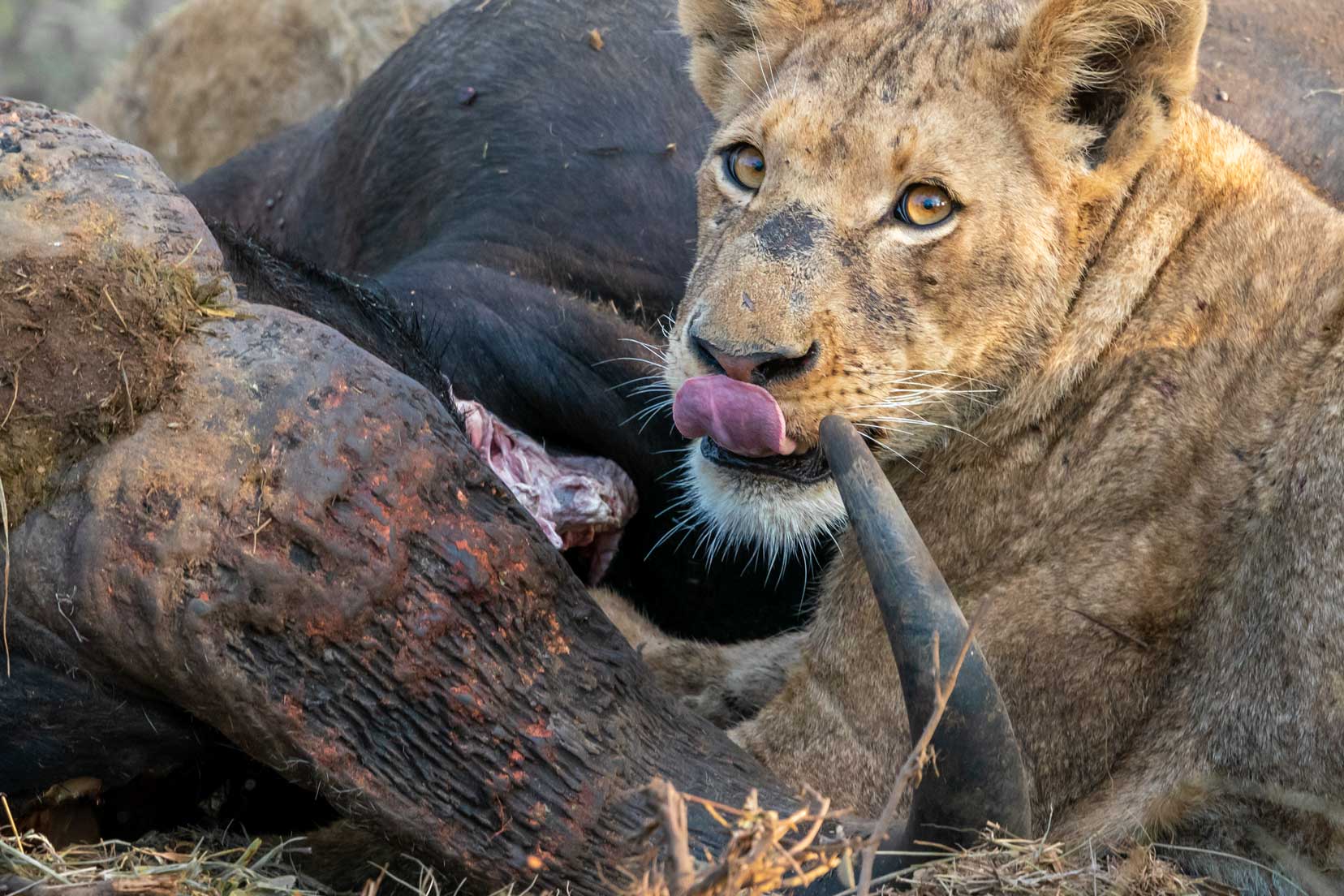
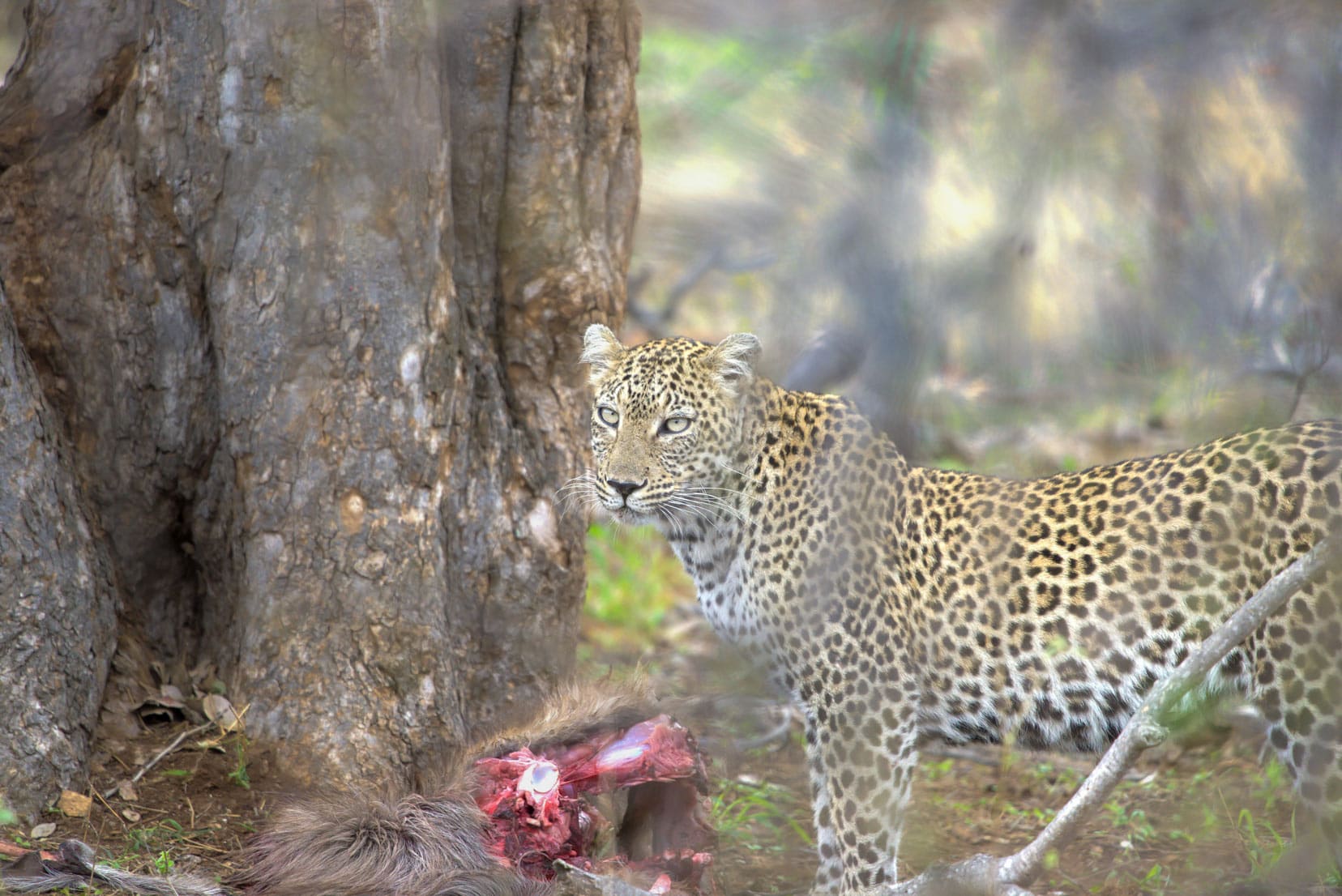
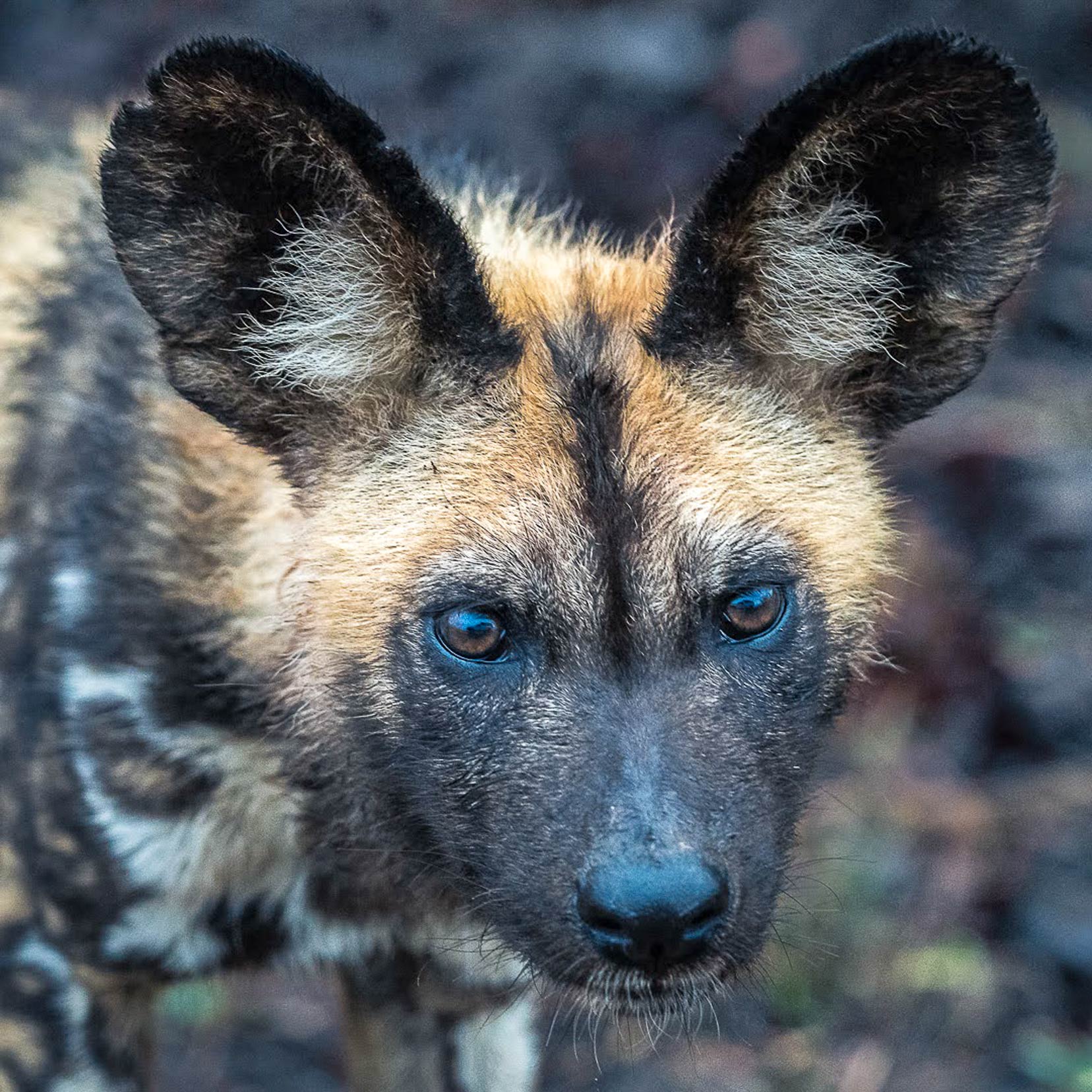
What’s in this Animal in Kruger’s Article?
What secrets does Kruger National Park hold? In this article, we dive deep into the heart of Kruger, sharing our personal safari adventures.
Here’s what you’ll find:
- Our Kruger Stories: Engaging tales and close encounters with Kruger’s diverse wildlife.
- Top Spots for Wildlife Sightings: Our favorite locations for encountering Kruger’s majestic animals.
- Timing Your Visit: Insights on the best times for wildlife spotting in Kruger.
- Why Choose Kruger for Safari: Our take on what makes Kruger a premier safari destination.
- Visual Journey: A rich collection of photographs and a captivating video bringing Kruger’s wilderness to life.
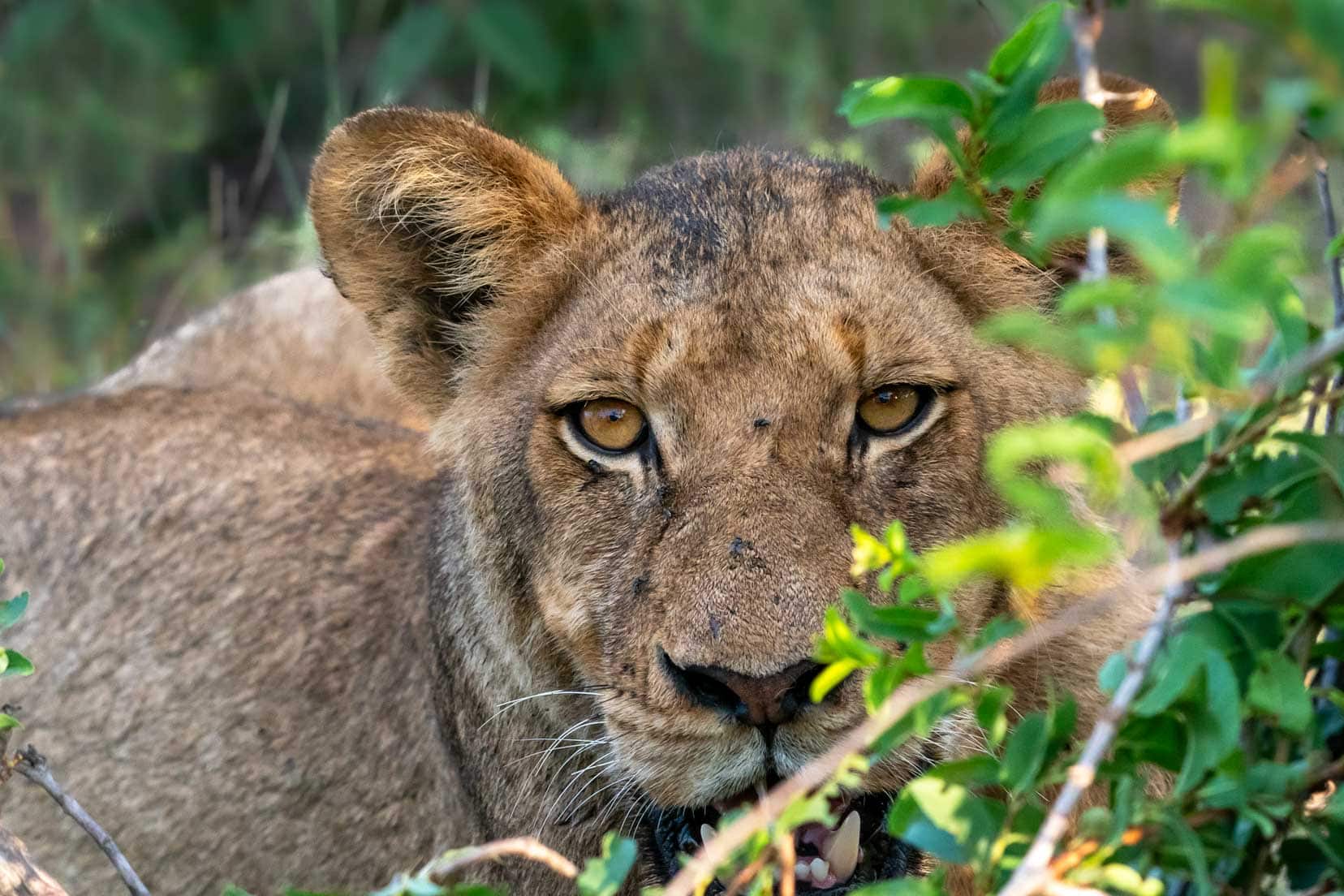
To look a lion in the eyes, hear the rumbling murmurs of elephants wallowing in mud and watch the antics of African wild dogs (also known as painted wolves) darting in and out of bushes …
That is just part of the wildlife magic to see in Kruger National Park.
Lifejourney4two
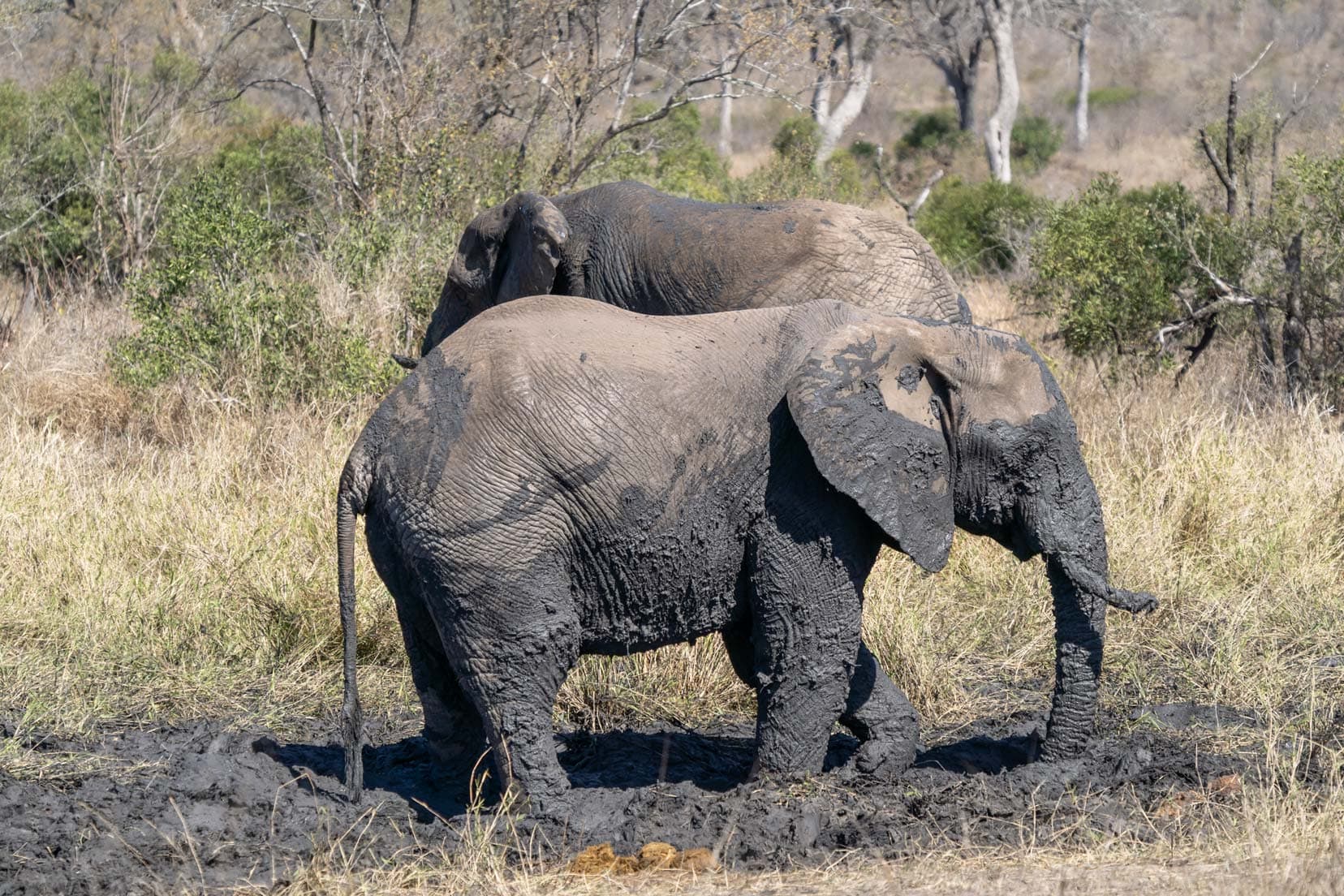
VIDEO: Our Kruger National Park Animal Sightings
Jump right in amongst the wildlife of Kruger here:

A Little Bit About Kruger
Before we delve into the incredible iconic African animals you’ll find in Kruger, let’s start with some information about Kruger National Park.
Kruger National Park, a renowned safari haven and one of Africa’s largest game reserves, is an expanse of wilderness stretching nearly 20,000 square kilometres across South Africa’s northeast.
Imagine an area as big as Wales, teeming with diverse ecosystems, from dense bushveld to vast savannahs. It’s a place that pulses with wild energy.
Home to a staggering array of wildlife, Kruger boasts over 500 bird species, 147 mammals, and a rich tapestry of reptiles, fish, amphibians, and trees. These impressive numbers, straight from SANParks, highlight Kruger’s ecological wonder.
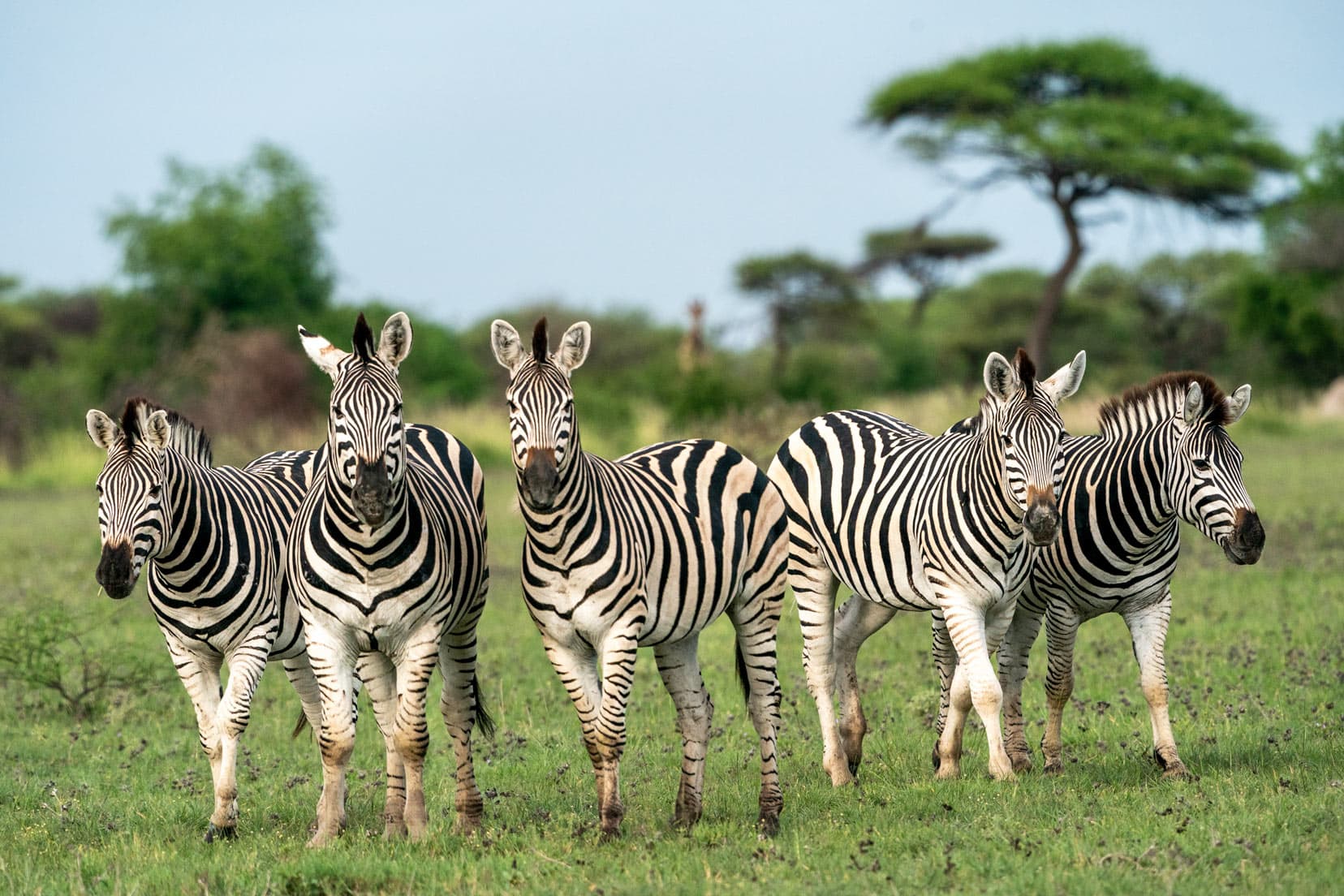
Kruger National Park Map
Navigating this immense park is easier with our detailed Kruger National Park Map.
The map highlights key areas, including rest camps (marked with purple houses) and significant rivers and roads (in blue). Use the map to plan your route and ensure you don’t miss any of Kruger’s hidden gems.
To get the most out of this map, expand it using the square symbol on the top right. You’ll find a key to the symbols on the left-hand side, helping you plot your journey through this magnificent park.
Quick Overview: List of Animals in Kruger
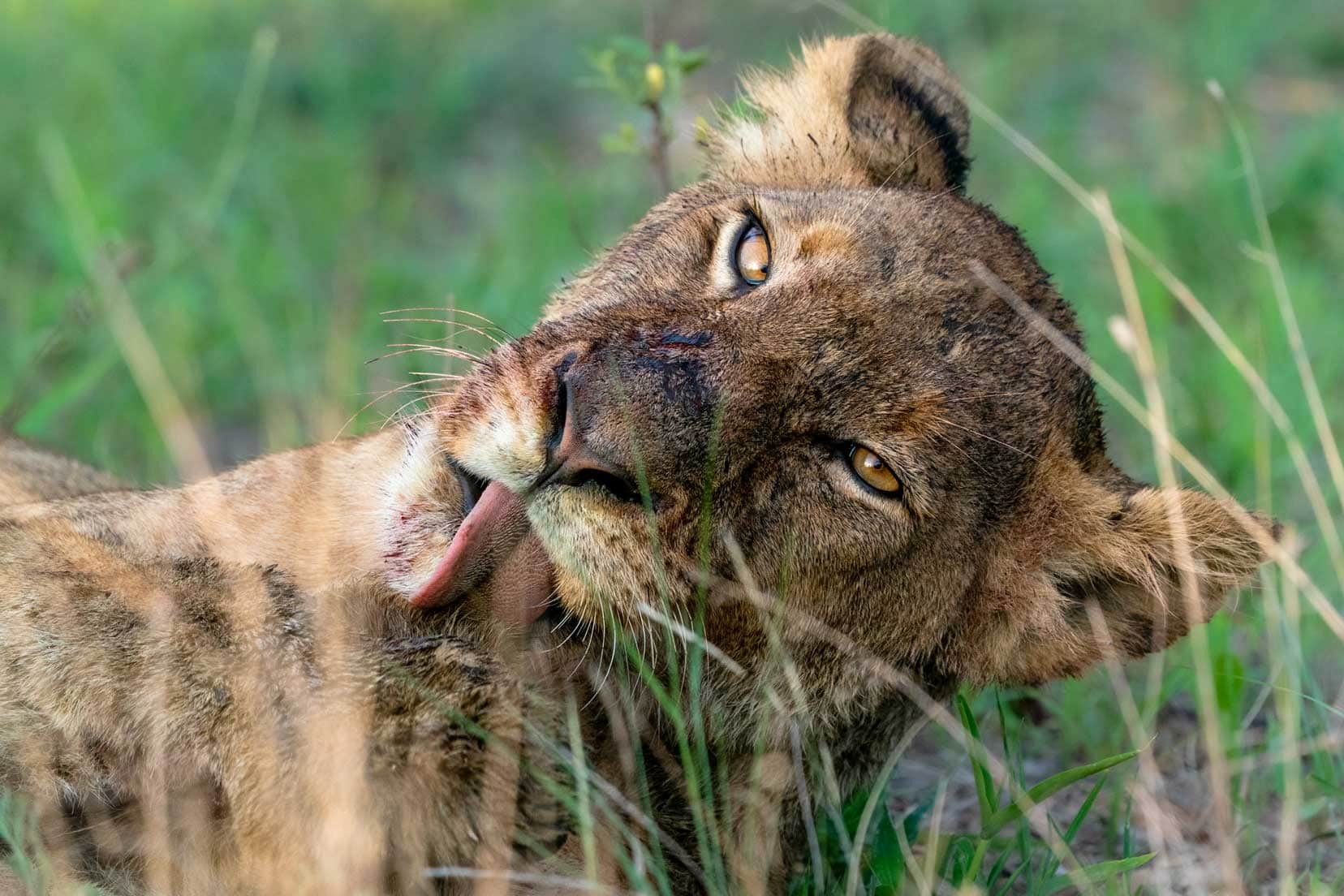
The Animals in Kruger National Park
Kruger National Park is a wildlife enthusiast’s dream, boasting a diverse array of animals. Get ready to capture these moments; ensure you’re well-equipped with the right photography gear.
We’ve put together insights, sighting tips, and safety advice for Kruger’s most iconic animals, including the Big Five, the Small Five and the quirky Ugly Five!
If our time in the bush has taught us anything, it’s that nature is unpredictable. You cannot guarantee any wildlife sighting, but you can take steps to nudge the odds in your favour.
Everyone seems to want to see the Big Five, but seeing these iconic animals depends on various factors, such as time spent in the park, your driving routes, and a lot of luck sprinkled in as well.
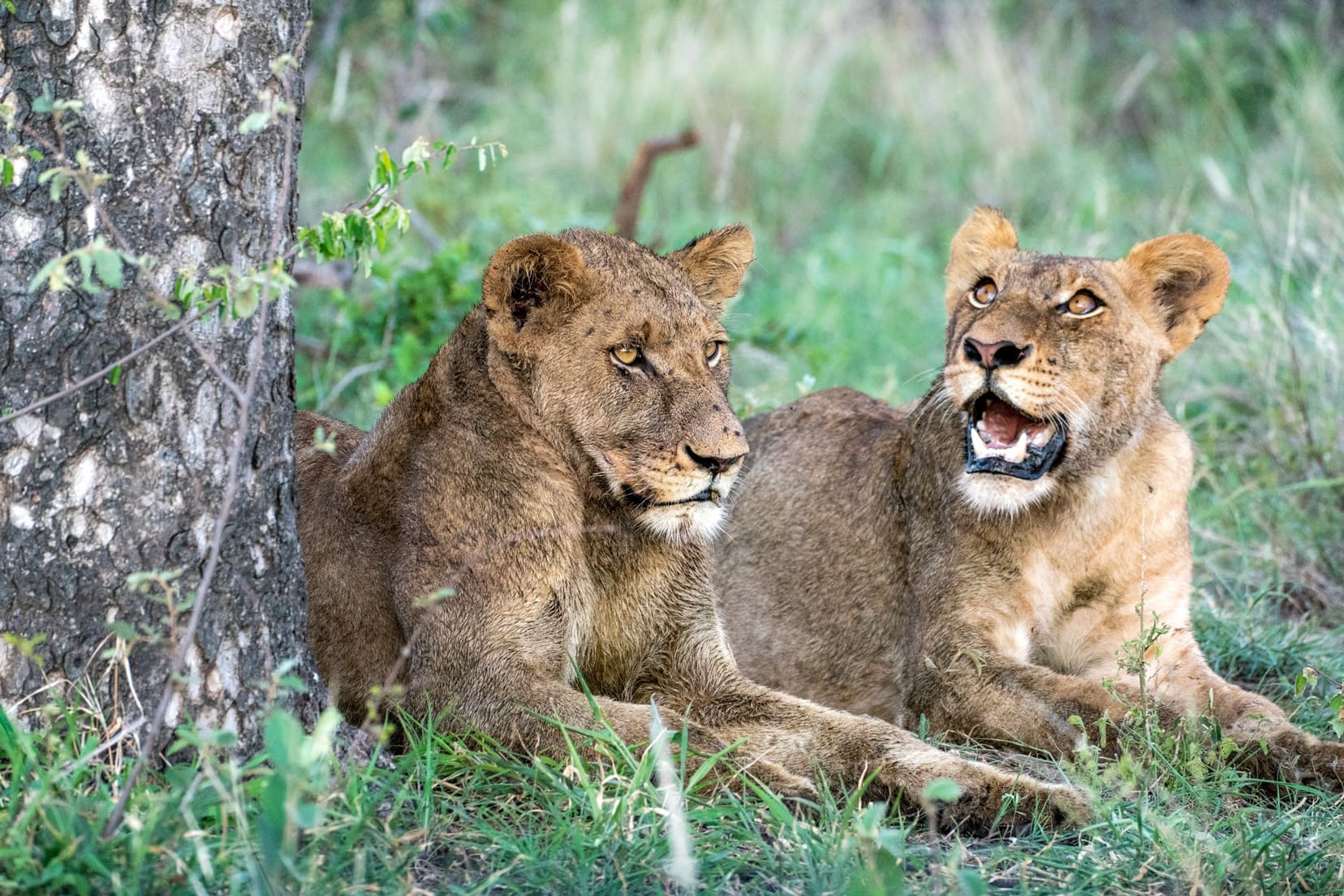
Planning a Trip to South Africa?
- 🚗 Hiring a car? We recommend getting a quote from DiscoverCars
- 🚐 Hiring a campervan? We recommend Motorhome Republic
- ⛑ Arranged your travel insurance? Compare quotes from World Nomads & Safetywing
- 🪪 Order your International Driver’s Licence online here
- 🏩 Booked your accommodation? We use Booking.com to find the best deals
- 🐾 Is someone pet-sitting for you? 🐾 We use and love TrustedHousesitters
- (Get 25% off at checkout for new memberships with our discount code: LIFEJOURNEY25)
1. Lions in Kruger
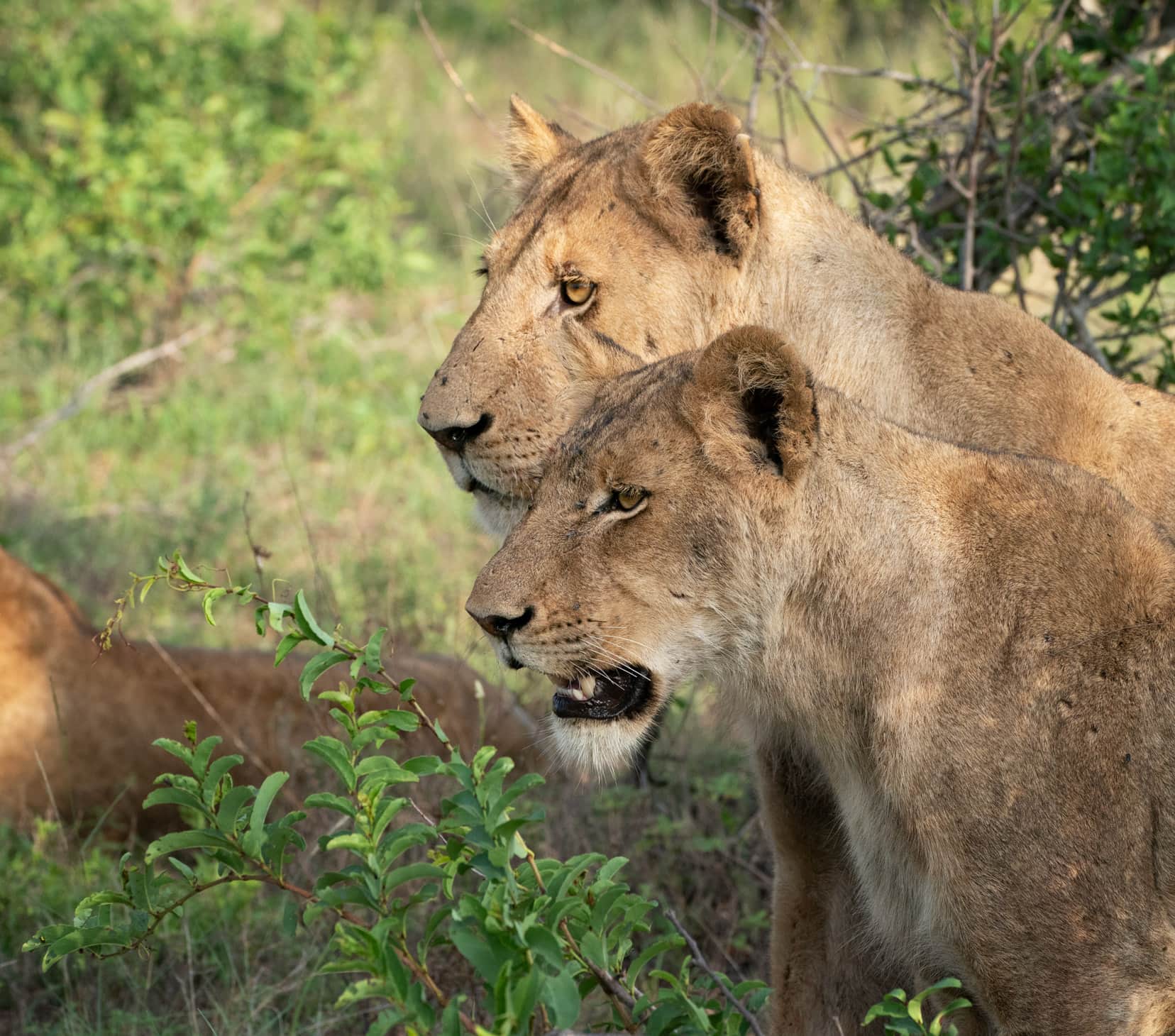
So, does a lion attack at first sight? That’s what I thought before arriving in Africa.
Well, apparently not. The theory isn’t the same for nighttime though, but lions aren’t interested in you during the day if you are in a car.
I soon learnt that I didn’t have to quickly wind my window up every time I saw one approaching. In fact, the lions in Kruger are completely habituated to vehicles, so they are pretty chilled about having cars around.
Kruger lions wander along the road with a couldn’t-care-less attitude to the rows upon rows of cars, all with eager passengers straining their necks to get a good look at these majestic creatures.
We had that privilege on more than one occasion – and, luckily, had front-row seats.

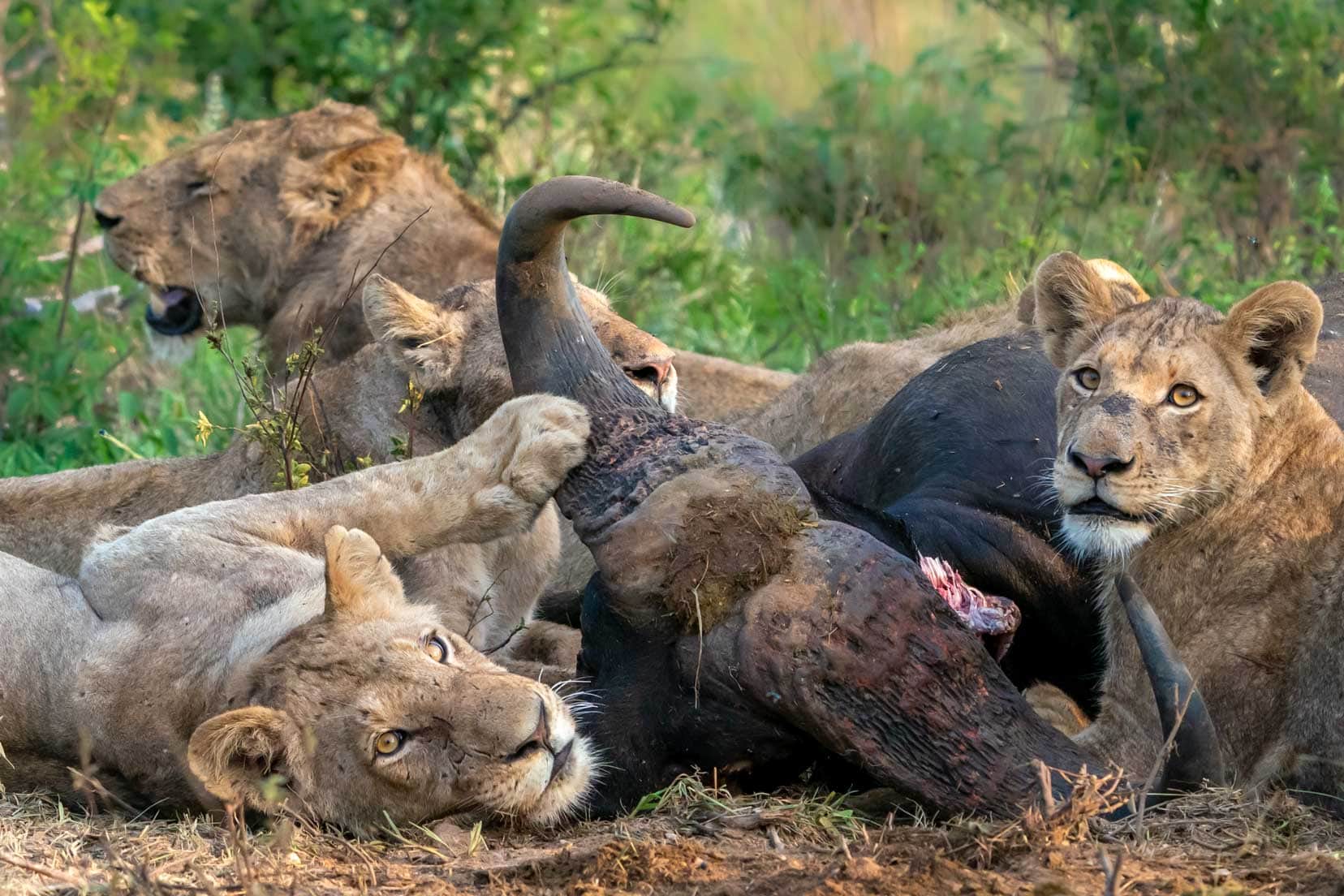
Most times, we found ourselves watching sleeping lions. We became excited at the slightest yawn or momentarily glance our way. But one day, we had Lady Luck on our side and stumbled upon a pride that had recently taken down a buffalo.
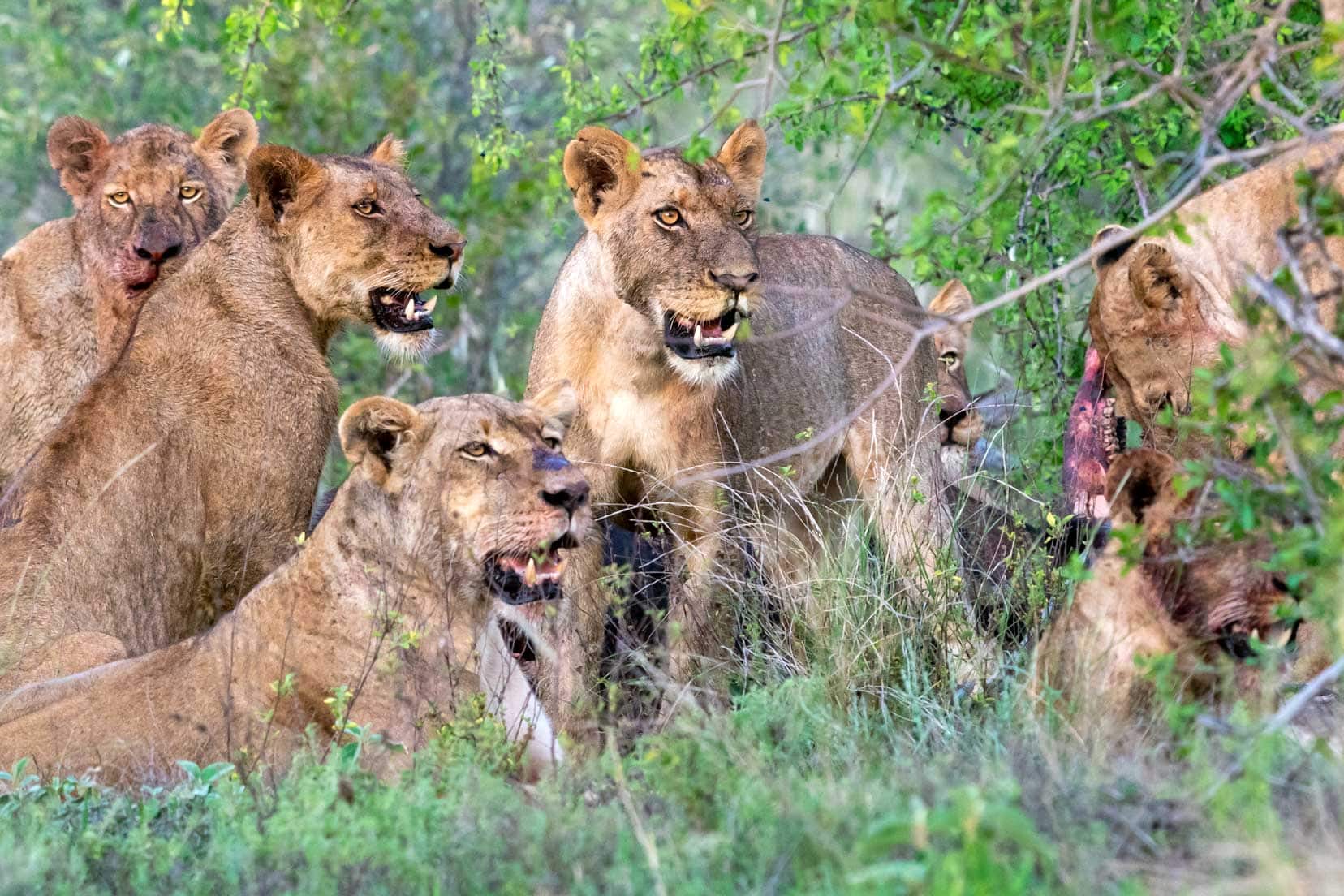
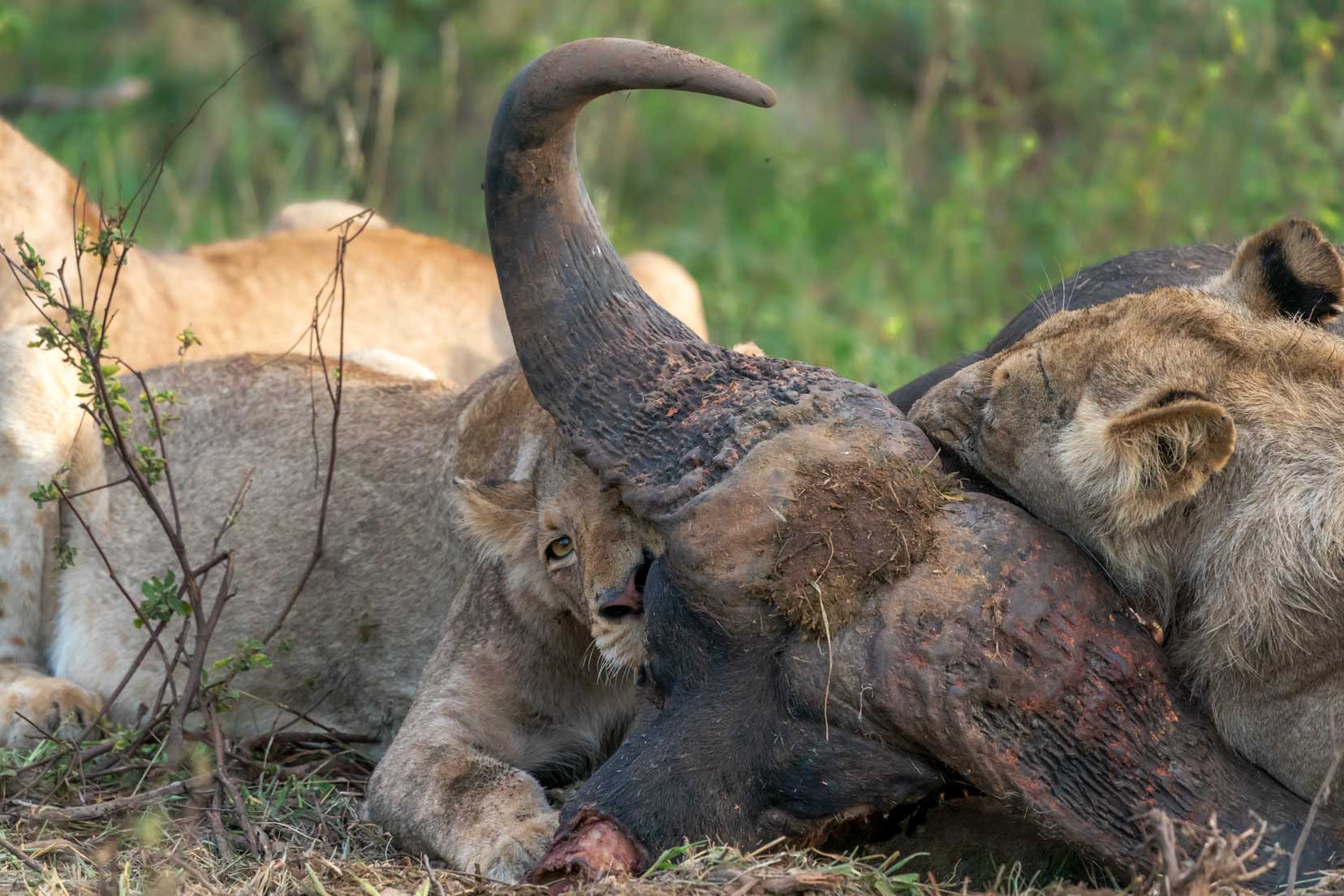
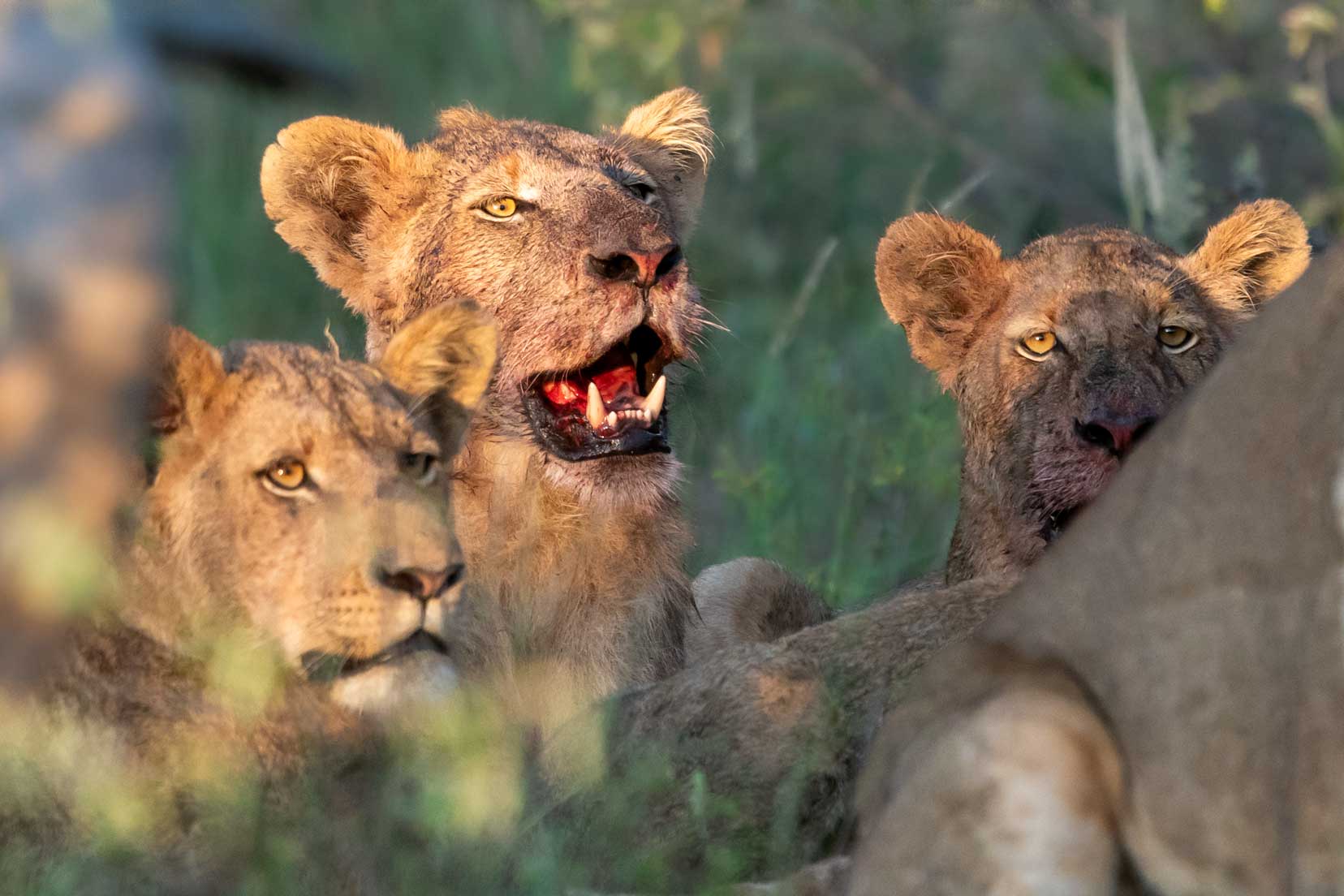
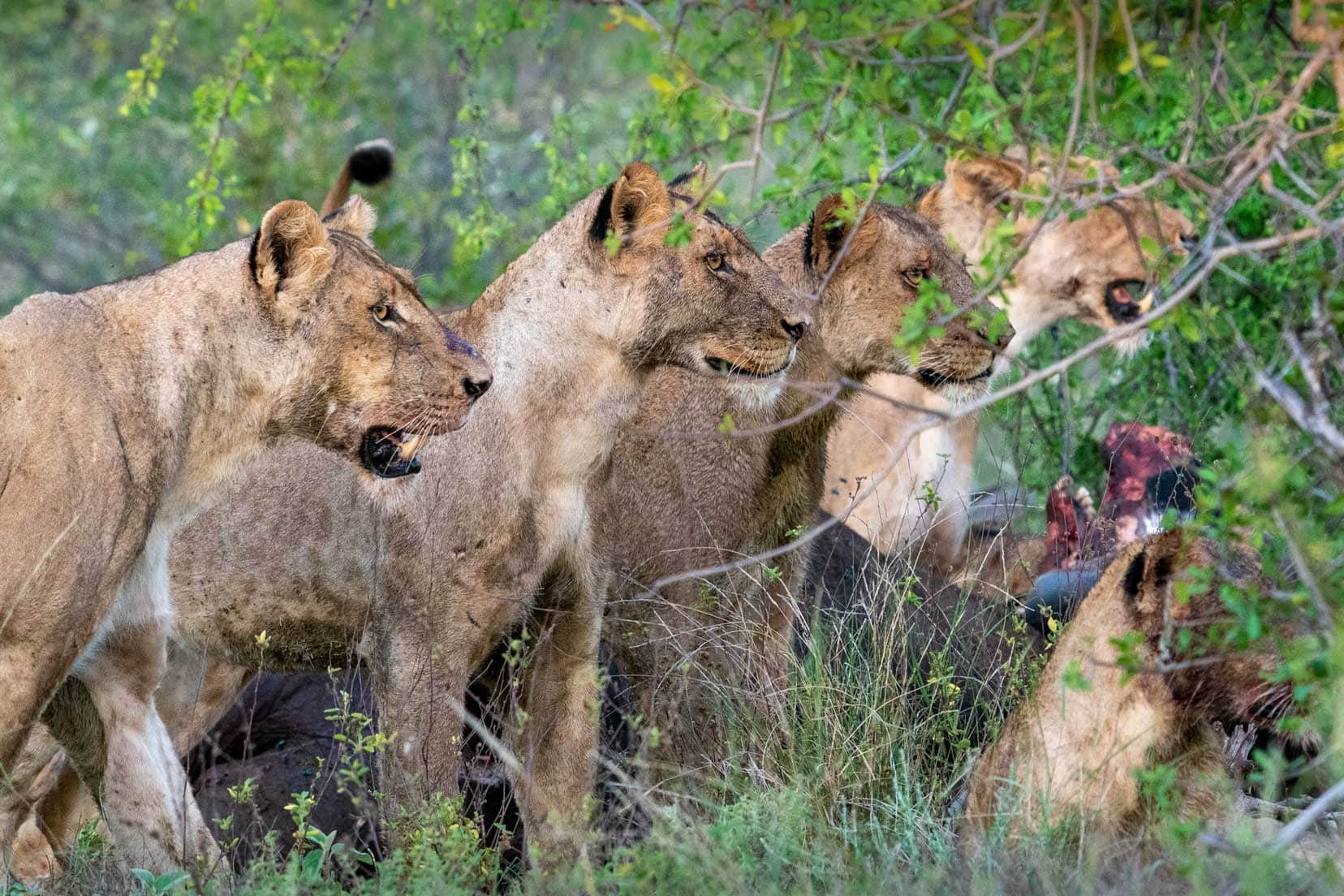
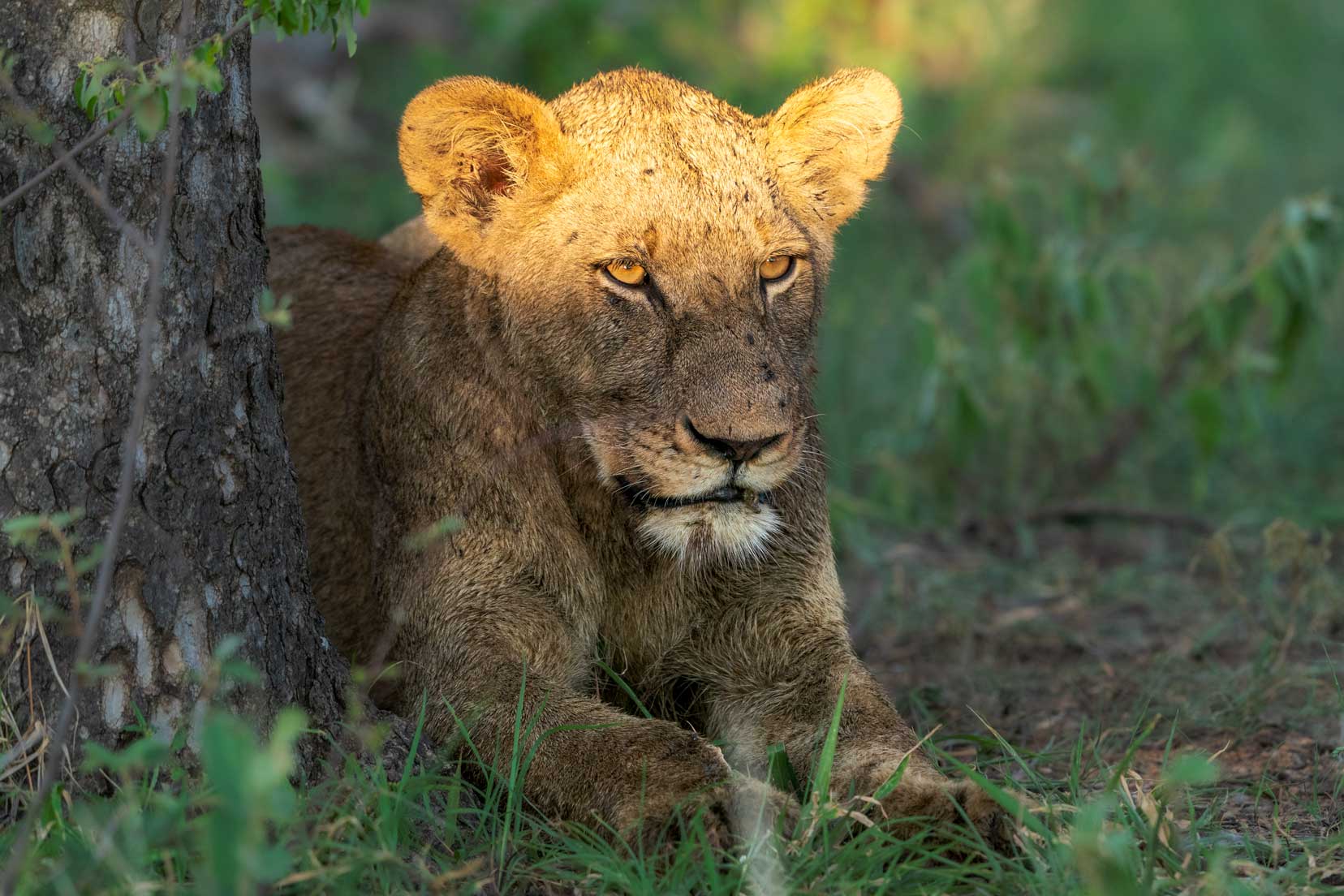
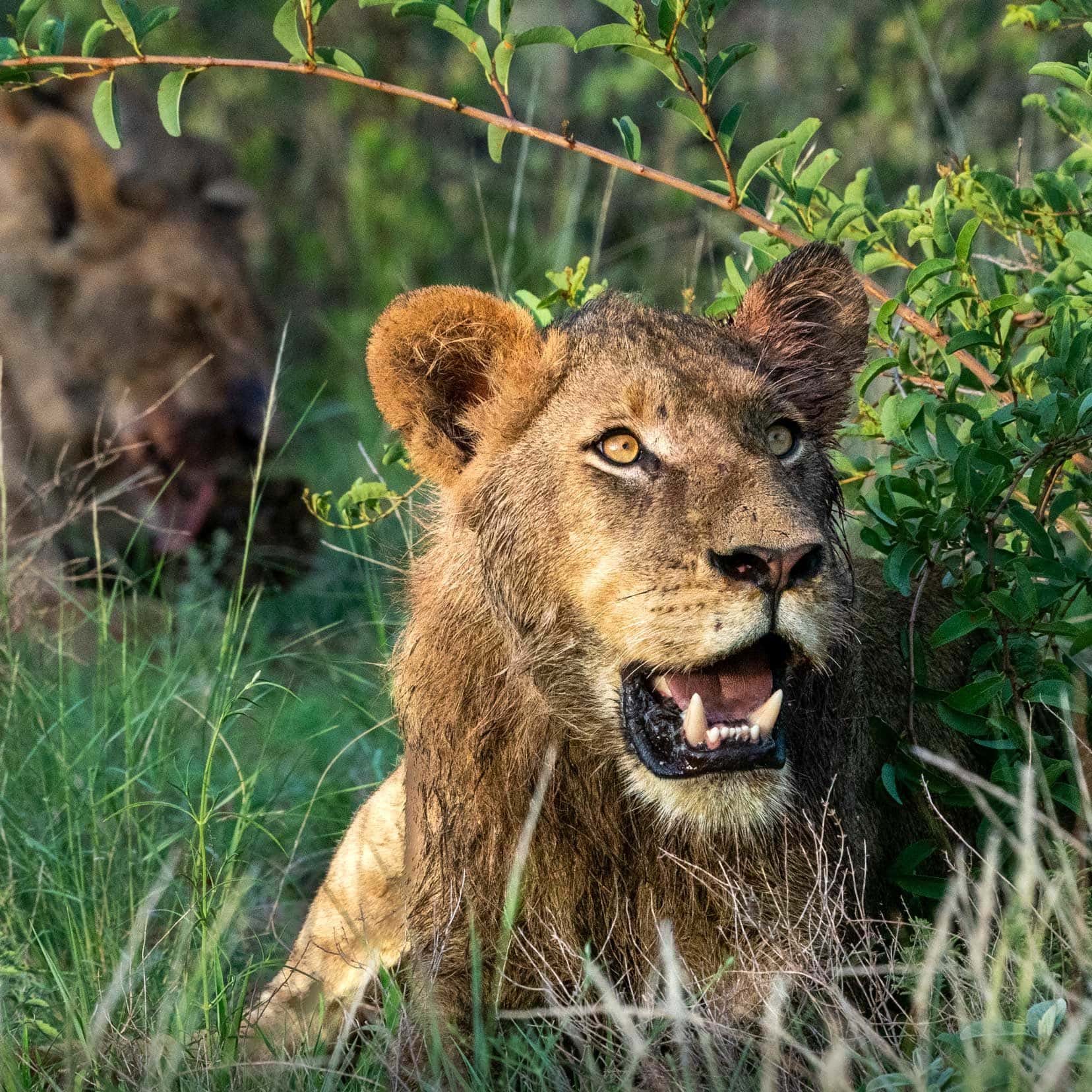
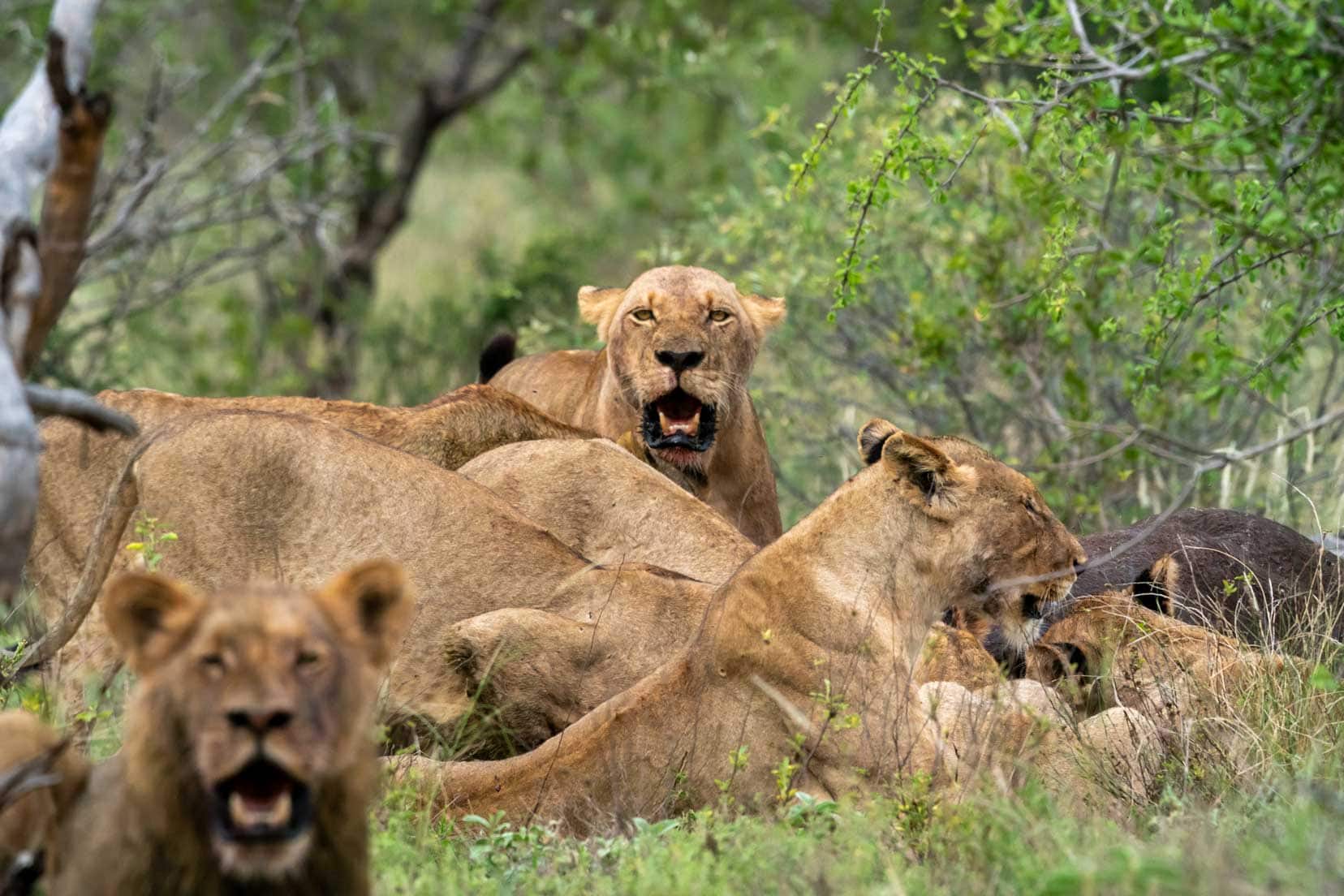
Want to capture your own lion encounter? Check out our safari photography tips so you’re prepared to capture these memorable moments.
Where to Find Lions in Kruger
There are around 1500 lions in Kruger, but they are more prevalent in the southern and central parts of the park.
They are regularly sighted near the Sabie River, where the water continues to flow during the dry months from June to October, attracting all types of potential prey.
The Skukuza – Lower Sabie Road road parallels the Sabie River from above, giving great views down to the river bank where lions can be seen stalking or lying about in the sand.
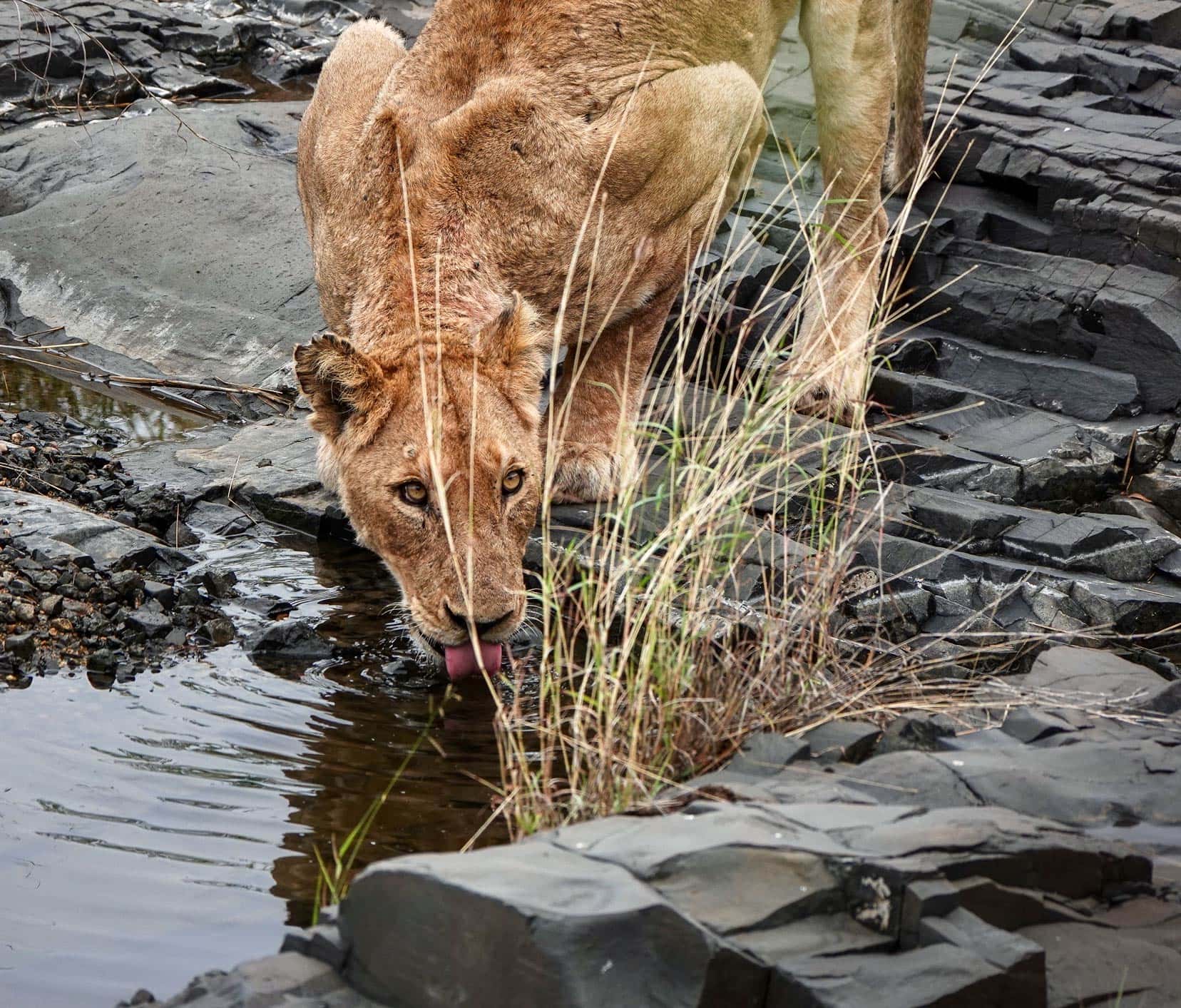
2. Leopards in Kruger
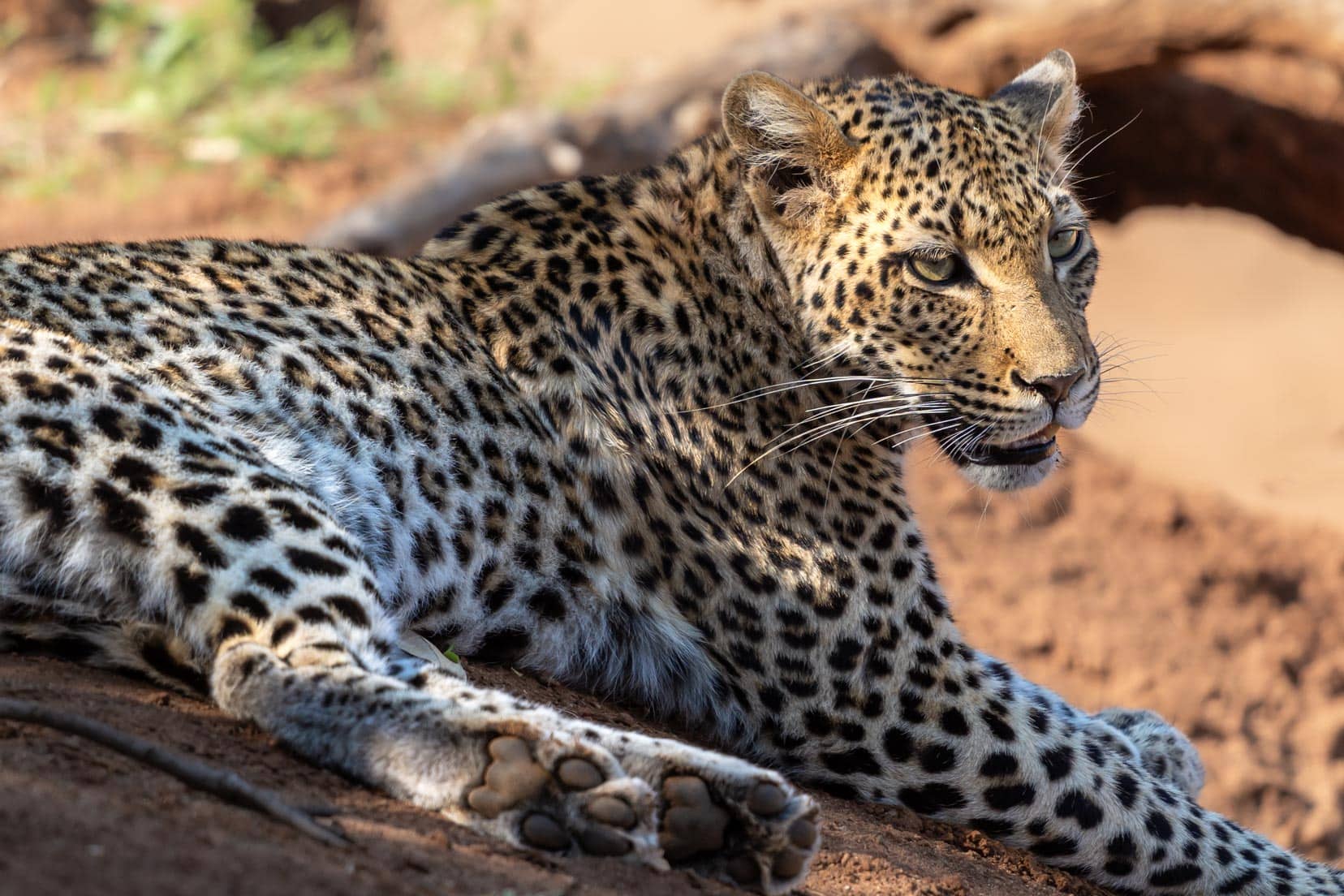
Chasing the elusive leopard became a thrilling part of our Kruger adventure.
Despite several attempts, spotting these majestic creatures in their iconic tree-draped pose proved challenging. Often, our anticipation was met with obscured views, though the thrill of the hunt was ever-present.
🐆 It’s important to note that some Kruger visitors are reluctant to move once they have a prime spot – especially for leopards – and can hog that spot for hours.
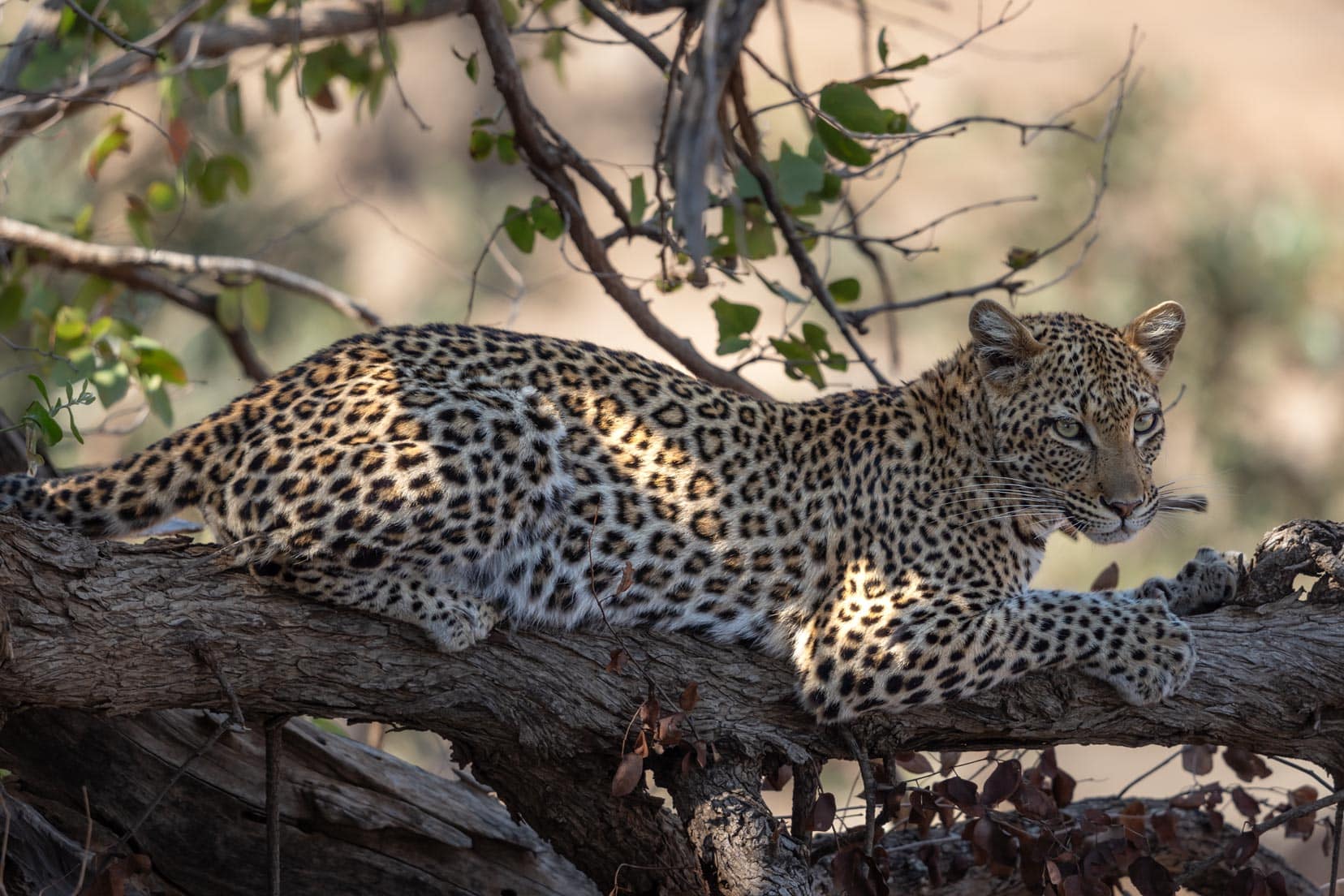
Our persistence paid off on our last day. Overlooking the Mphongolo River, we finally spotted a leopard, not quite draped but beautifully poised in the tree. A moment of pure safari magic.
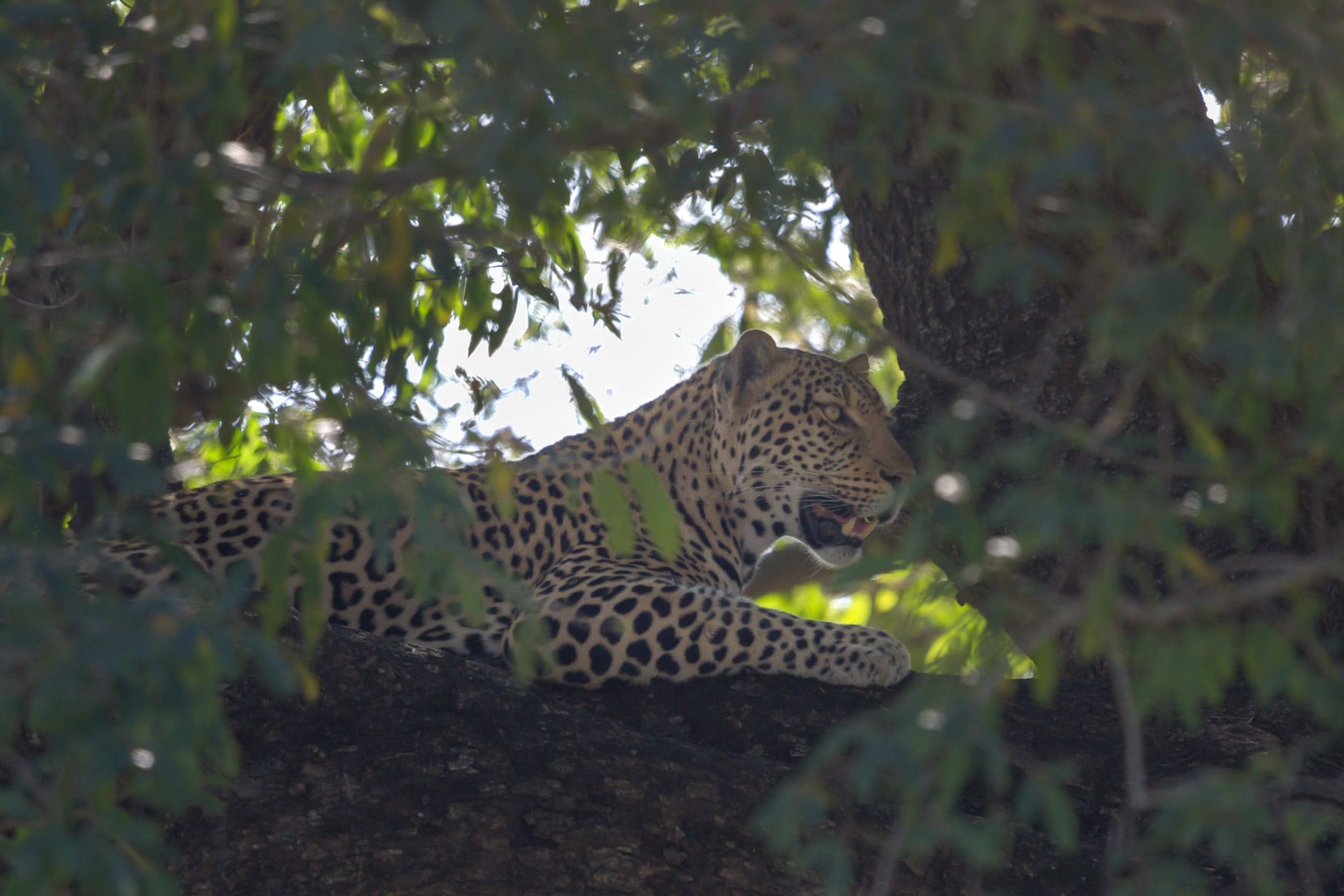
Our other encounters varied from road-crossing leopards to an unforgettable sighting of a leopard with her cub. and a fresh baboon for lunch.
We watched on. Voyeurs of nature’s cruel but necessary cycle.
(You’ll see more of mum and cub feeding in the video above.)
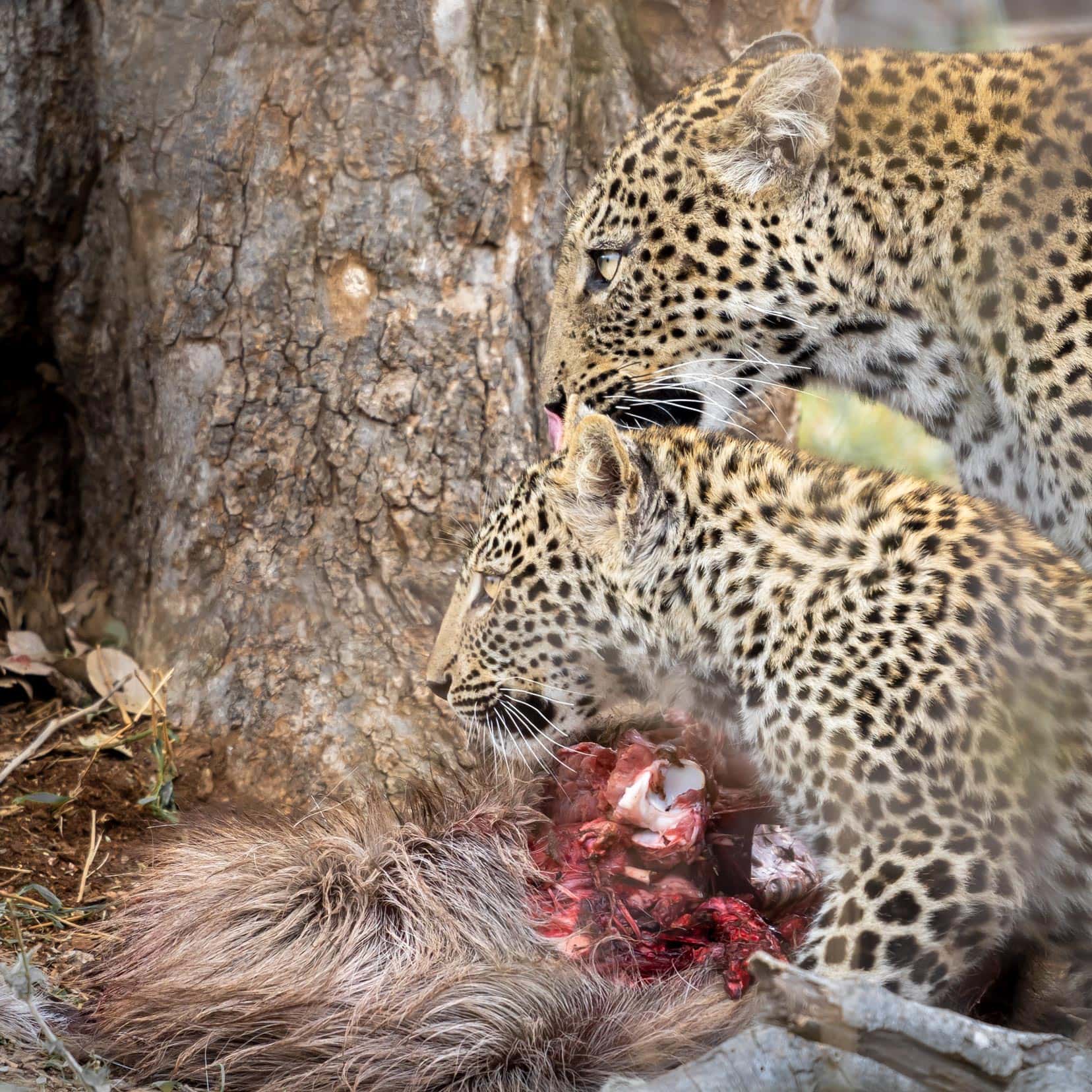
Where to Find Leopards in Kruger
Leopards can often be found around the rivers in Kruger – especially those with bushy trees.
Though found throughout the park, the highest concentration of leopards are found along the stretch of the Lower Sabie River. However, we did hear of sightings even in the far north of the park near Crook’s Corner.
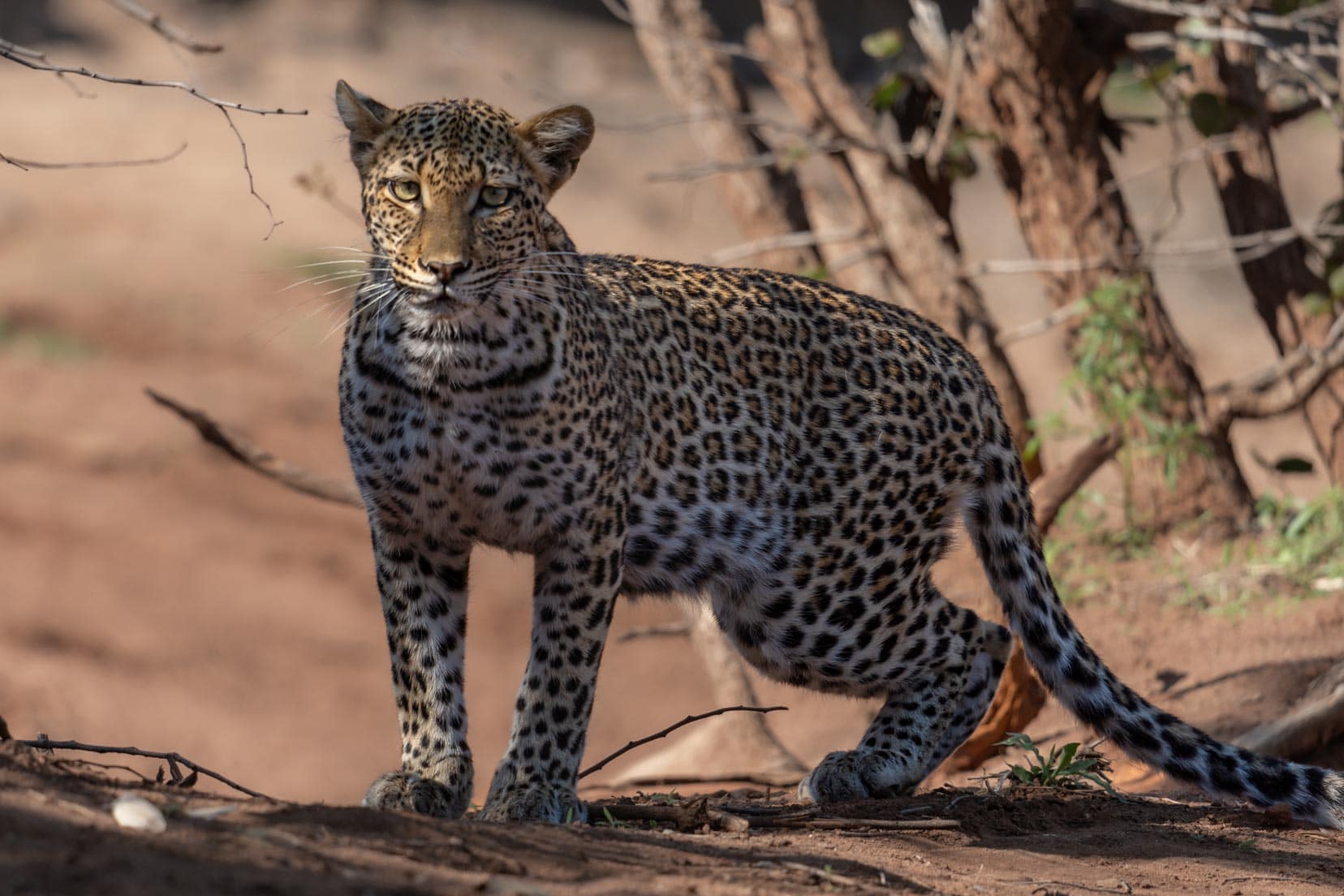
3. Elephants in Kruger
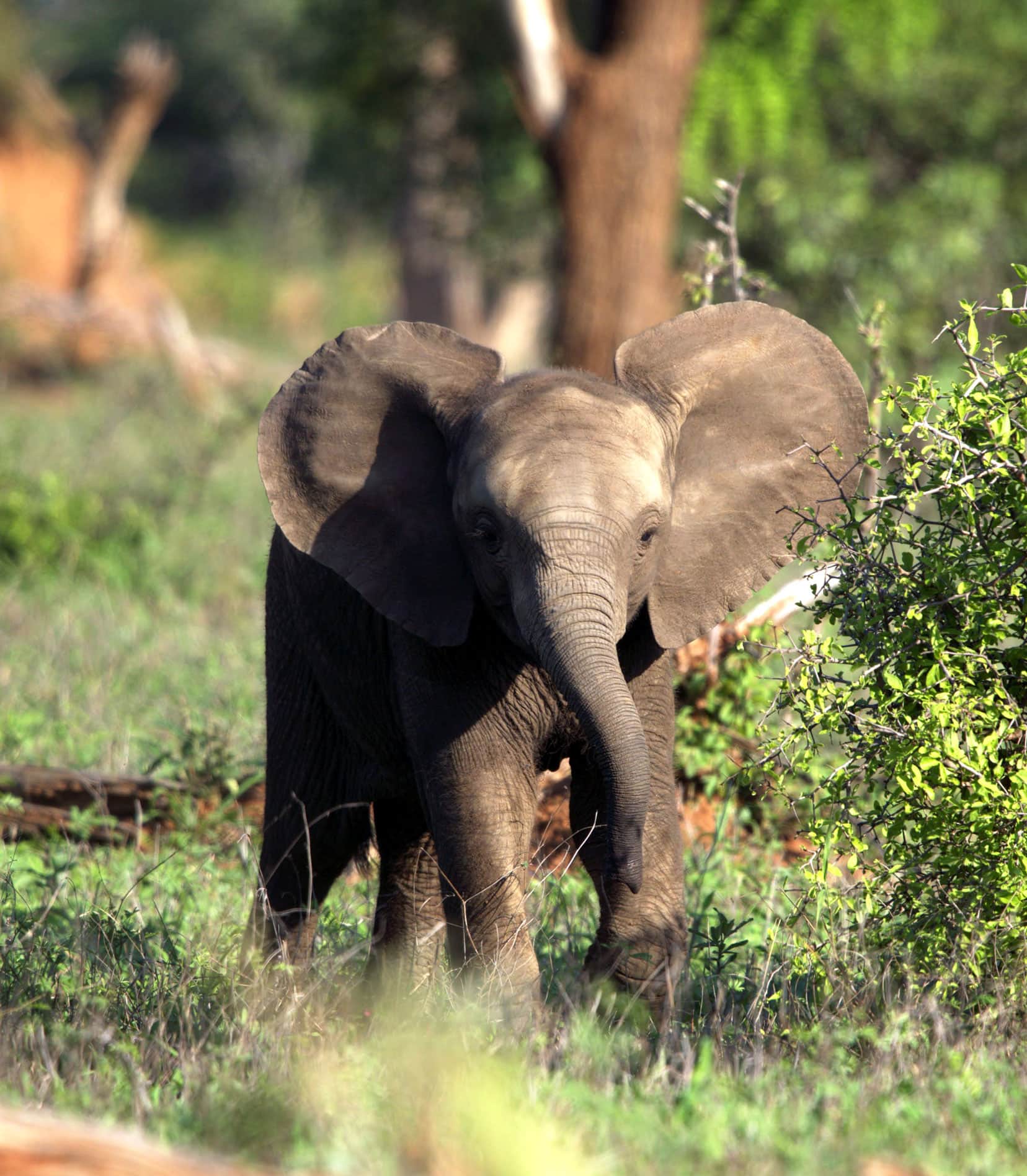
“I would rather walk into a pride of lions than a herd of elephants.”
A bush camp owner in Klaserie Greater Kruger
I was surprised and baffled when someone who spends a lot of time in the South African bush told me that in daylight hours, she would” … rather walk into a pride of lions than a herd of elephants.”
Over the coming days and weeks, I began to understand that sentiment.
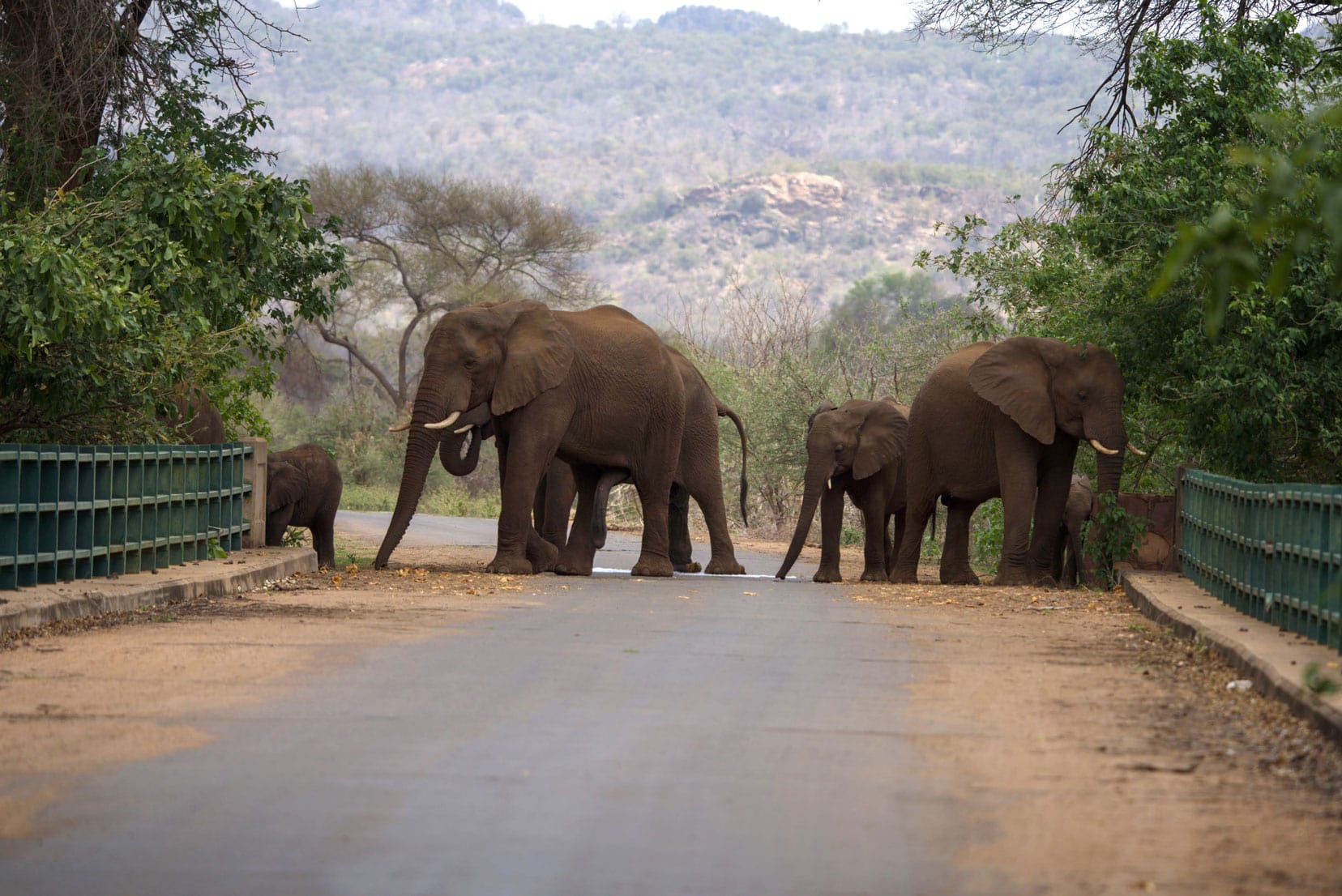
Kruger National Park offers frequent sightings of African Elephants, with around 17,000 living in the park.
Our encounters with Kruger’s elephants were mesmerizing. From playful calves to solitary tuskers, each sighting was unique. Elephants are our favourite safari animal, and we could spend hours just watching them go about their daily business.
Especially the little ones playing and practising using their little trunk as they try to grapple with the 40,000 muscles used to control it!
💡Safety Tip: Exercise caution around elephants, especially with calves. Understand their behaviour to enjoy safe and respectful wildlife watching.
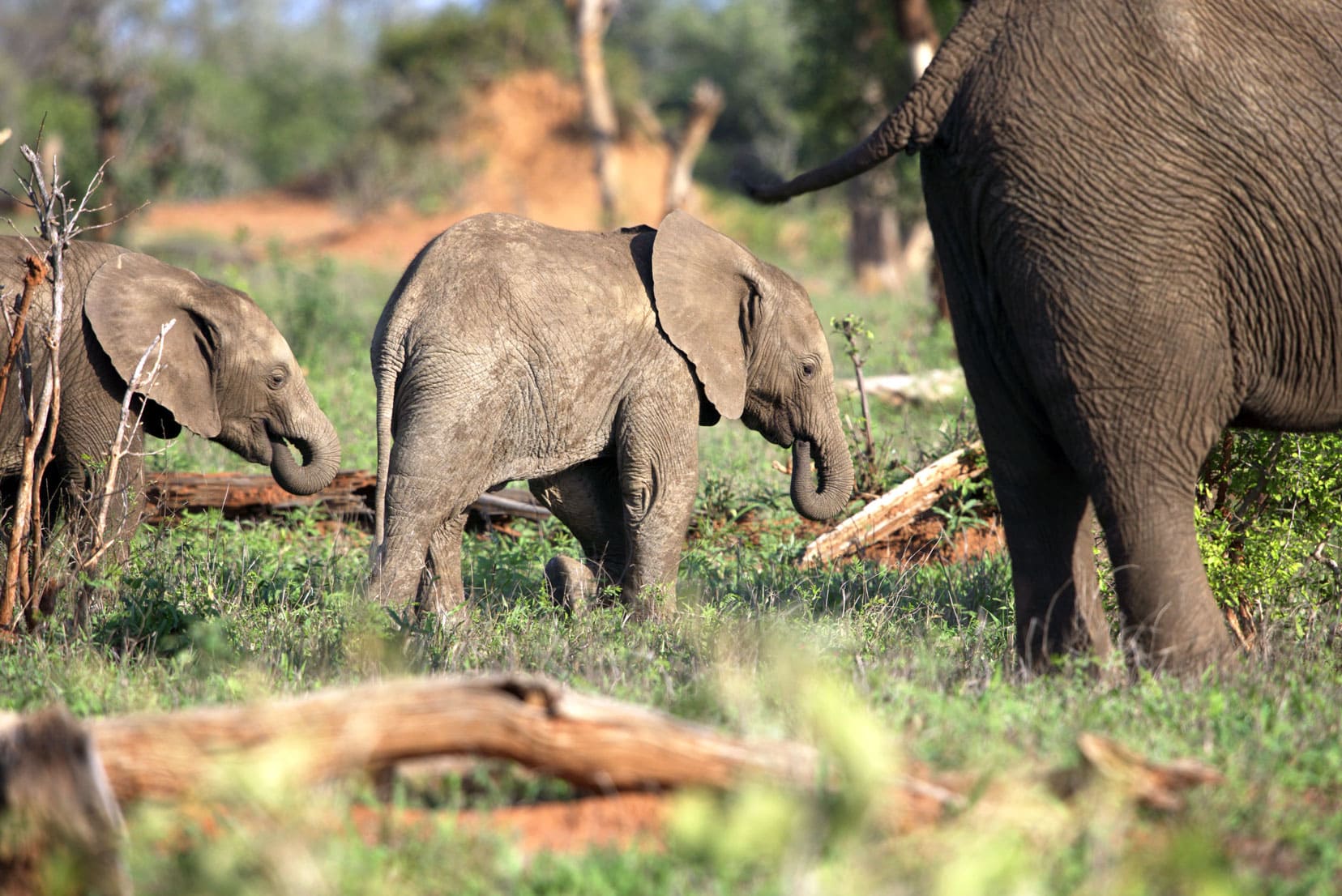
Despite being the largest land mammals, these gentle giants are surprisingly adept at blending into the Kruger landscape, often making their presence known unexpectedly!
So don’t be surprised if one suddenly appears from behind a bush, trumpeting its annoyance at you!
Also, keep an eye out for any male elephants in ‘musth‘. You may see it exhibit increased aggression due to hormonal changes. Observing from a safe distance is crucial during these times.
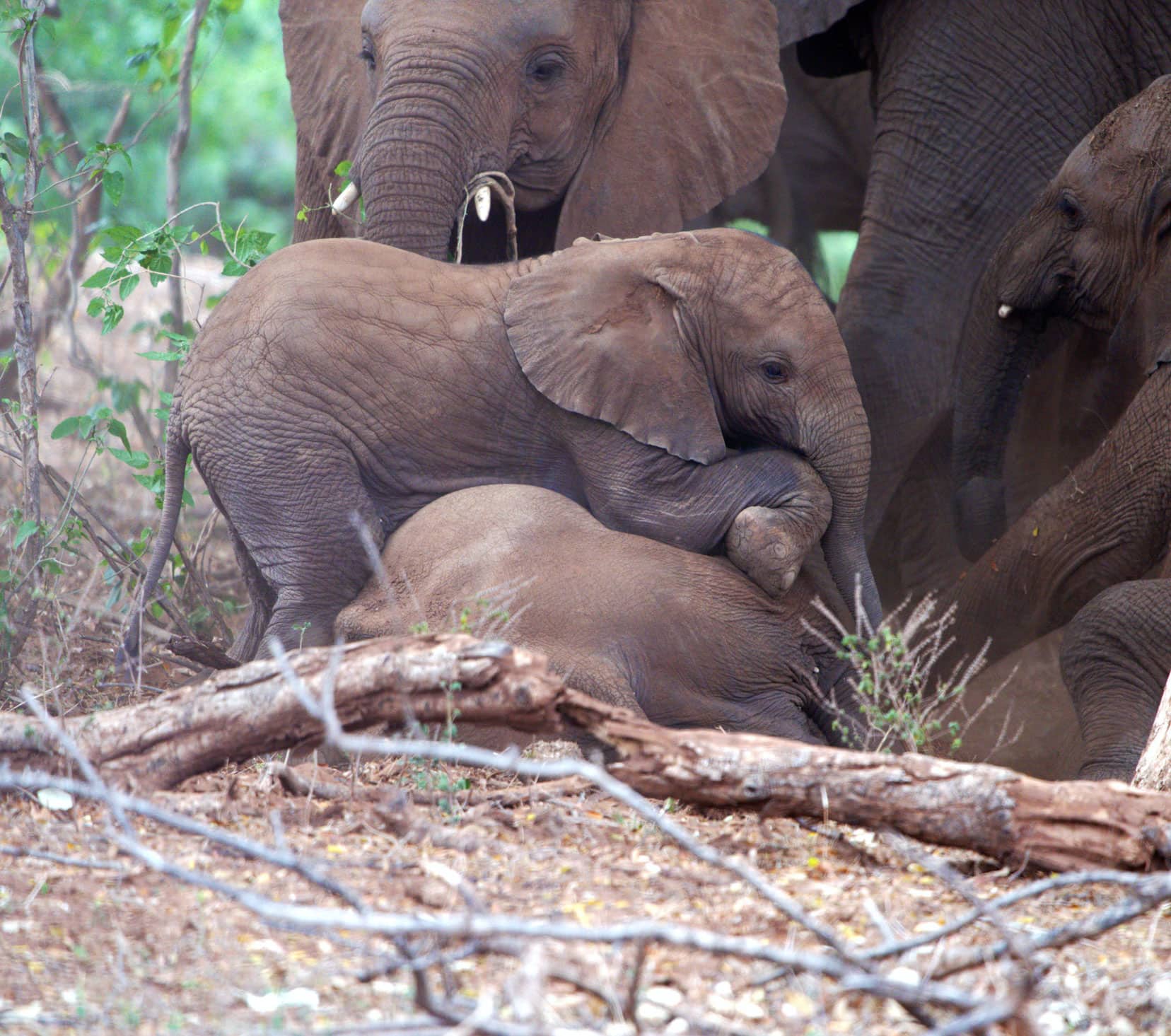
💡TIP: We used to think that an elephant flapping its ears meant it was angry, but they do this to cool themselves down – literally cool themselves, not to cool tempers. When they are angry they are more likely to spread their ears out and trumpet.
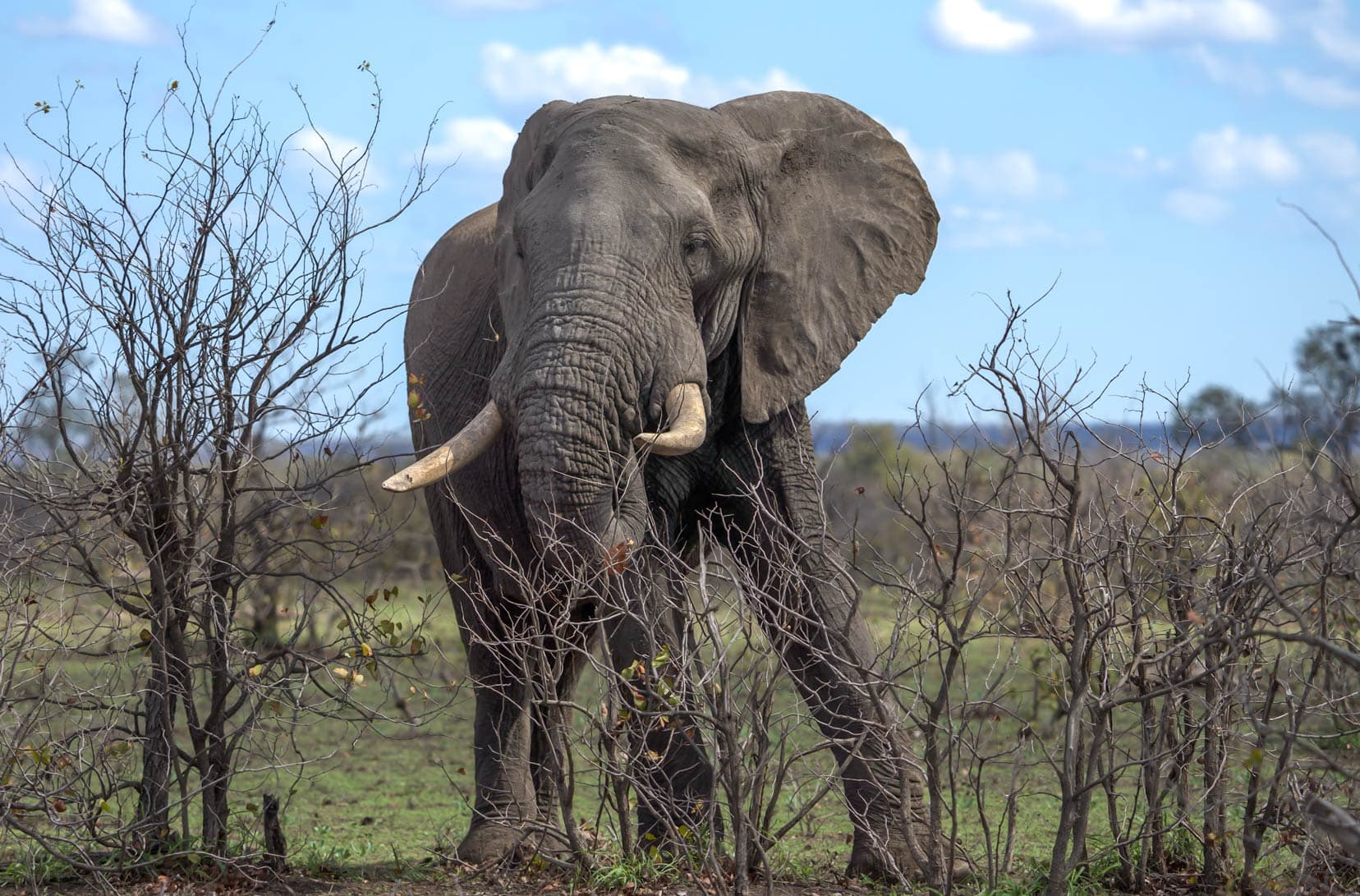
We thought we had gotten close to elephants on safari in Kruger, but our later travels in Botswana and Namibia would result in quite a few unexpected close encounters.
Especially when we were eating lunch at our camp in Nxai Pan, when, an elephant decided to walk right by us – less than a metre away! You can check out more of our Botswana travels here.
Comparing Kruger and Namibian Desert Elephants
The contrast between Kruger’s elephants and Namibia’s desert-adapted elephants is striking. For a more in-depth exploration of these incredible creatures, we invite you to read our detailed post on the adaptations of the Desert Elephants in Namibia and where to find them.

Where to Find Elephants in Kruger
You’ll likely come across elephants throughout Kruger National Park. They are common sightings.
We saw elephants throughout the park and were lucky enough to see one of Kruger’s solitary tuskers digging for water in the sands of the dry Mphongolo River bed, not far from Shingwedze bush camp.
For elephant enthusiasts, the Elephant Hall at Letaba Camp is a must-visit. It offers fascinating insights into elephant ecology and conservation in Kruger.
💡🐘 Note that in the northern parts of the park (north of Letaba bush camp), the elephants seem more easily agitated. This is likely due to fewer tourists, so the elephants are less habituated to onlookers.
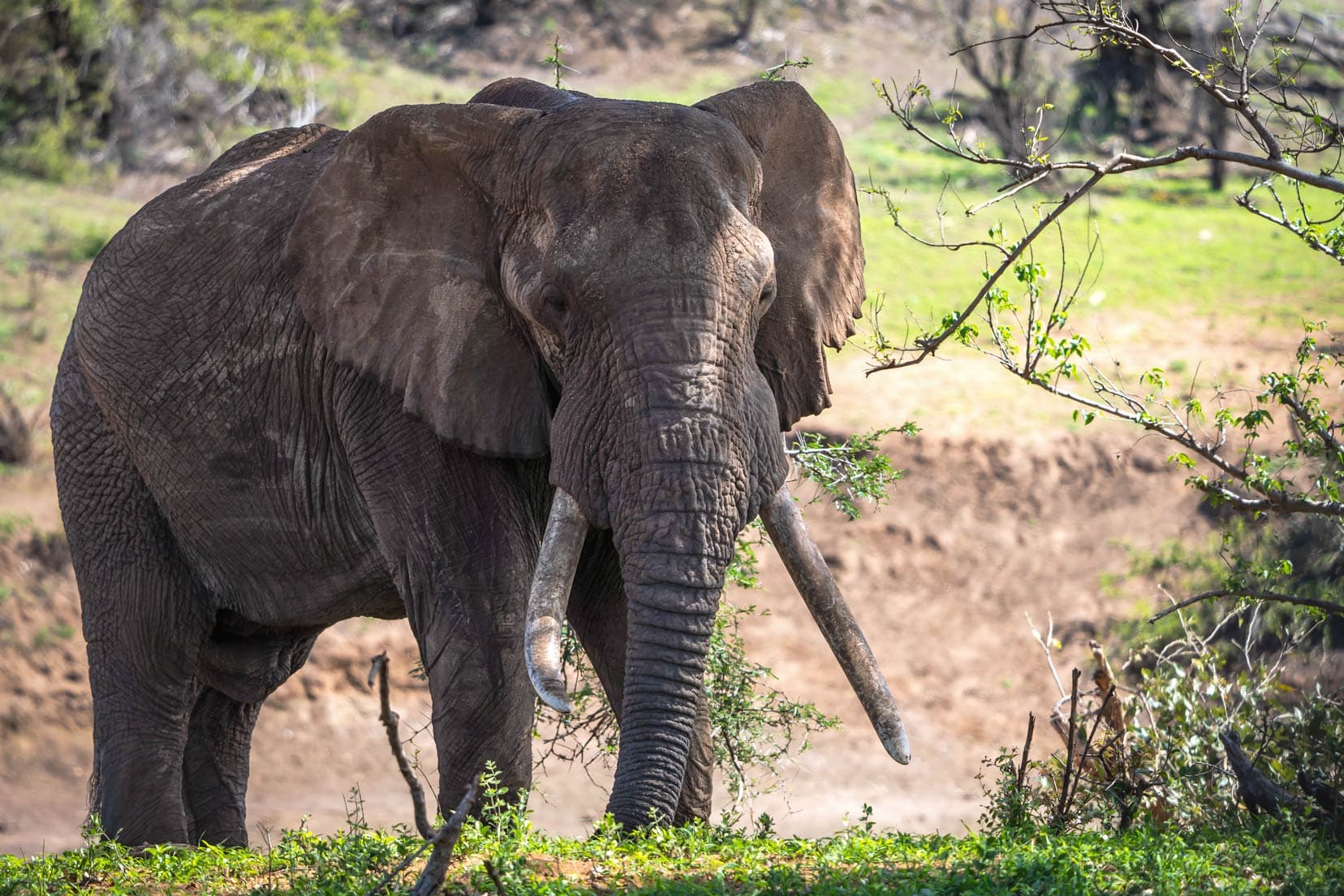
4. Rhinos in Kruger
Both white and black rhinos are found in Kruger, and both are rare sightings. However, it’s the black rhino that is the rarer sighting.
On our African safari travels, we have only seen black rhinos at Khama Rhino Sanctuary in Botswana and Etosha National Park in Namibia.
Although their names suggest one is white and one black, they are both grey. And you won’t be able to distinguish which one you are seeing by its colour.
The easiest way to differentiate between the two is by looking at the shape of the mouth. The white rhino has a square mouth, while the black has a more hook-shaped mouth.
Another distinction is that the black rhino is renowned for a short temper and doesn’t need any provocation to charge. They are very retrusive animals though, so likely to run away if you get too near.
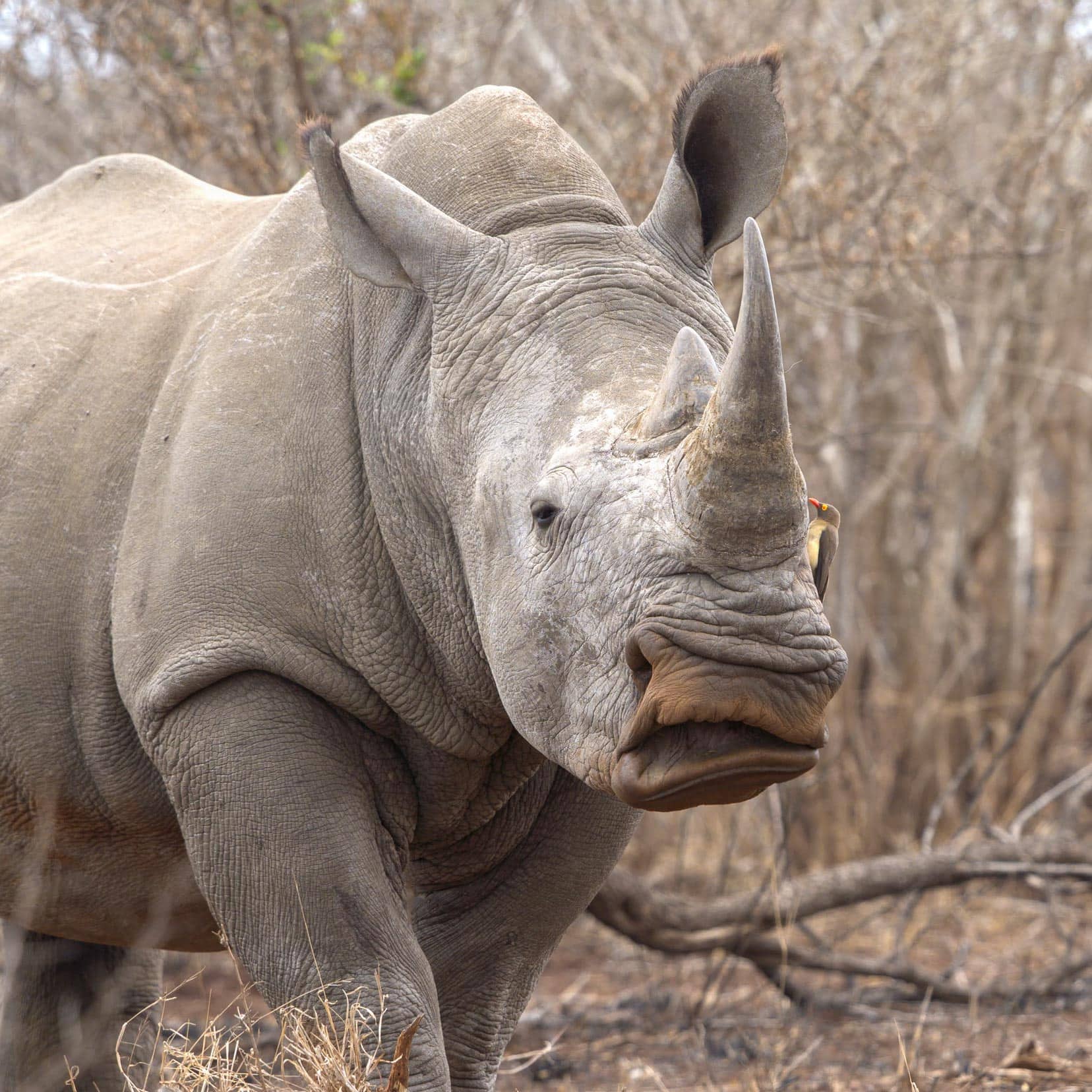
Many of the rhinos we had seen in Klaserie Nature Reserve, Greater Kruger, had been dehorned to protect them from poachers, but the cost to undertake such a project for all the rhinos in Kruger would be too exorbitant.
Therefore, if you are lucky enough to see a rhino in Kruger, it will likely still have its horn intact.
Where to See Rhino in Kruger
It’s difficult to spot rhinos in Kruger, so if you spot any, you are extremely lucky.
At each of the twelve main rest camps in Kruger National Park, you’ll find a sightings board that displays the locations of sightings of lions, buffalo, elephants, leopards, cheetahs and wild dogs. However, you won’t see any rhinos indicated because of the constant threat of poaching.
Note: If you see a rhino, don’t post the location on social media; that will alert poachers of their whereabouts.
We had a great sighting of a white rhino pair not far from Lower Sabie bush camp. They allowed us to drive within 10 metres of them, and we watched them for a glorious 10 minutes before they wandered off into the bush.
5. Cape Buffalo
I still remember seeing my very first buffalo after arriving in South Africa.
Stompy was his name, and he was walking towards our vehicle at the Lion and Rhino Nature Reserve near Johannesburg.
I’d just finished reading the book Torn Trousers, written by a couple who gave up their repetitive 9-5 life in the city to run a game lodge in the Okavango Delta in Botswana.
Intrigued as to what our overlanding Africa experience would be like, I had been gathering information about Africa’s wilds and the animals we might encounter.
I remembered their safari guide’s words to their guests;
… If you see a buffalo climb a tree. If you see a lion stay still, if you see a leopard don’t look it in the eyes.
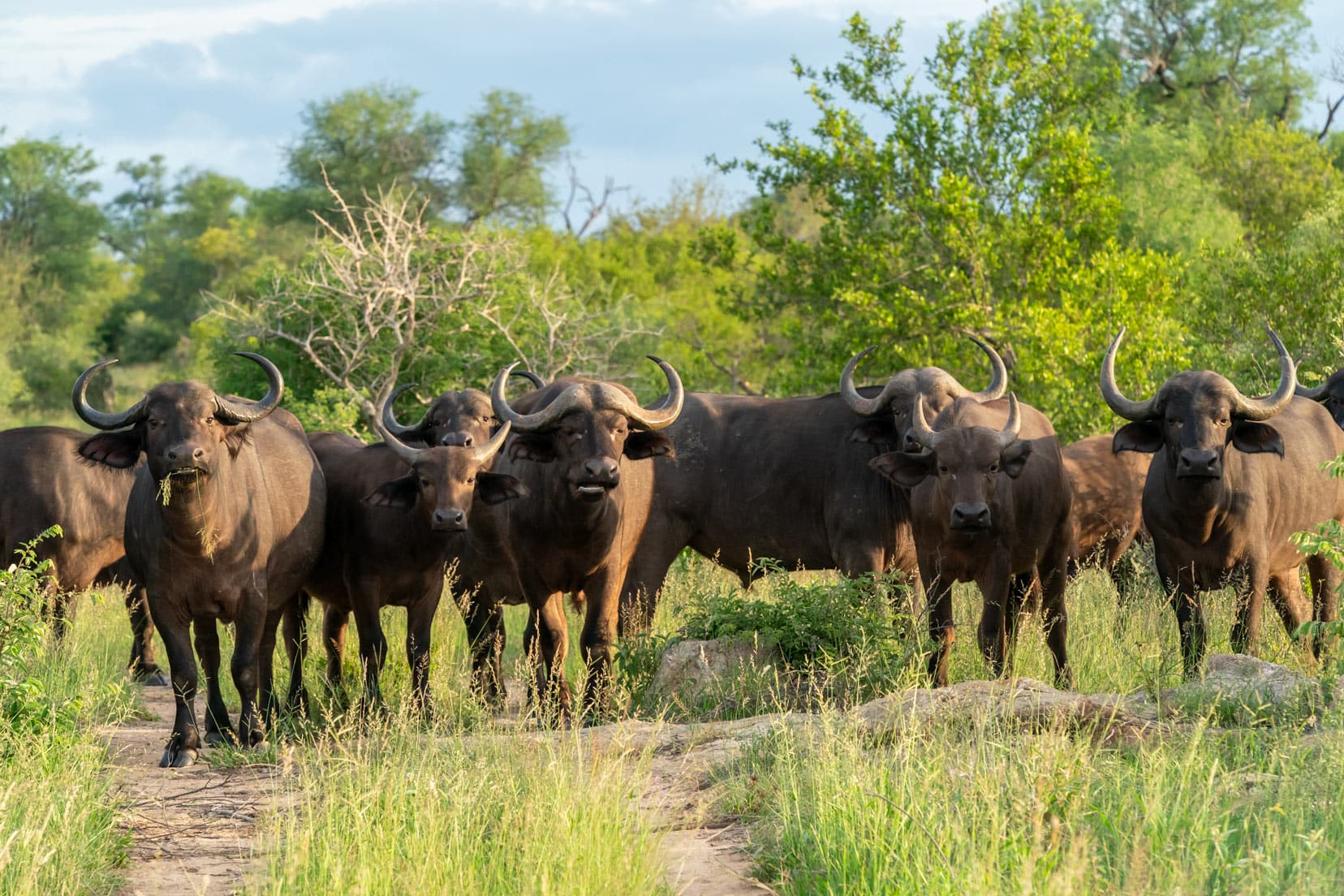
At the time, I doubted I would ever be in such close proximity to any of those animals, much less have to take heed of those warnings.
But the information stuck and was suddenly thrust to the forefront of my mind as Stompy the buffalo headed straight towards us.
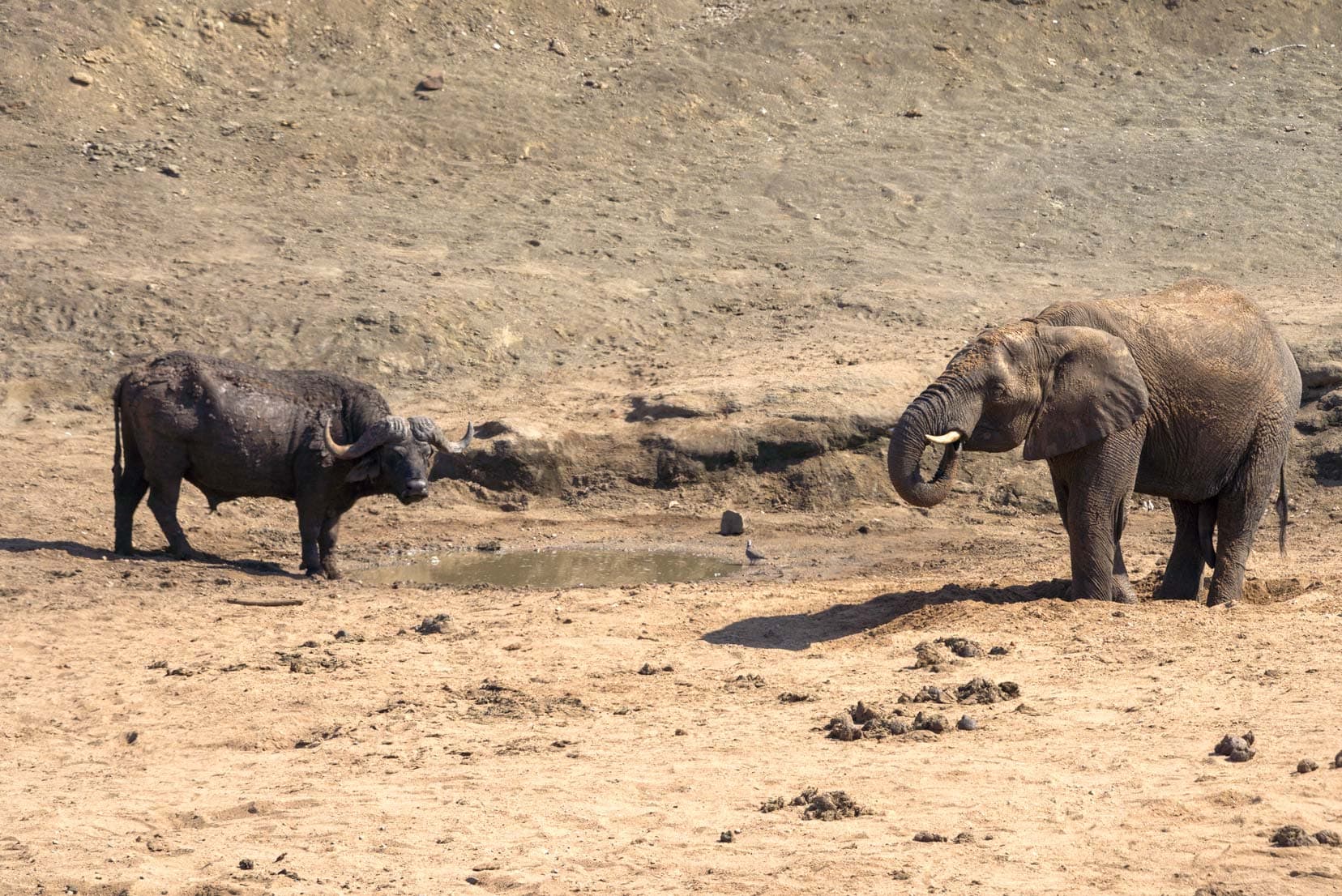
These lumbering beasts can weigh up to 750 kgs, and you’ll find them all over Kruger National Park, either grazing in large herds or lone bulls ambling along alone or in small groups.
Unlike elephants, buffalos are not a danger when you are in your vehicle.
However, that would be a very different story if you were on foot.
We had heard a few stories of those on walking safaris having to climb trees to escape a buffalo charge.
Buffalos can be particularly bad-tempered when they perceive you as a person rather than a large moving beast (your vehicle).

The older males, known as ‘Dagga Boys’, often roll in mud and are notable for their unpredictable nature. They are easily recognisable with their large horns and ‘big boss’ – the thick centre part between the horns.

An almost constant companion of the buffalo is the oxpecker.
The red-billed oxpecker is the most common, or you might be lucky to spot the less common yellow-billed variety.
The contrast of this cute little bird cleaning up this brute of a beast makes for some endearing photos and brings a pop of colour to this member of the Big Five team.
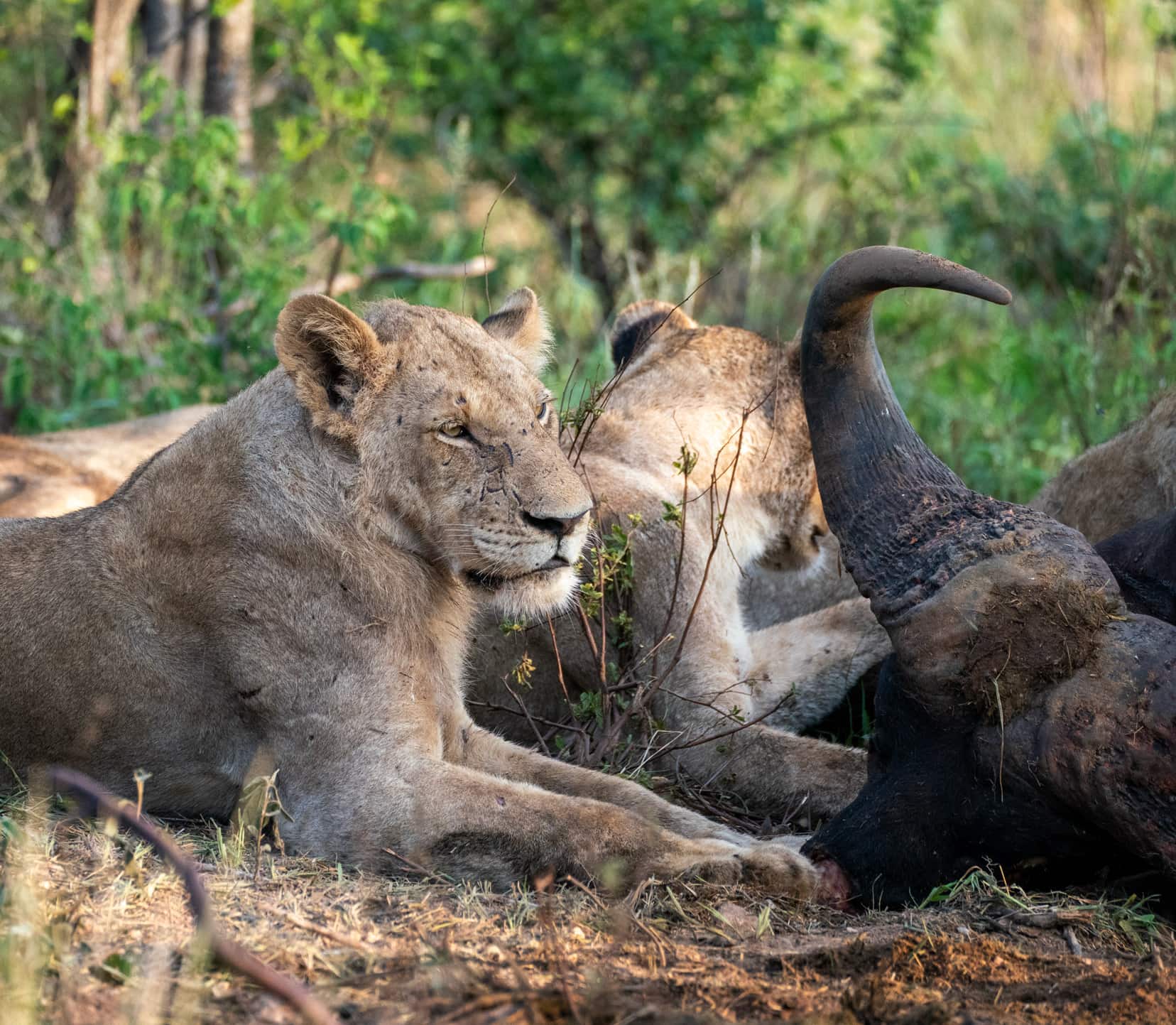
We didn’t see any attacks, but we did come across these full-bellied lions lying in the sun with a fresh buffalo partly devoured.
It’s an intense reminder of the predator-prey dynamics in the park.
You can read more about the old dagga boys (old buffalos) who slept around our camp and all the other wildlife we experienced while living in Klaserie Nature Reserve African bush.
Where to Find Buffalos in Kruger
Buffalos can often be seen grazing in large herds or as solitary bulls throughout Kruger, especially near water sources and grassy plains.
6. African Wild Dogs
Coming across a pack of African wild dogs and their pups’ musical yips and yelps is always a special moment.
Known also as painted wolves, these dogs, with dappled brown, black and white fur and large bat-like ears, are endangered, with only about 6,500 left in Africa.
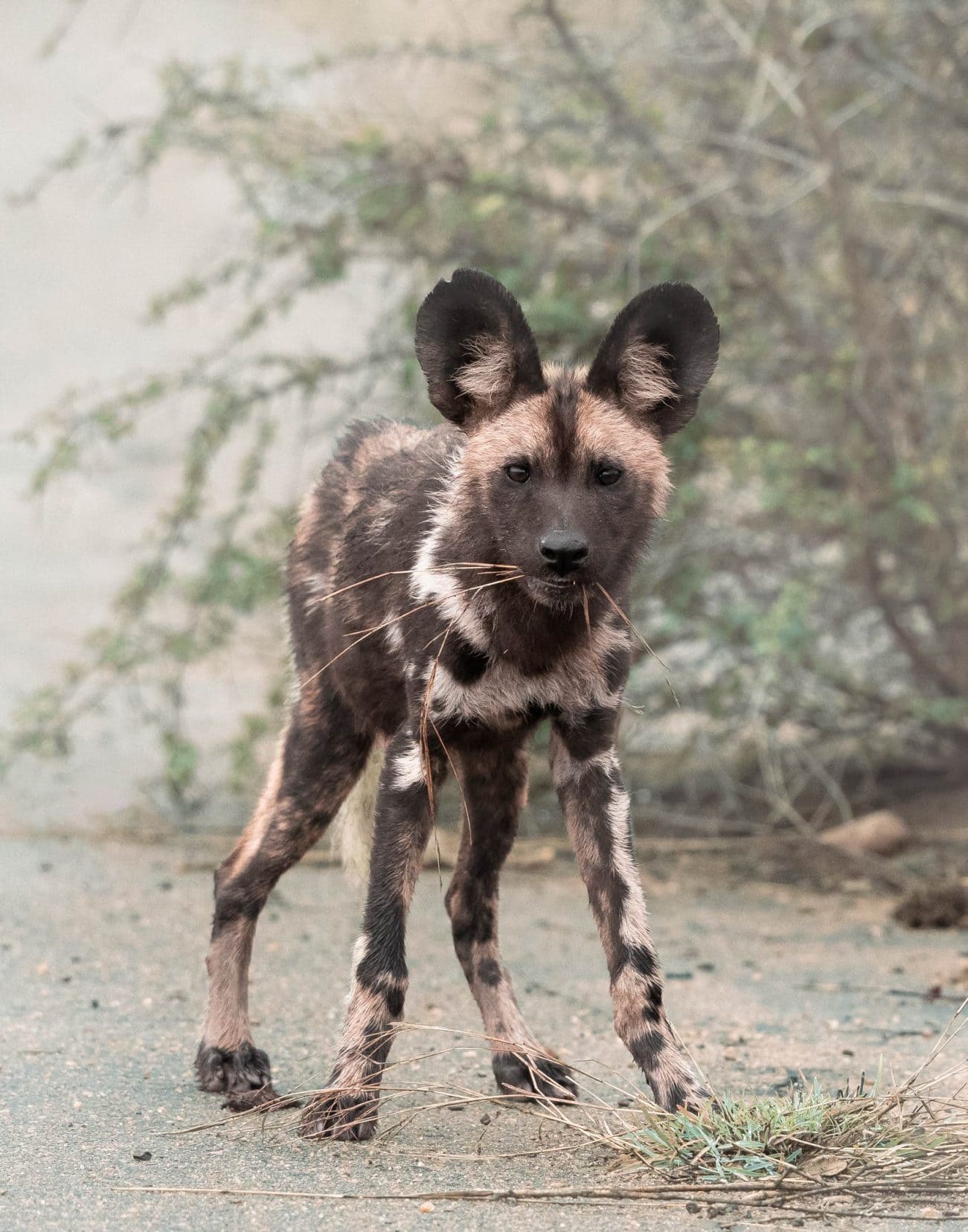
We saw African wild dogs twice in the two months in Kruger National Park.
The first time, we came across a number of parked cars on the side of the road – a sure sign there was something interesting up ahead. As we edged closer, we could see about 20 African wild dogs huddled under the shade of a large tree.
What was particularly special was the number of tiny faces inquisitively peering out over the jumble of sleeping bodies. The pups were still quite small, so likely only about 4 or 5 months old.
We couldn’t believe they’d chosen a spot so close to the road – and it was just a couple of kilometres from Skukuza main camp.
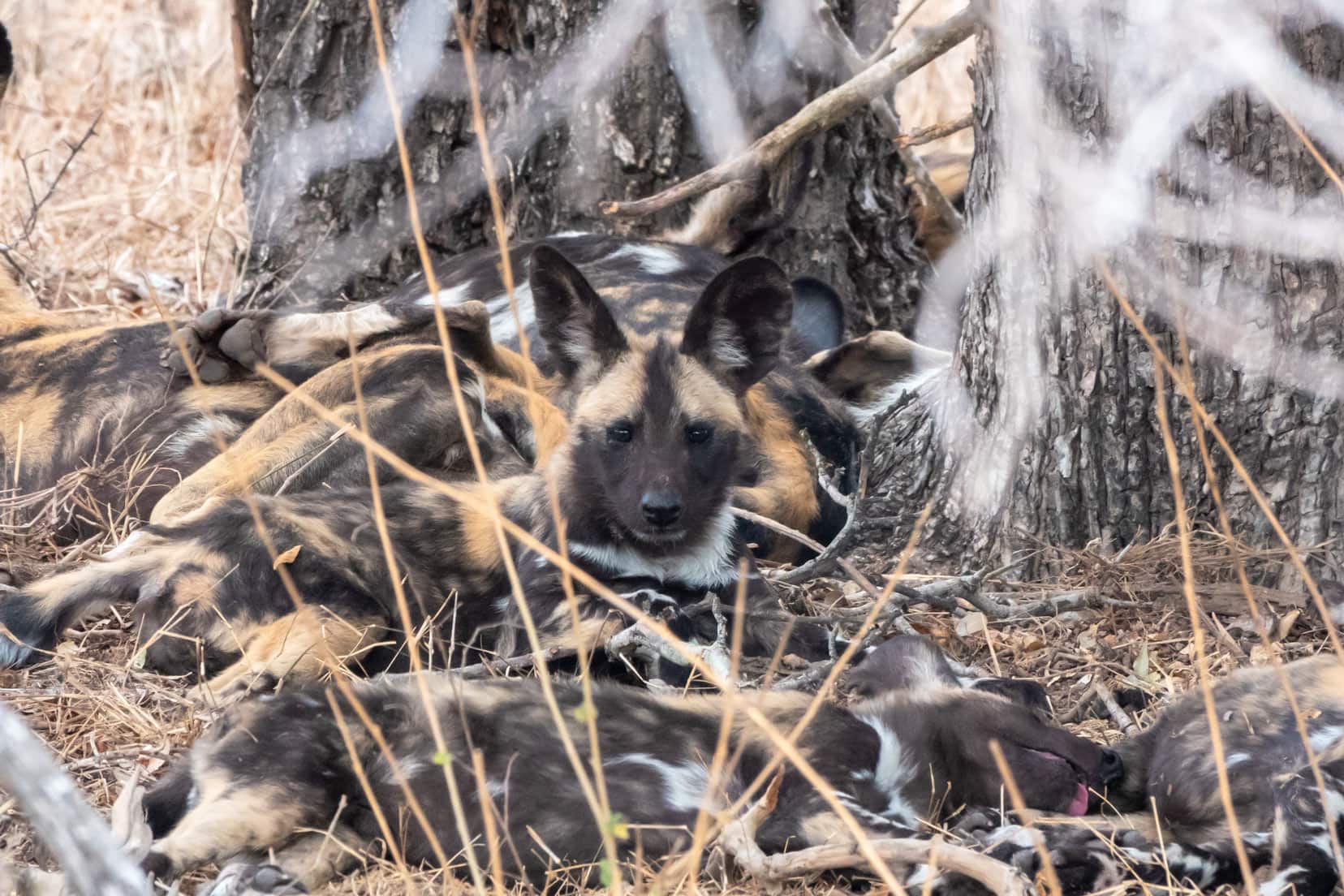
The second time, we encountered a whole pack in the middle of the road.
It was a miserable morning with drizzly rain – the type of rain that seems light but still manages to drench you if you keep your window down while trying to spot wildlife.
But these African wild dog pups didn’t seem to mind the wet weather — or the fact that they were blocking the main road from Letaba to Shingdwezi.
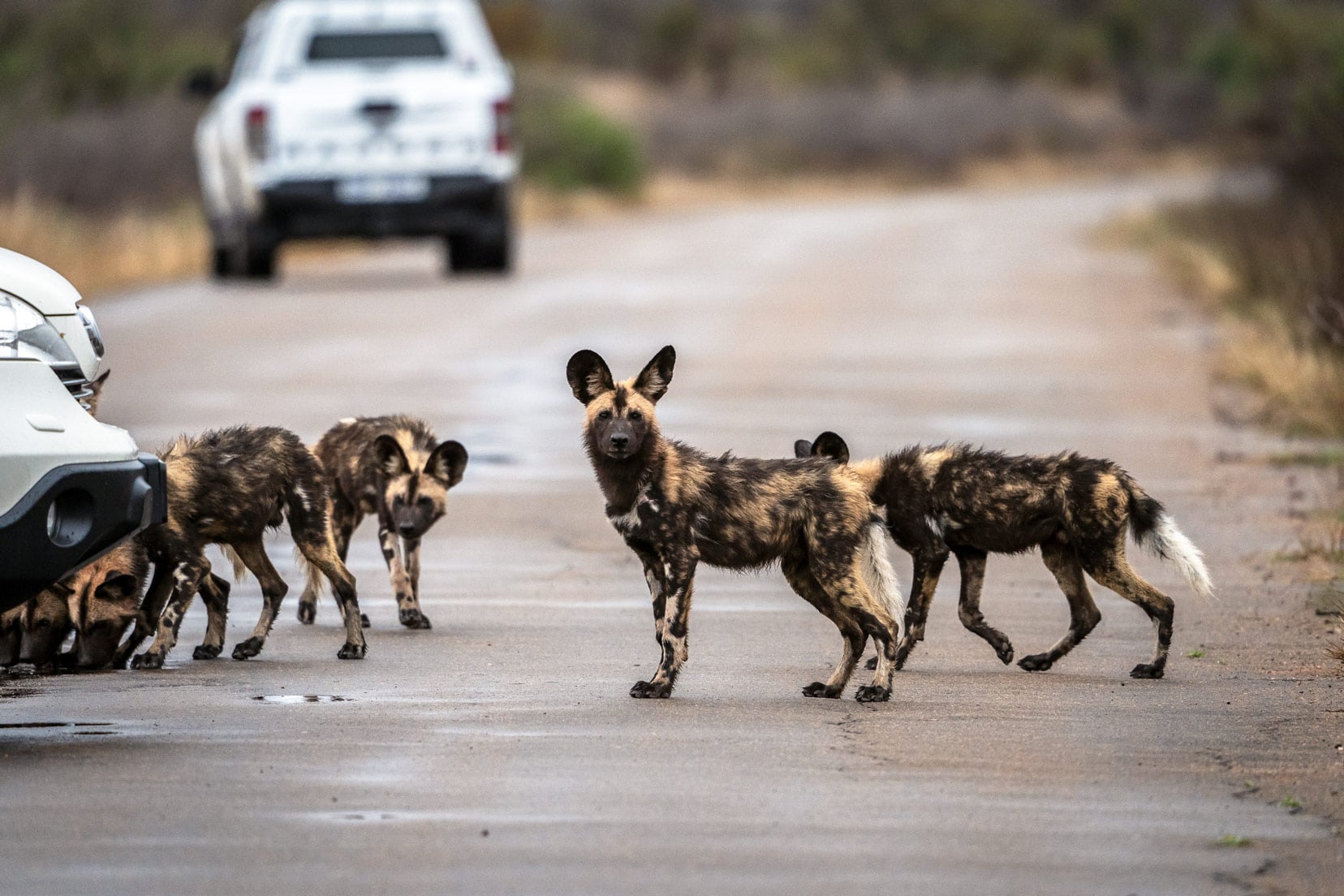
For 20 minutes, they tussled with and chased each other on the road. The young ones darted across the road from side to side like kids in a school playground.
As our lenses zoomed in and out, the rain no longer mattered. Sharing rare moments such as these is part of the Kruger magic.
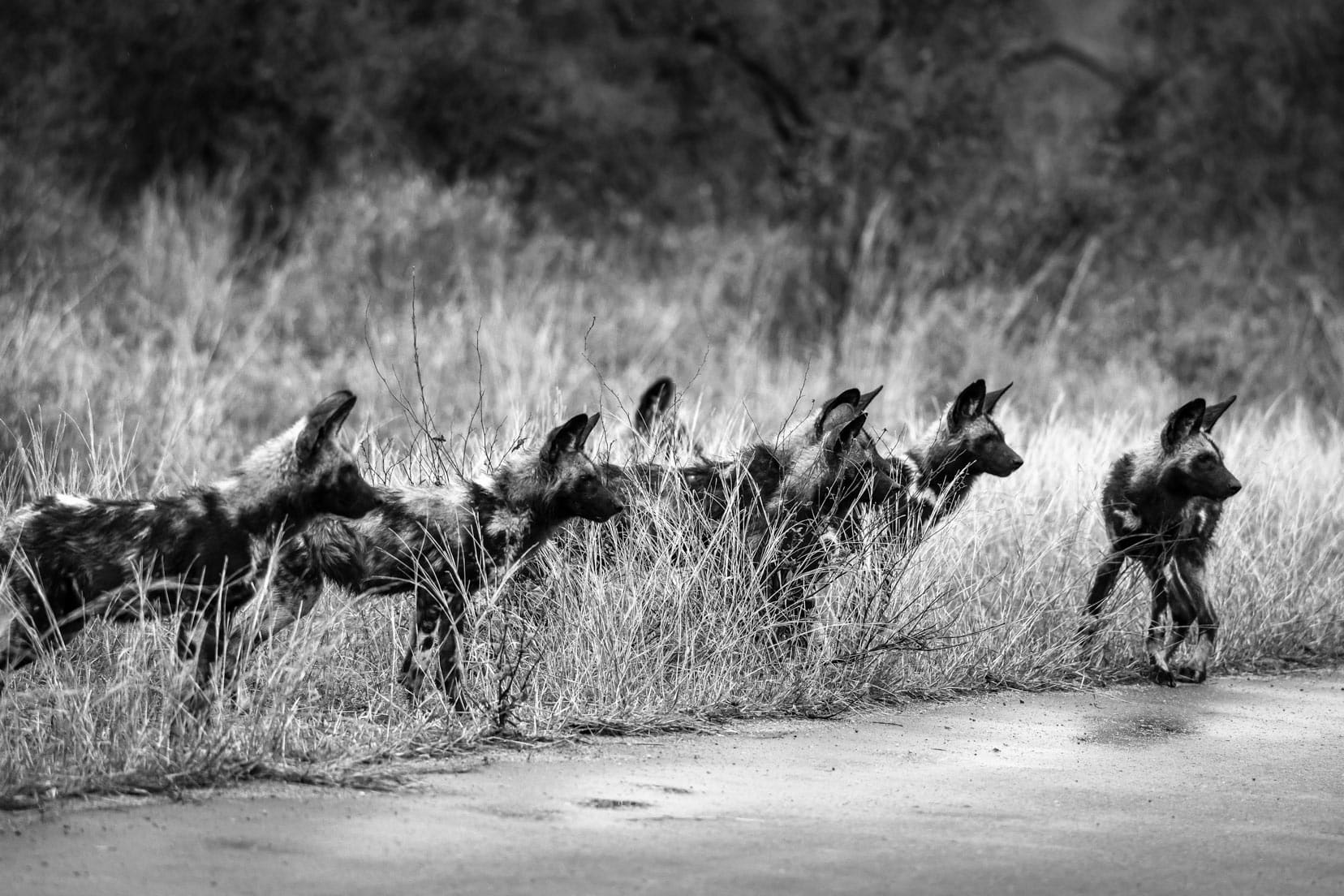
Where to Find African Wild Dogs in Kruger?
African wild dogs are hard to find in Kruger. You just have to hope it’s your lucky day. Most of the sightings, seem to be in the southern part of Kruger.
7. Hyenas
Did you know there isn’t only the Big Five but also the Ugly Five, the Small Five and the Shy Five?
And the poor hyena is one of the Ugly Five.
Now, if we were judging the hyena portrayed in the hit children’s movie ‘The Lion King’, then I would agree that both their looks and temperament in that movie are ugly indeed.
However, I think the real-life spotted hyenas, the type you’ll find in Kruger, have been unfairly labelled.
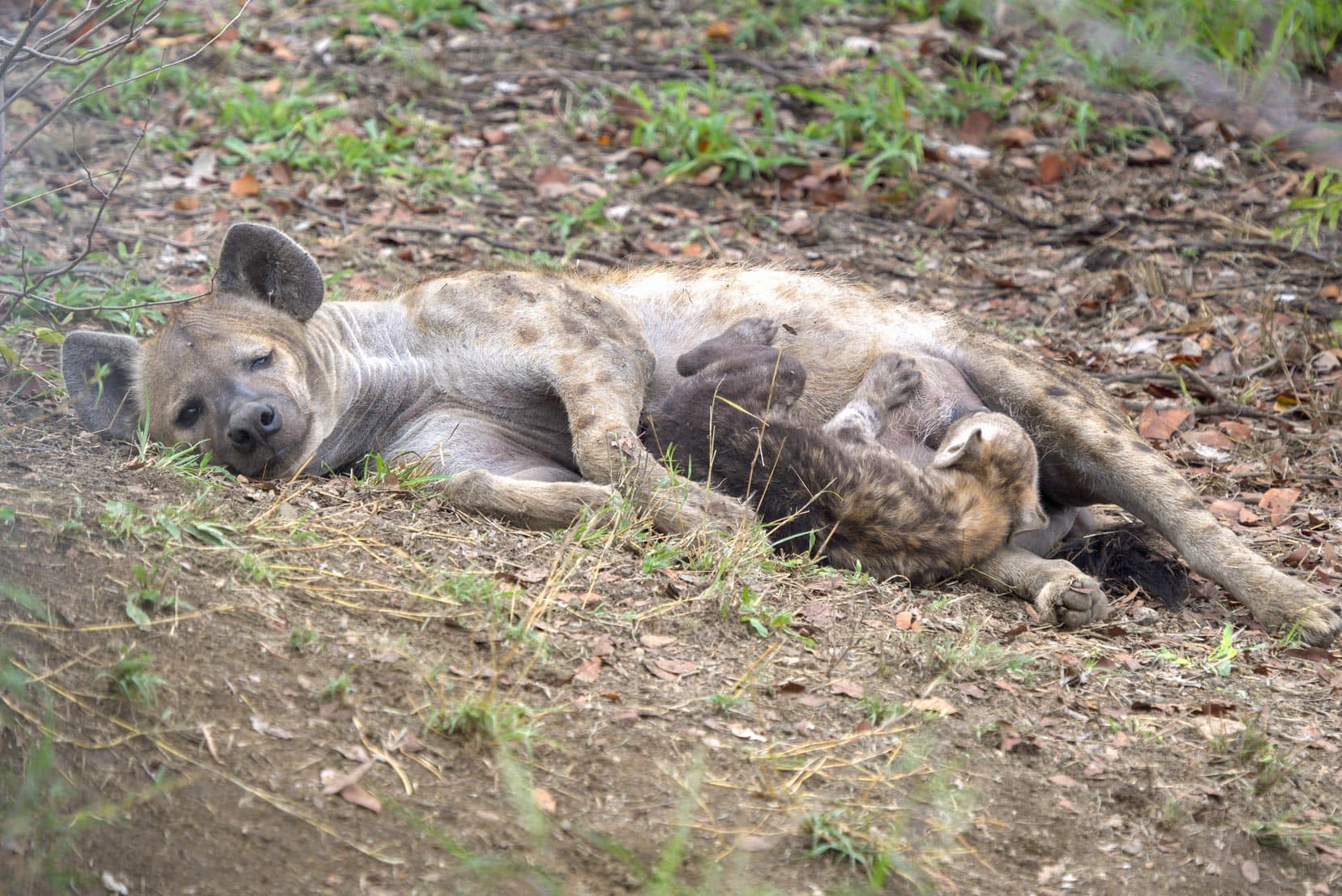
I think they are just as endearing as any of the animals in Kruger. They are also unfairly maligned as the bush’s scavengers. But spotted hyenas kill more than 80% of their food rather than scavenging it.
And I challenge anyone to tell me that a baby hyena cub isn’t just the cutest thing.
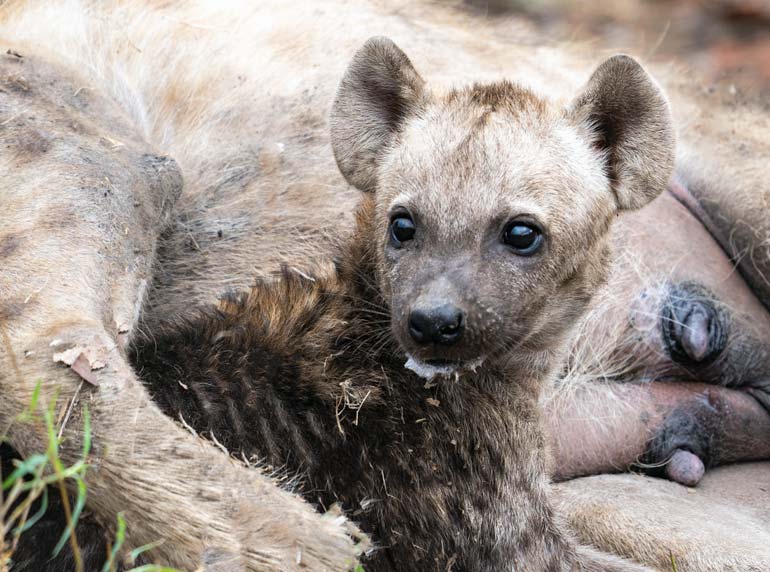
Lucy Cook, an author and conservationist, has written a really interesting article, ‘Everything you know about hyenas is wrong’, – highlighting that hyenas are fierce, social and incredibly smart.
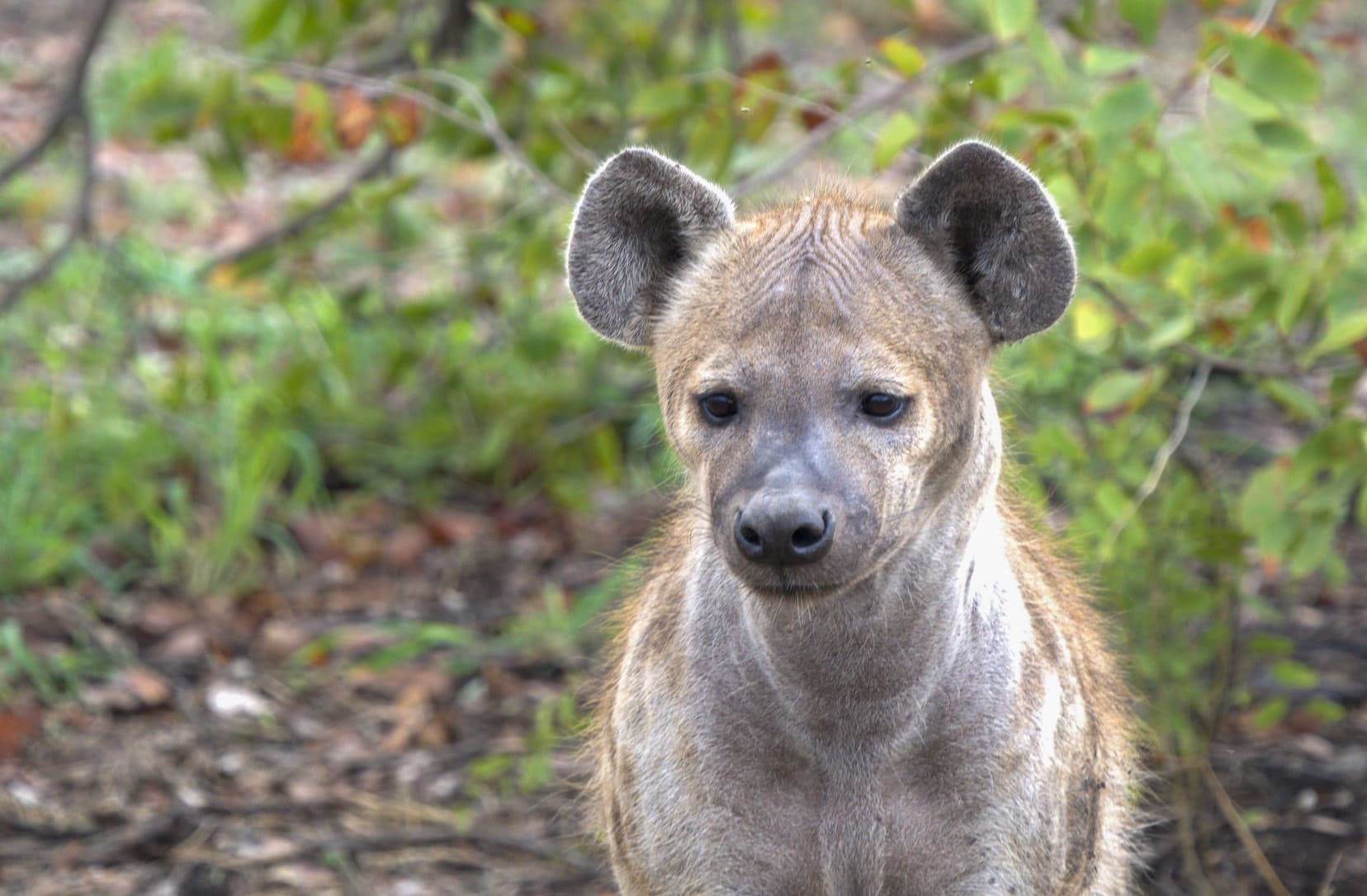
8. Cheetahs
We weren’t lucky enough to see any cheetahs while we were in Kruger. They can be extremely elusive.
Cheetahs prefer the open savanna for chasing prey because they can get their speed up. They are the fastest land animals over short distances and can reach up to 90km/hour.
Just a quick check of YouTube tells me that in mid-2023, three cheetahs were hanging out in the area between Phabeni and Kruger Gate> And in November, some were spotted in the vicinity of Nkaya Pan near Satara Camp.
Here’s a video by PKSafaris, who had been seeing them regularly in the same area.
9. Burchell’s Zebra
The Burchell’s Zebra, a subspecies of the Plains Zebra, is a distinctive and charismatic inhabitant of Kruger National Park.
Burchell’s Zebra, unlike the Mountain Zebra, is more commonly found in grasslands and savannahs. Each zebra has a unique stripe pattern, which is believed to help with camouflage and confuse predators when the herd is moving.
These zebras are highly social, forming harems led by a stallion. They often mingle with other herbivores like wildebeests and impalas for added protection against predators.
They are a common sighting in Kruger, and we often saw them hanging around with giraffes.

10. Giraffe
Giraffes are the tallest animal in the world, and there is something very special and elegant about the way they move. They are often quite inquisitive and will stand watching you for quite a while.
Adult males generally reach a height of about 5 metres and females about 4.5 metres. Both the males and females have short horns, but if you look closely, you can distinguish the male as he has a bald tip compared to the female’s hairy tips.
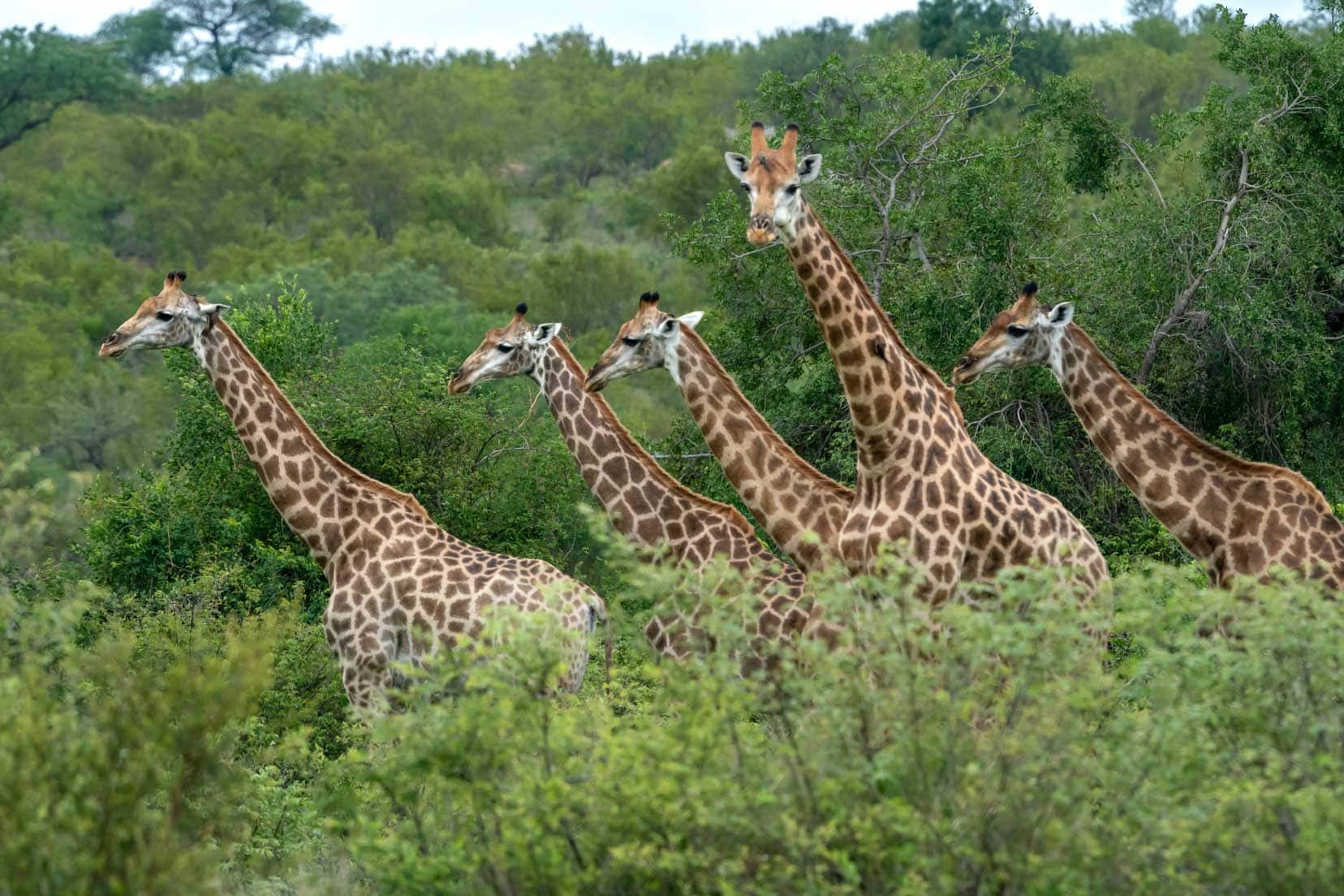
As the zebras, giraffes are also a common sight in kruger and they are spread throughout the park.
11. Antelopes in Kruger
There are so many types of antelope in Kruger Park.
The impala, kudu, nyala, steenbok, waterbuck, wildebeest, hartebeest, tsessebe and duiker (all types of antelope), will keep you guessing until you’re familiar enough not to have to scroll through your Kruger Explorer App — and we’d recommend getting that because it’s super useful.
Here are a few photos to help you start recognising all the different types of antelopes in Kruger.
Impala
Impalas are very common in Kruger and found throughout the park. You’ll likely see them grazing by the sides of the roads in large groups.
They give birth to their young in November, so if you visit in the summer, there will be no shortage of little impala trotting around.
Impalas are very vocal if they see a leopard or other predator. Their ‘bark’ has helped us more than once to spot a leopard.

Greater Kudu
The type of kudu in the Kruger is the Greater kudu and is often found in the same kind of areas as impala. Unlike Impala though, they tend to travel in small groups.
Only the male kudu have horns.

Nyala
The male nyala is easy to spot with its yellow and black legs, but the female is harder to differentiate at first. The female nyala slightly resembles an impala but has white strips on its side.
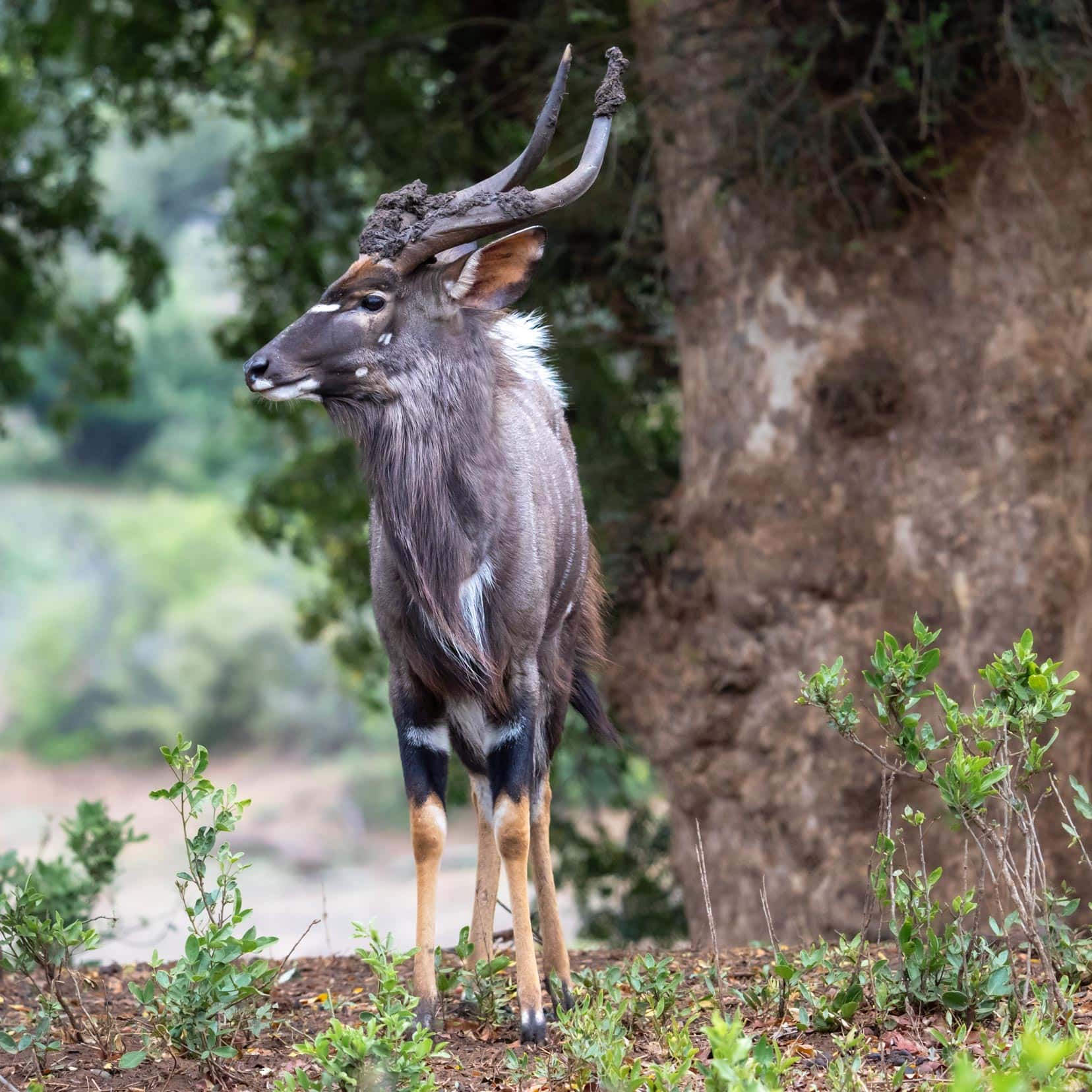
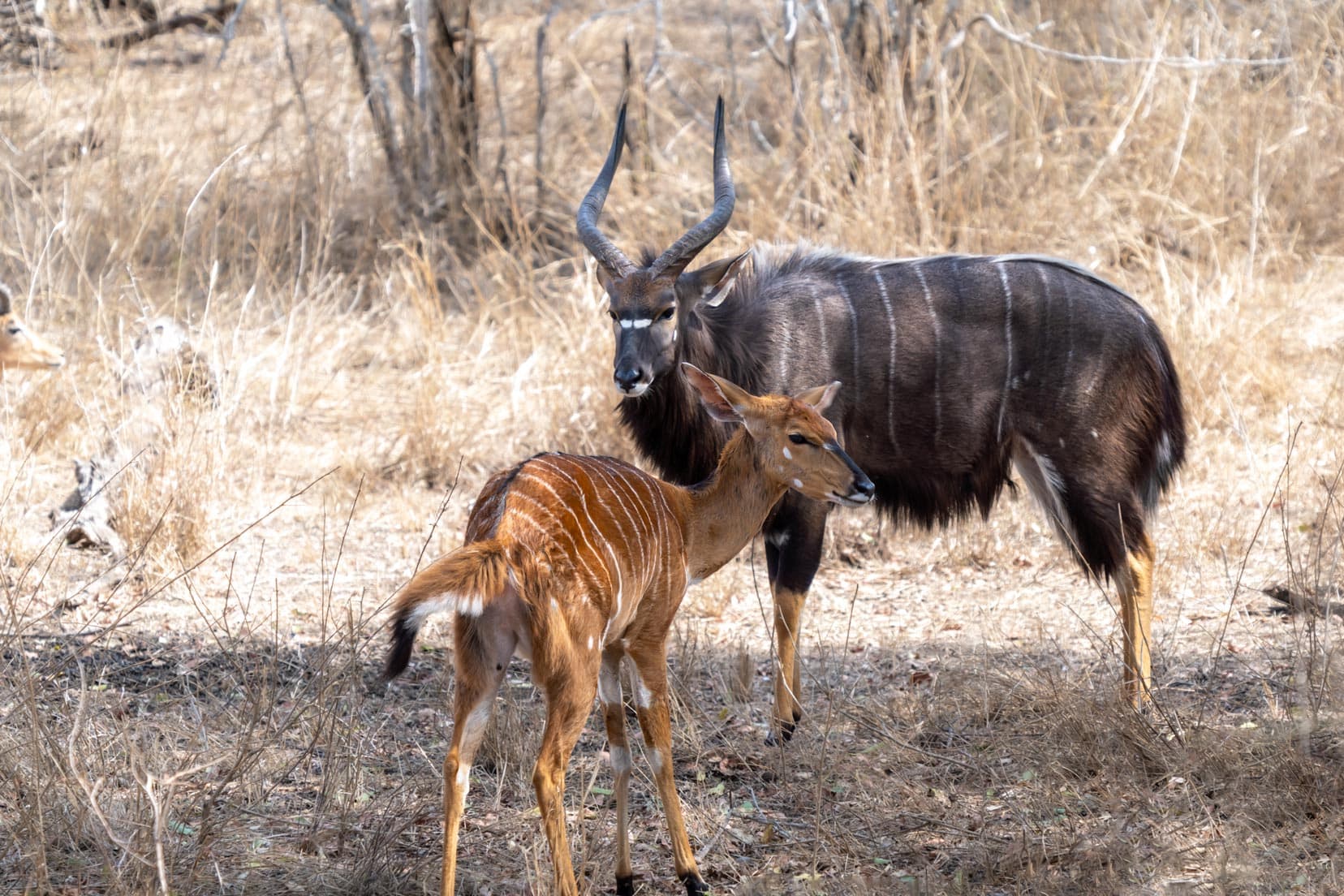
Steenbok
The steenbok is a small antelope that normally springs away when it sees you. You will most often see one on its own but occasionally, you might be lucky to see two together.
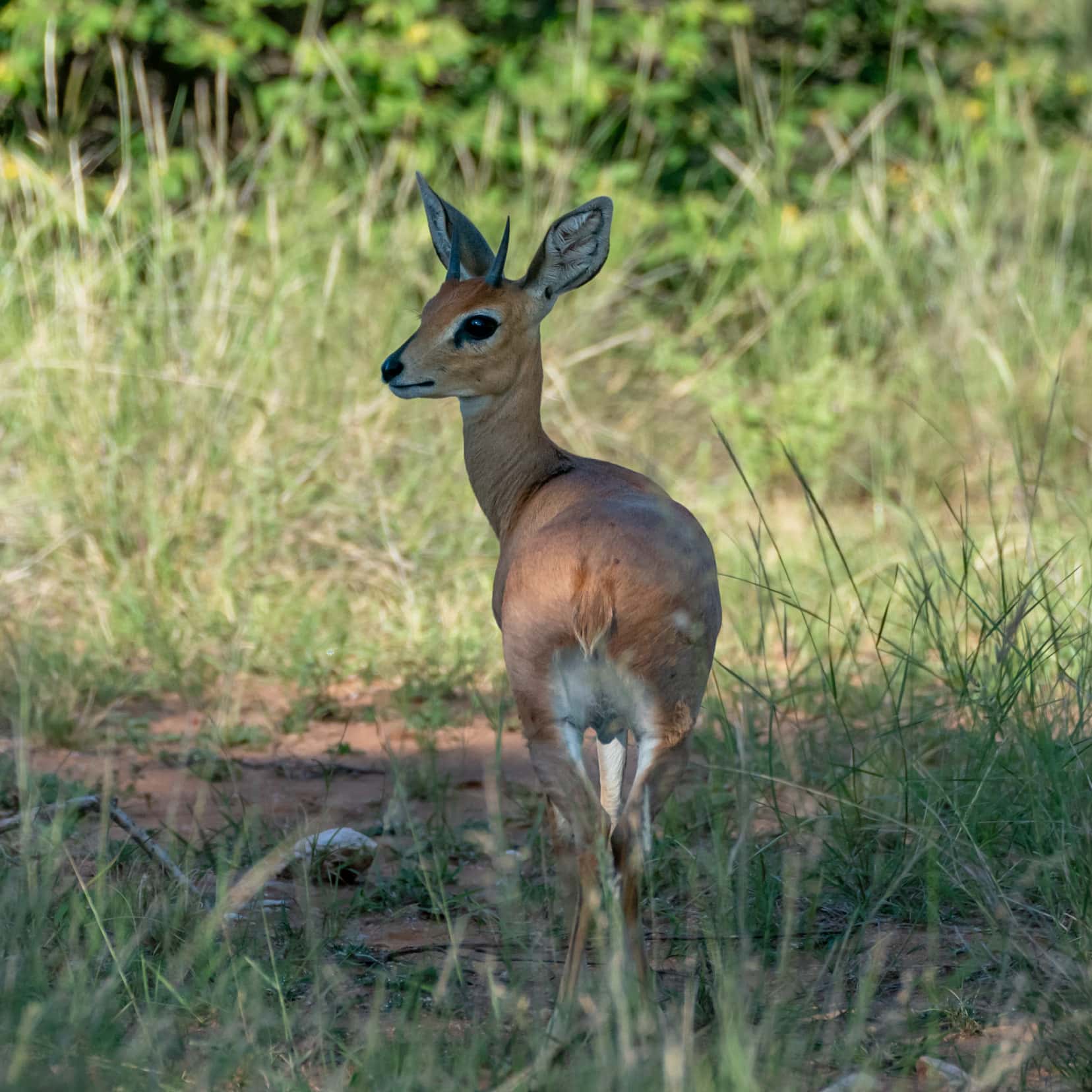
Sharpes Grysbok
This little fellow isn’t a common sighting in Kruger, as they like deep bush cover. The grysbok can easily be confused with other small antelopes, such as a steenbok, duiker or klipspringer.
A clue is to look at the coat, which has lots of white hairs, giving the grysbok an aged look.
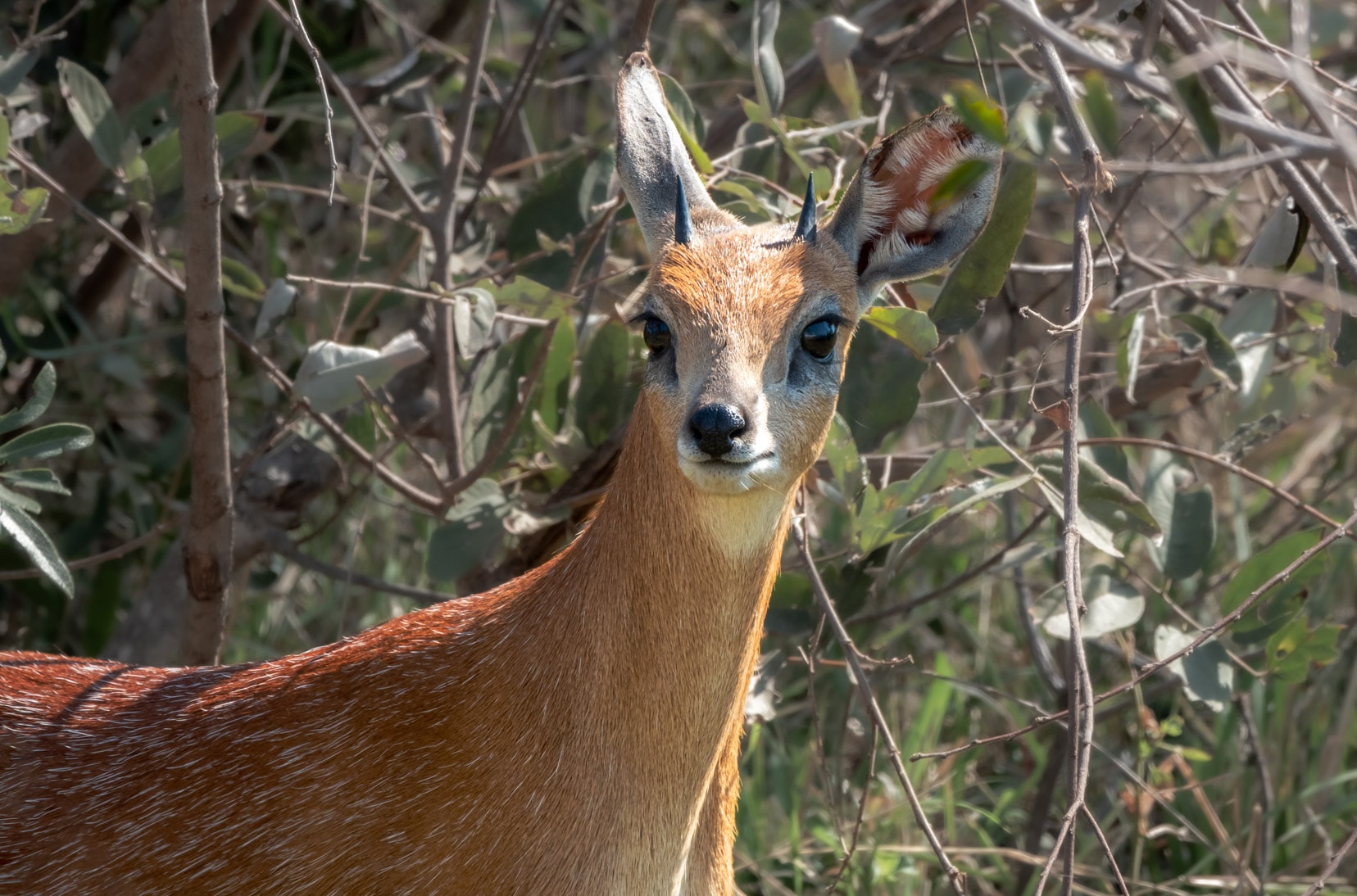
Waterbuck
Waterbuck are mostly found near water and can be recognised by their white ring-like markings on their rear. It looks a little like they have sat on wet white paint on a toilet seat.
Only the males have horns and are slightly larger than the females.
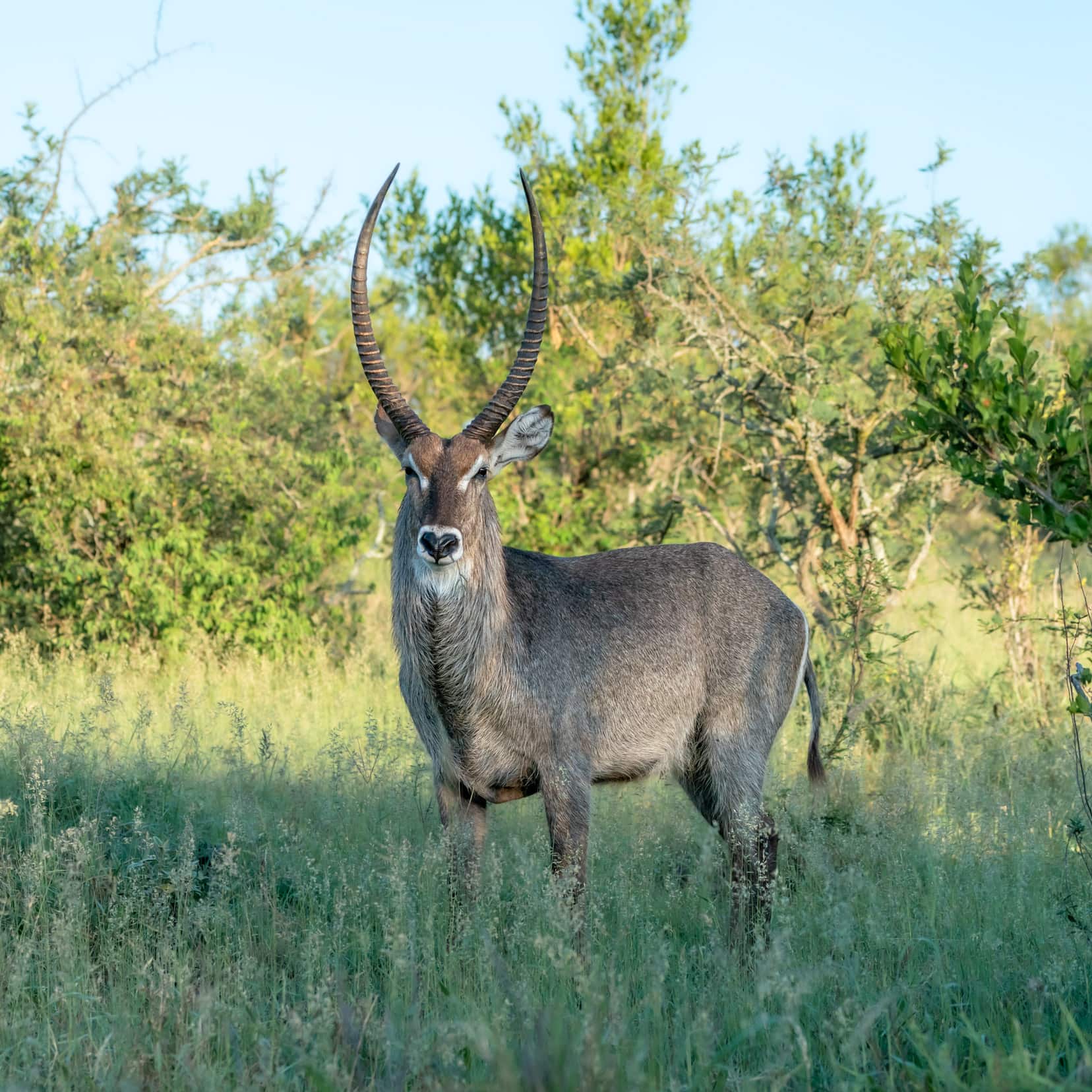
Blue Wildebeest
Blue Wildebeests have a long black mane along their back and a black beard stretching from their chin to their throat.
Both the male and female Wildebeest have short curved horns. The female gives birth to one calf in the summer, which is able to run within minutes of being born.
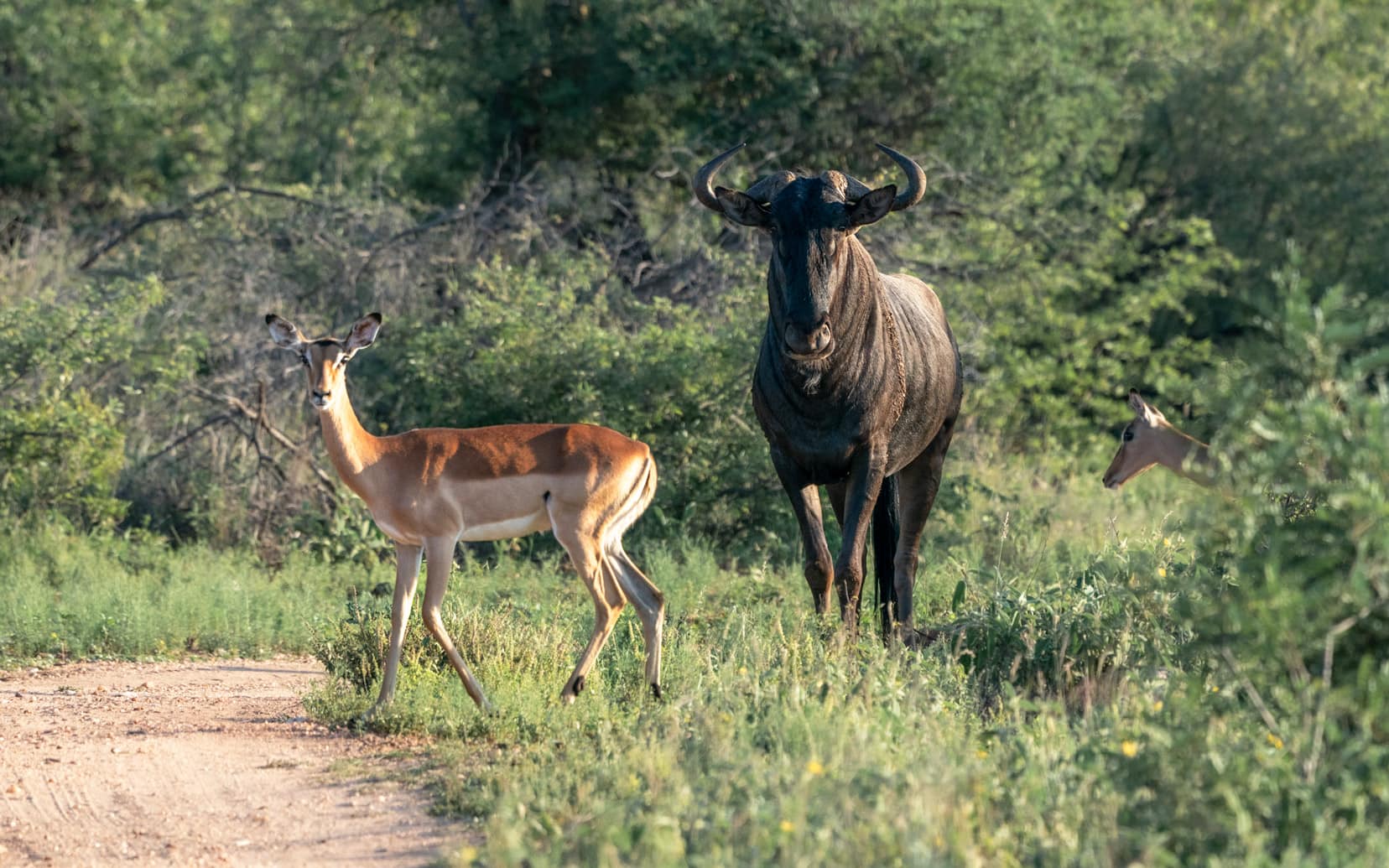
Tsessebe
Tsessebe (pronounced T-Zeb-ee) is another type of antelope – not to be confused with Lichenstein’s hartebeest, which looks very similar.
The difference is that tsessebe is smaller and darker, and its horns are wider apart. The Lichenstein’s hartebeest horns are more heart-shaped.
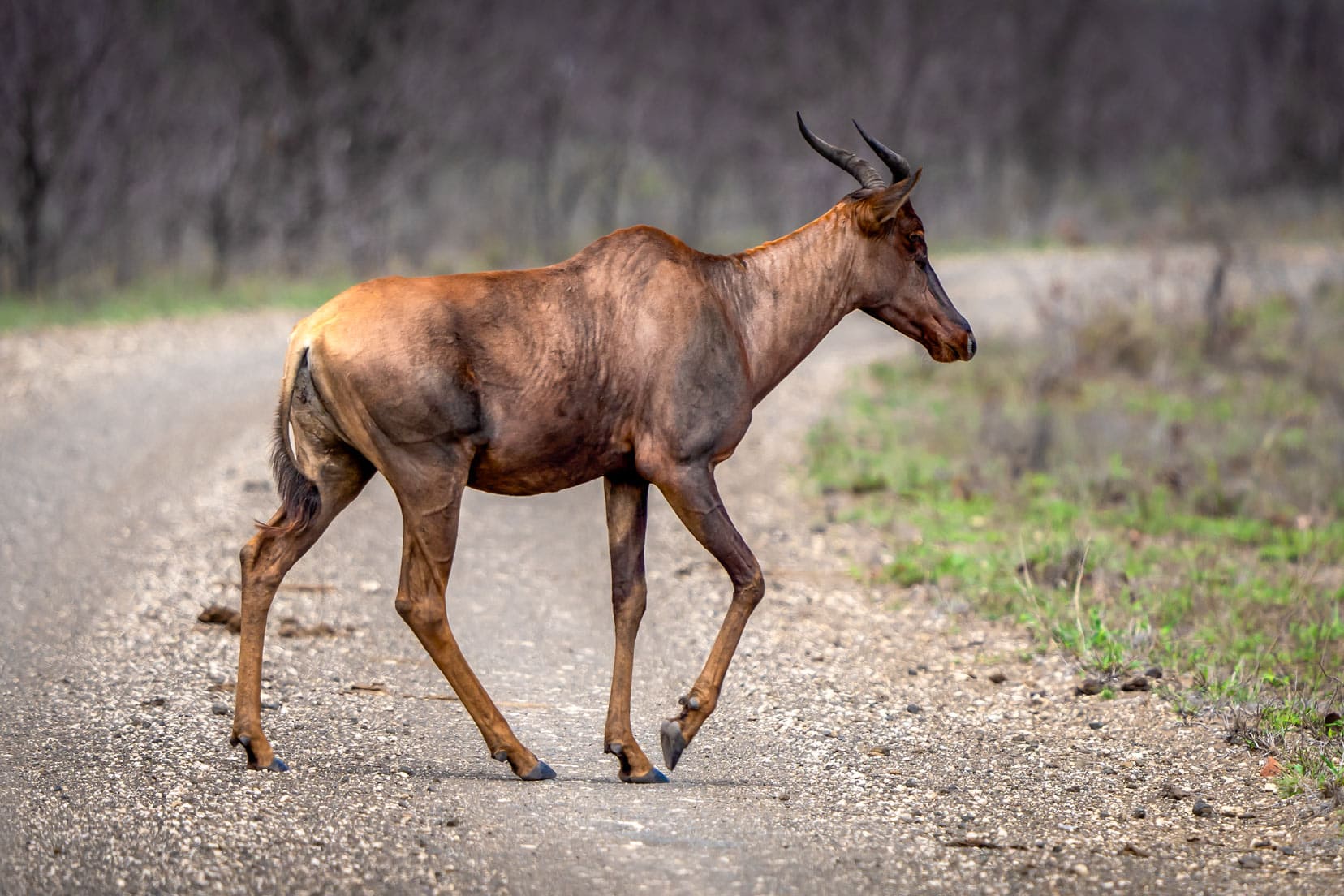
Other antelopes
If you thought that was a lot of antelope to get your head around, there are even more:
Other antelopes that you might come across in Kruger include:
- Eland (the largest antelope in Kruger) – uncommon sighting
- Bushbuck – can be seen around some Kruger camps
- Roan – a rare sighting in Kruger
- Duiker – small commonly seen antelope
- Sable – a rare sighting in Kruger
- Reedbucks – not a common sighting in Kruger
12. Hippos in Kruger
The day becomes complete when your eyes are set upon a dazzle of zebras, a tower of giraffes, a confusion of wildebeest or a bloat of hippos.
And we certainly saw our fair share of bloats of hippos in Kruger.
We saw many hippos in Kruger, and contrary to textbook behaviour, they don’t just come out of the water at night. We saw many laying out in the sun and grazing along the riverbanks during the day.
💡Note – if you love hippos – while in South Africa, take a trip to iSimangaliso Wetlands, particularly St.Lucia. Hippos walk around the town at night!
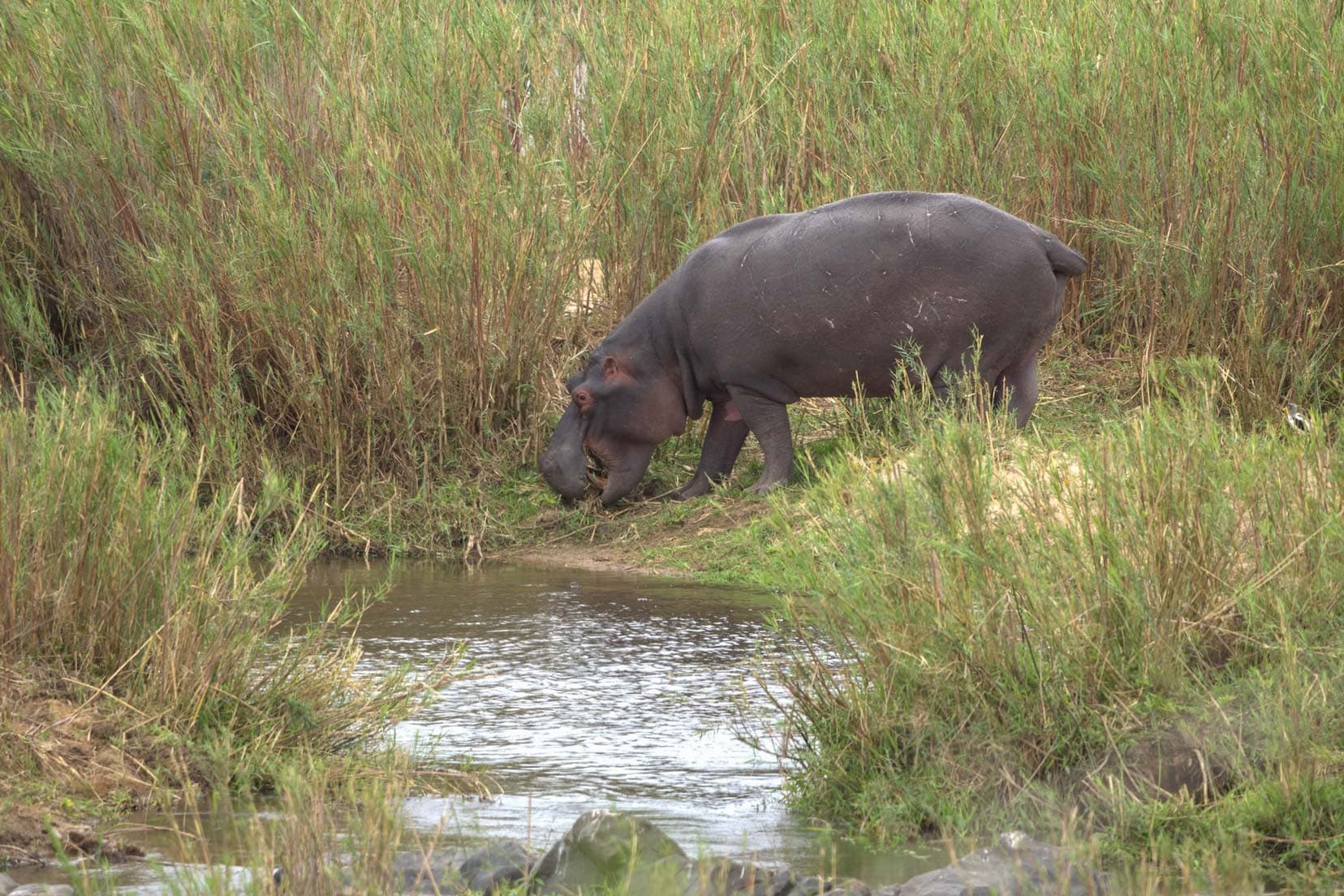
Rare Sighting of Animals in Kruger
The rarer animals to be seen in Kruger are the pangolin and black rhinos and some antelope species, such as Sable and Roan antelopes.
But would you believe it if we told you that we actually saw a pangolin in Kruger National Park?
Incredibly, it was just a few weeks since we’d seen our first sighting of a pangolin in Klaserie National Park in Greater Kruger.
Some rangers we spoke to had lived their whole lives in South Africa, worked in the bush, and had never seen a pangolin in the wild. So we were extremely lucky.
It was one of our most treasured wildlife sightings.
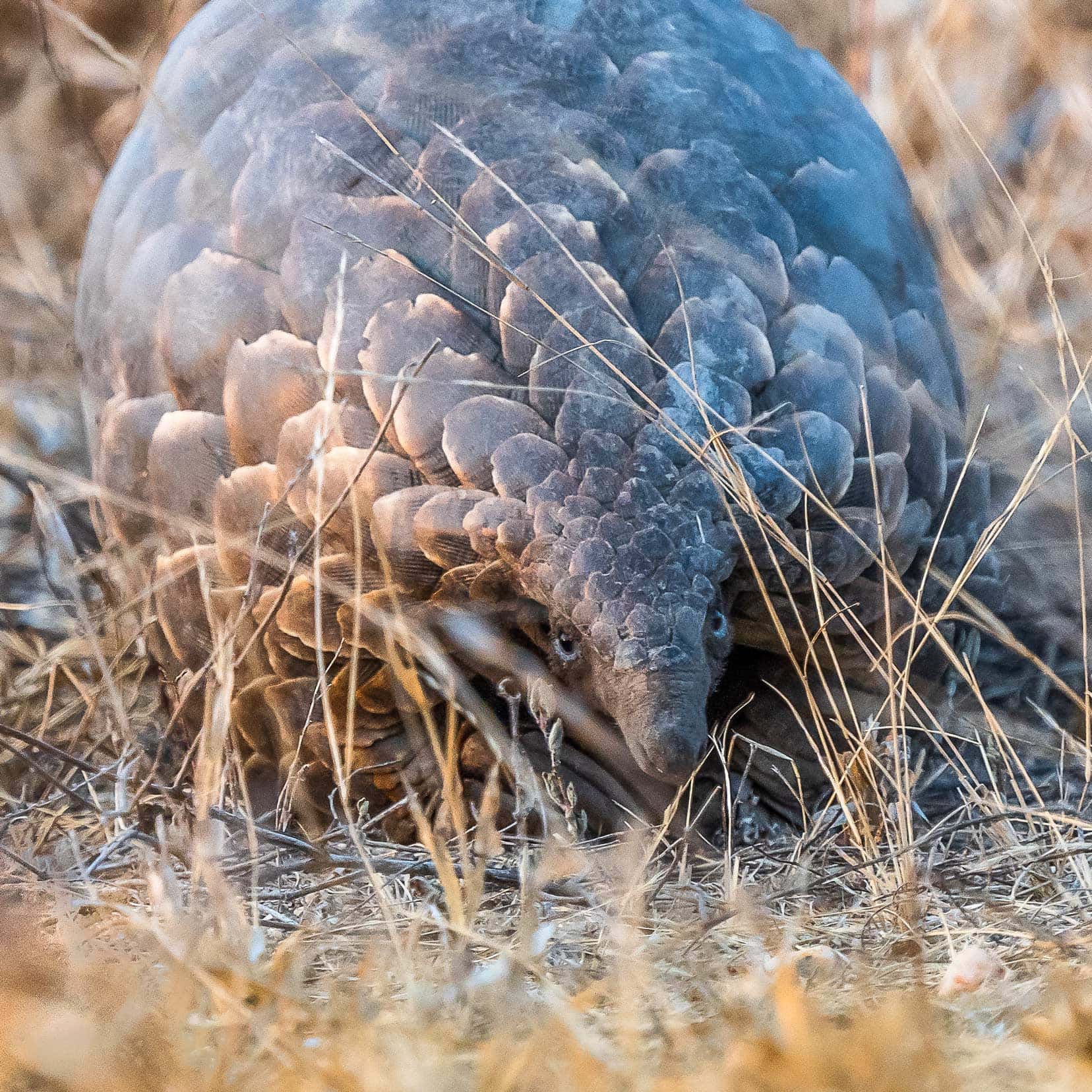
The Ugly Five of Kruger
The Ugly Five
♦ Hyena ♦ Warthog ♦ Vultures ♦ Wildebeest ♦ Marabou Stork
The Big Five have developed and marketed their brand well – with most of us knowing the stars of the show.
But just because they have top billing doesn’t necessarily mean they are the most talented or most interesting of the animals in Kruger.
History has labelled them as such because hunters used to find them the most difficult and dangerous to shoot and capture. But there are a number of other mammals just as, if not more interesting as some of the Big 5.
So, let me introduce you to the Ugly Five of Kruger.
1. Hyena
As mentioned earlier, I’m not sure the hyena deserves this, but here it is, nonetheless, as one of the ugly five.
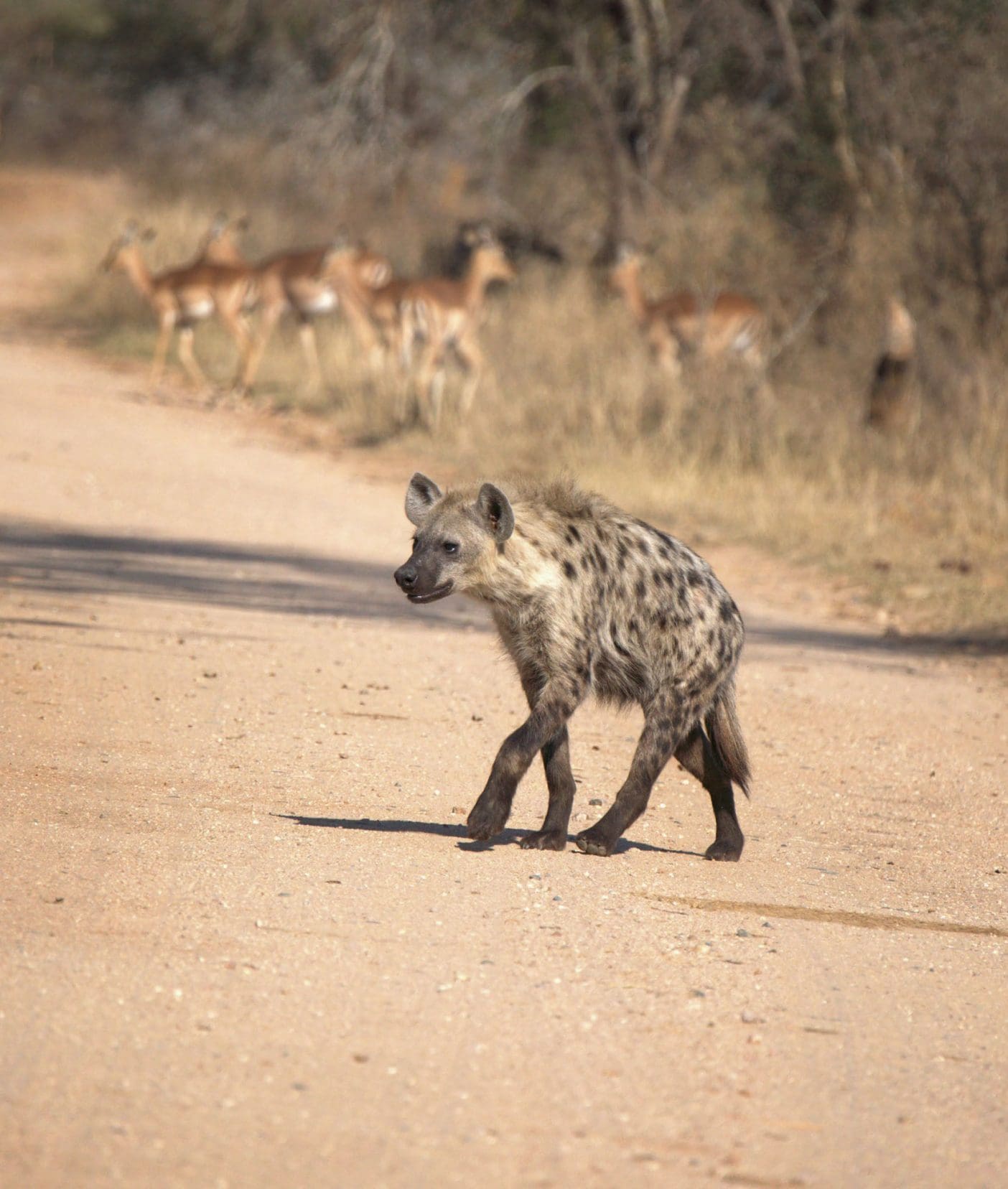
2. Vultures
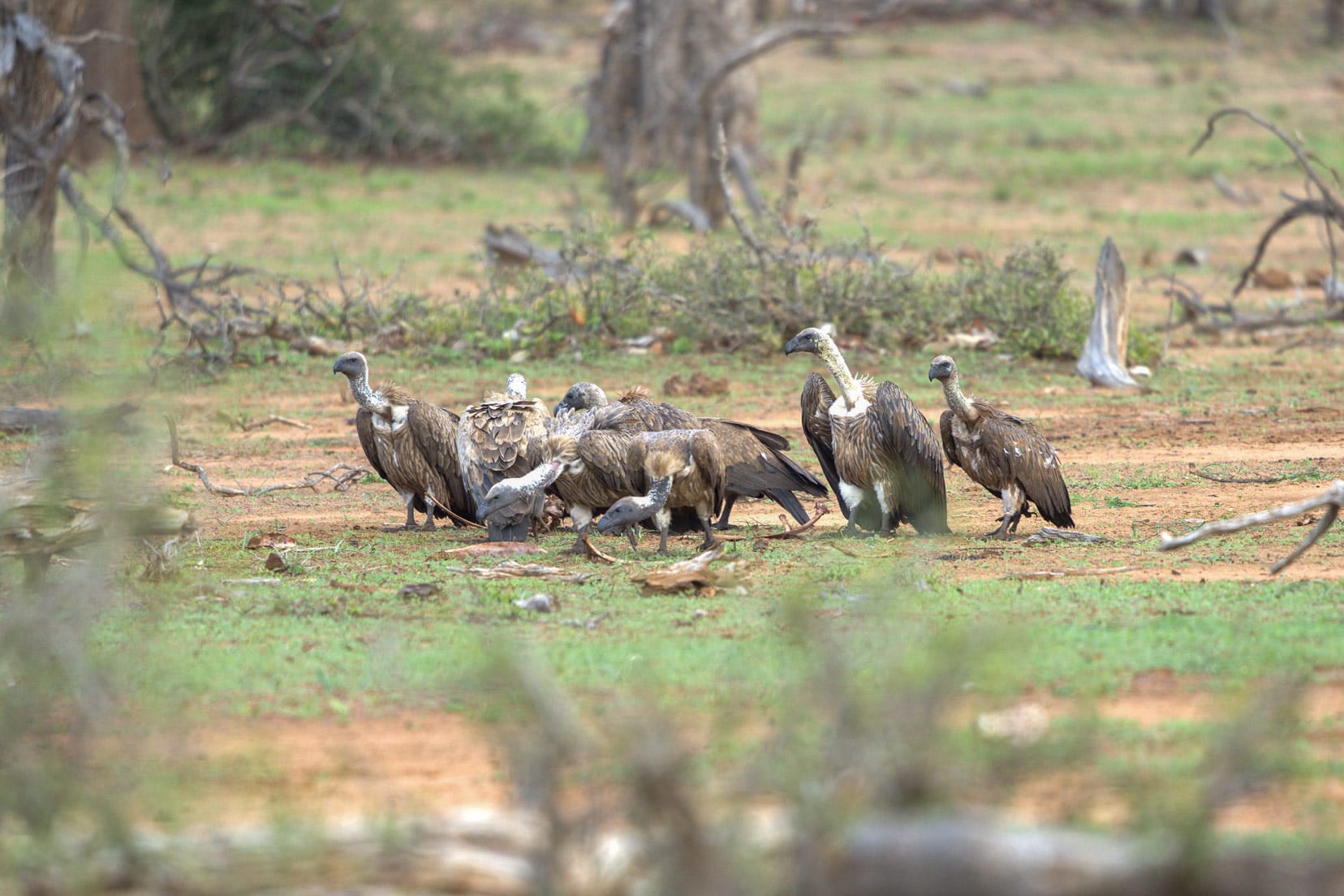
The vultures – well, yes, they’re probably not the prettiest of birds soaring the skies above Kruger.
Nonetheless, they do an excellent job of cleaning up every last scrap and morsel of the mess left behind by the predators.
3. Black-backed Jackal
The black-backed jackal is another animal you might see in Kruger and will also be happy for any scraps it finds.
We didn’t come across any in Kruger – so we’ve included a photo of one little fellow we saw in Namibia. They look a little like a fox but have a distinctive black strip across their back.
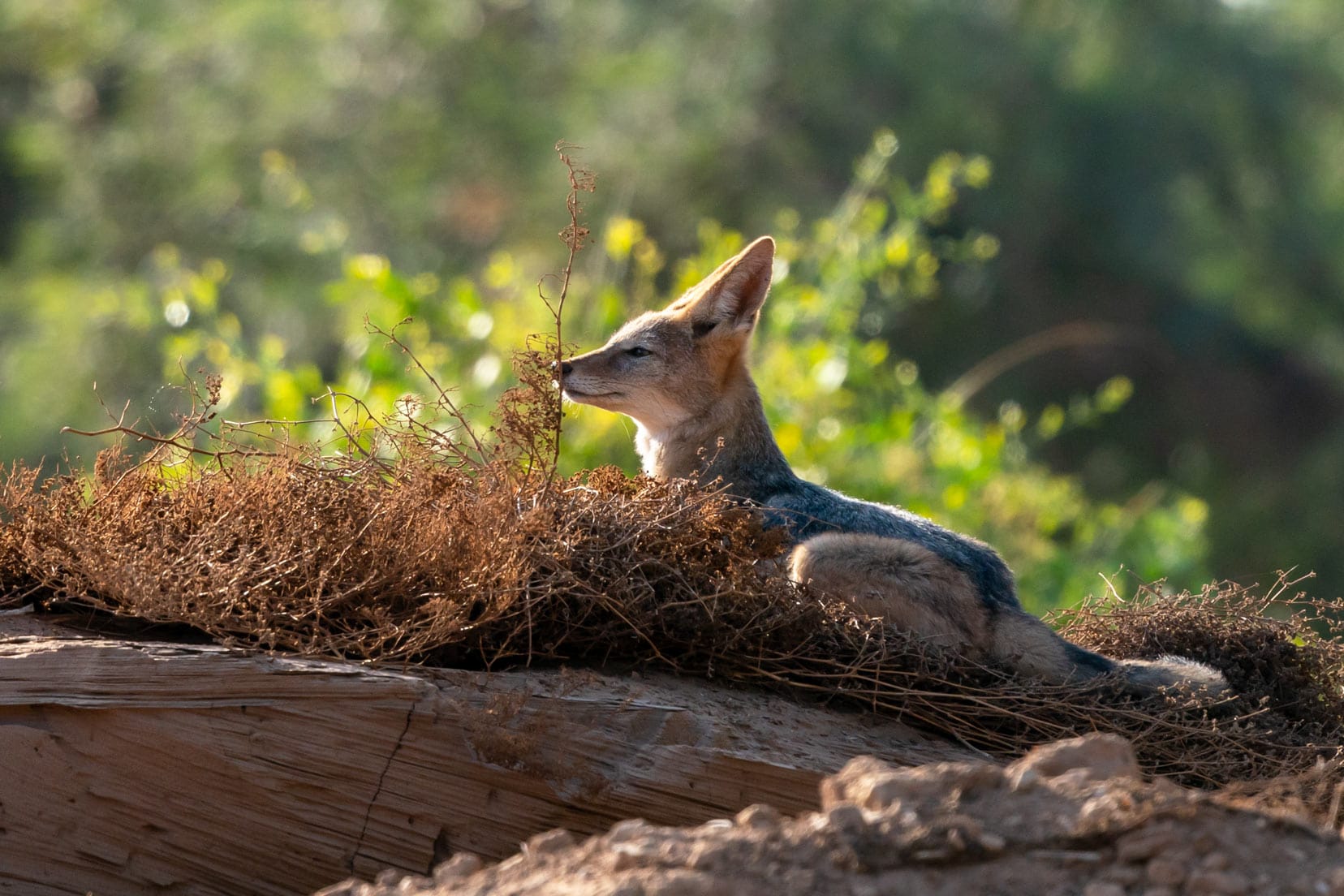
4. Marabou Stork
As well as the vulture, another bird in the Ugly 5 group is the Marabou stork, which does indeed have a very unfortunate look about it.
You’ll likely find these in the trees or by the river just outside the entrance to Shingwedzi’s main camp.

5. Warthog
The warthog, usually a common sighting in Kruger, is often found kneeling on its front legs, grazing and digging in the dirt or quickly trotting through the undergrowth.
Again, it’s probably a fair call to be lumped into this group, but it’s just as well they won’t be reading this — I’d hate for them to develop any self-esteem issues.
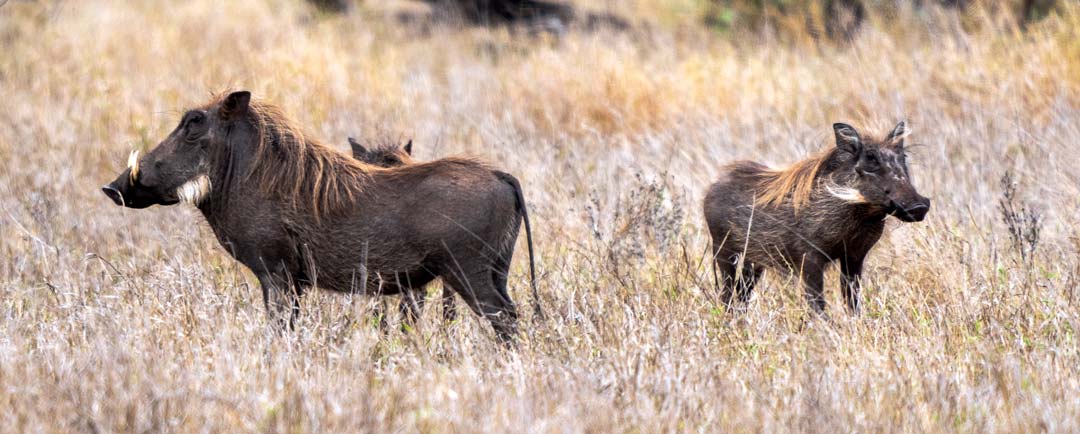
The Small Five and the Shy Five
There are also many smaller and more obscure animals in Kruger, some of which have been grouped into their own Big Five equivalent.
The Kruger Ugly Five go hand in hand with the Small Five and the Shy Five.
I imagine these have been grouped together to highlight the other, albeit uglier, smaller, and shyer animals found in Kruger that are just as deserving of our attention.
For us to appreciate the underappreciated.
The Small Five:
- Leopard tortoise
- Lion ant
- Rhino beetle
- Elephant shrew
- Buffalo Weaver
The Shy Five:
- Meerkat
- Aardvark
- Porcupine
- Aardwolf
- Bat-eared fox.
So many other animals in Kruger National Park deserve our attention, and Kruger is not Kruger without the whole gambit of wildlife.
BIRDS OF KRUGER
Hornbills and rollers, bee-eaters and kingfishers, hoopoes and shrikes. These are just a few of the bird names that’ll be rolling off the tongue in Kruger.
Not having a huge knowledge of South African birds, we were intrigued by the variety and appearance of Kruger’s array.
There are far too many bird species to go into detail about here, so we’ve covered them in much more detail in our Birds of Kruger post.
One thing for sure is that Kruger is definitely a birder’s paradise.
Here are just a few of our favourites:
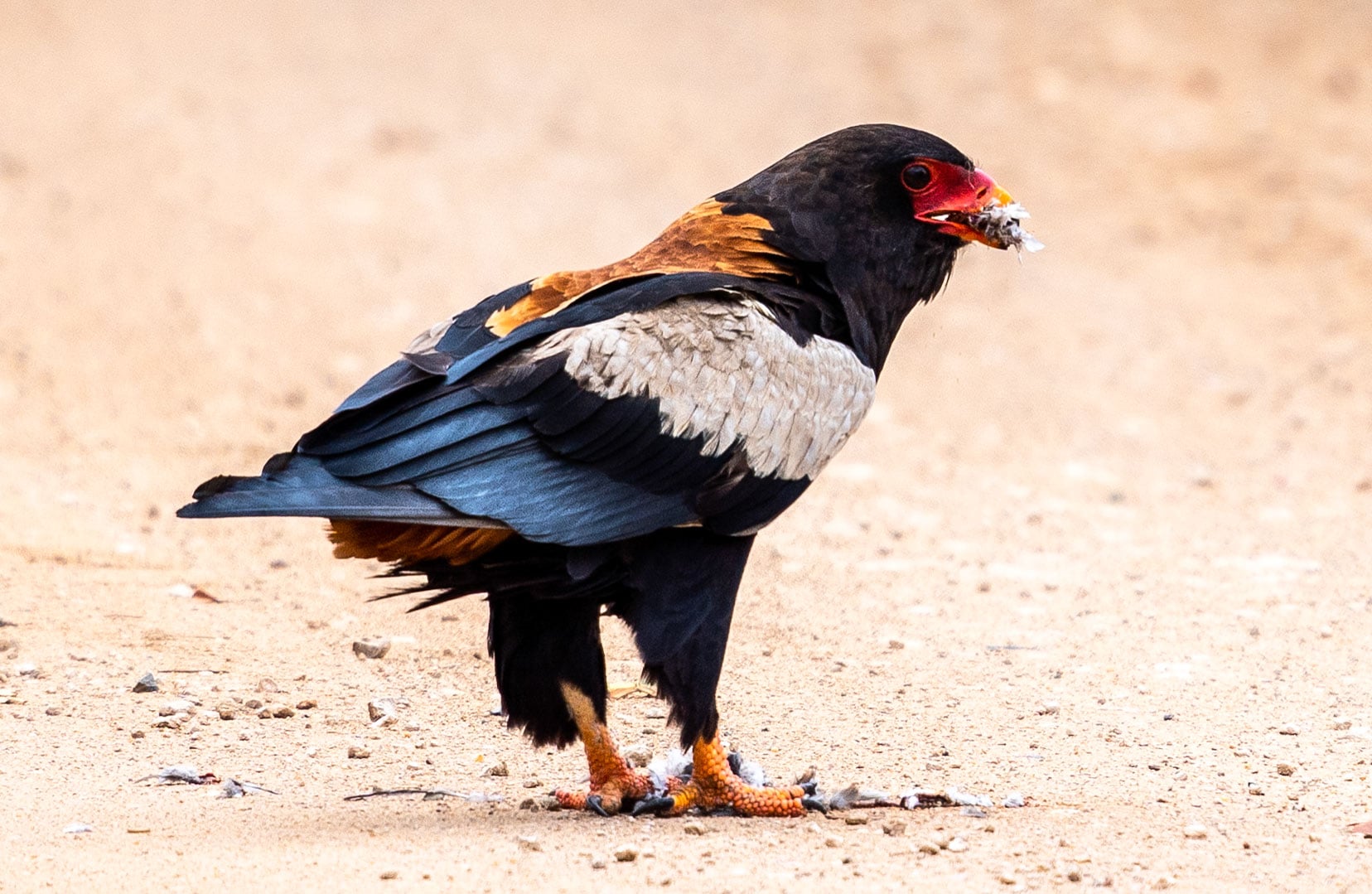
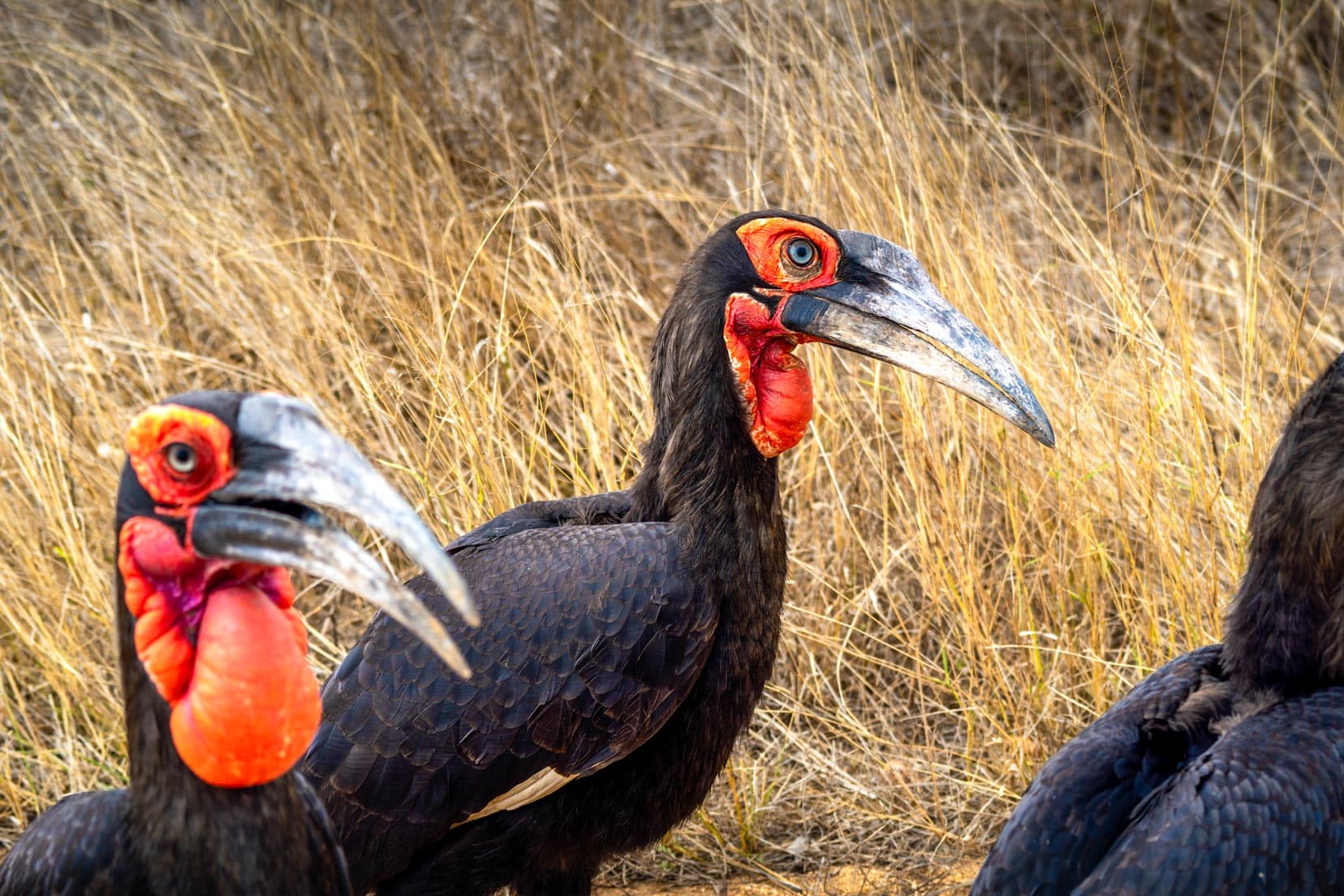

Best Places to Spot Wildlife in Kruger
Animals in Southern Kruger
Popular for self-drive safaris due to abundant wildlife. Notable sightings include rhinos, lions, cheetahs, leopards, and wild dogs.
What we saw
Lions, leopards, wild dogs, rhinos, giraffes, zebra, steenbok, impala, nyala, baboons, vervet monkeys, elephants, buffalo, kudu, waterbuck, hippos in and out of the river, and pangolin.
Good Places for Sighting Kruger Animals
- Lower Sabie Area: Known for its abundant wildlife along the Sabie River. Famous for lions, leopards, elephants, rhinos, and buffalo.
- Biyamiti Weir Viewpoint: Good for spotting Hippos, crocodiles, birdlife and giraffes
- H4-2 Crocodile Bridge to Lower Sabie: This road is known for spotting rhinos and cheetahs
- The H4-1 north of Lower Sabie Rest Camp: Drive along the picturesque Sabie River and take a detour along the N’watimhiri Causeway
- Sunset Dam (near Lower Sabie Rest Camp): The perfect place to chill and watch the various animals come to drink. Here, you’ll see hippos, crocs and plenty of water birds.
- Lubyelubye River Crossing: As you drive south towards Lower Sabie, there are a few pull-offs to the left, just before the crossing. There are great views of the river here, and it is an excellent place to spot leopards and lions.
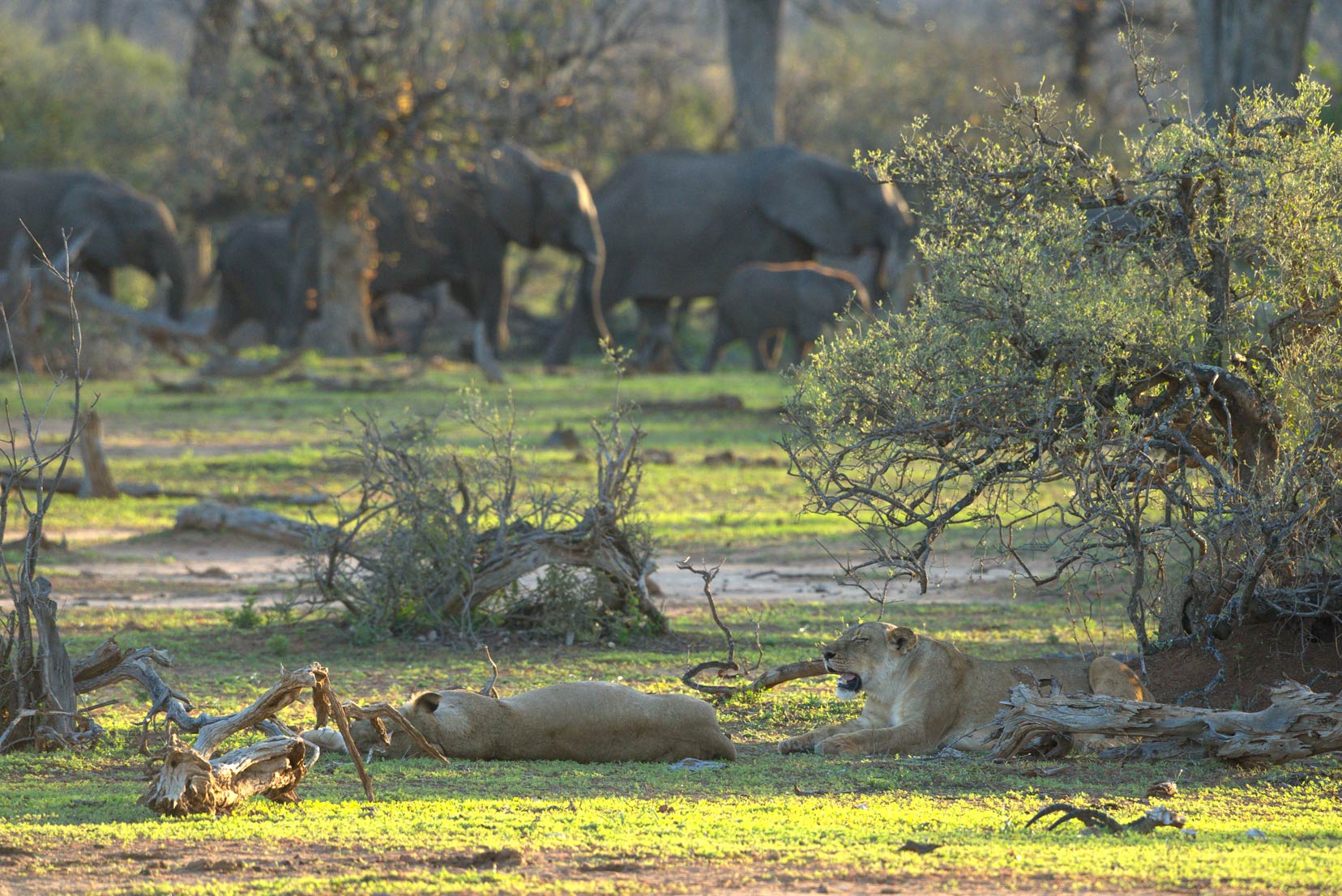

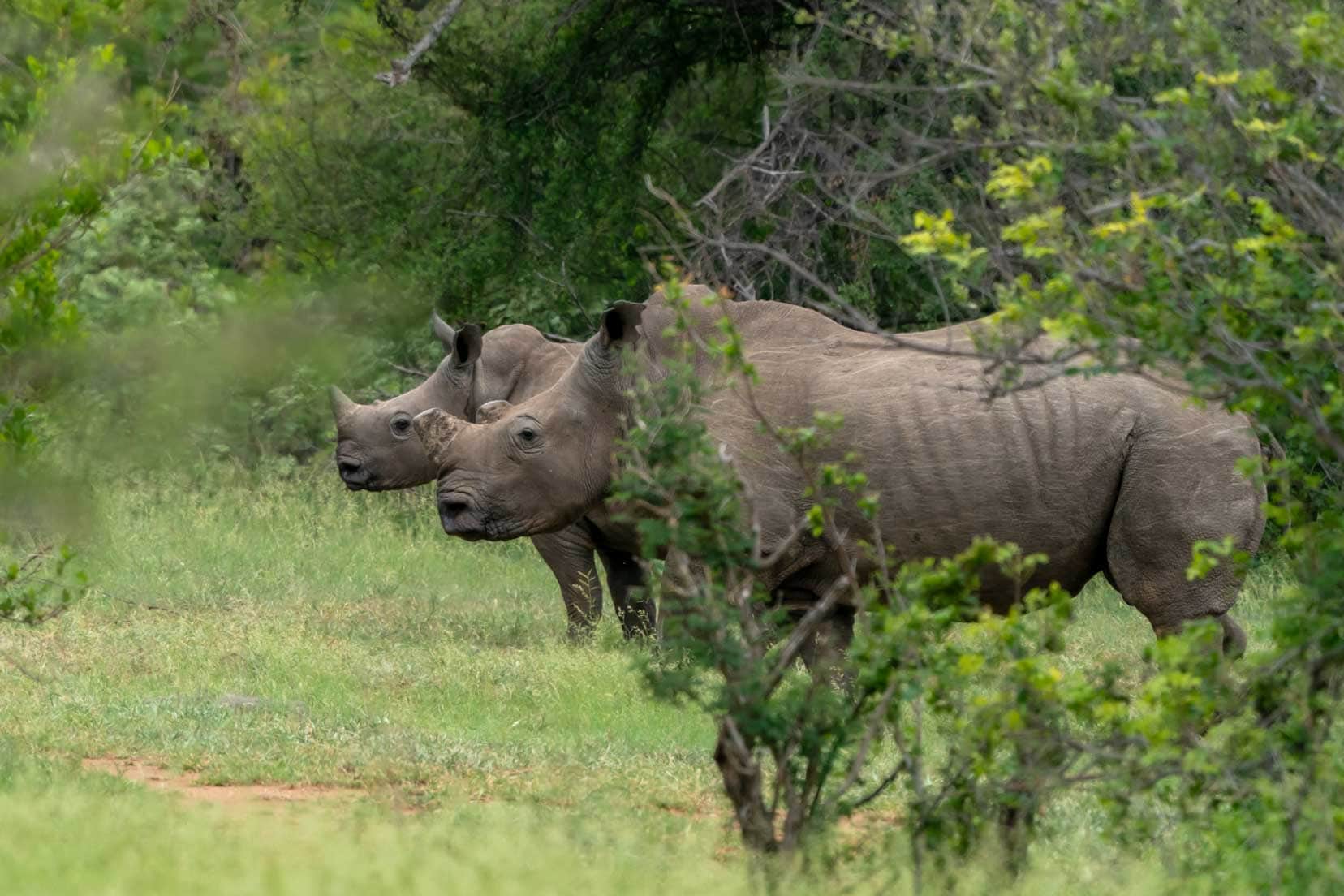

Animals in Central Kruger
Central Kruger has more open savannah grasslands where you can find lots of zebra, wildebeest and the odd ostrich. It is known for lions, cheetahs and leopards. You can find troops of baboons and vervet monkeys, hippos and crocodiles near the rivers.
What we saw
Lions, giraffes, zebra, steenbok, impala, baboons, vervet monkeys, elephants, kudu, waterbuck, blue wildebeest, honey badger, hyena and lots of Swainson spurfowl by the roads.
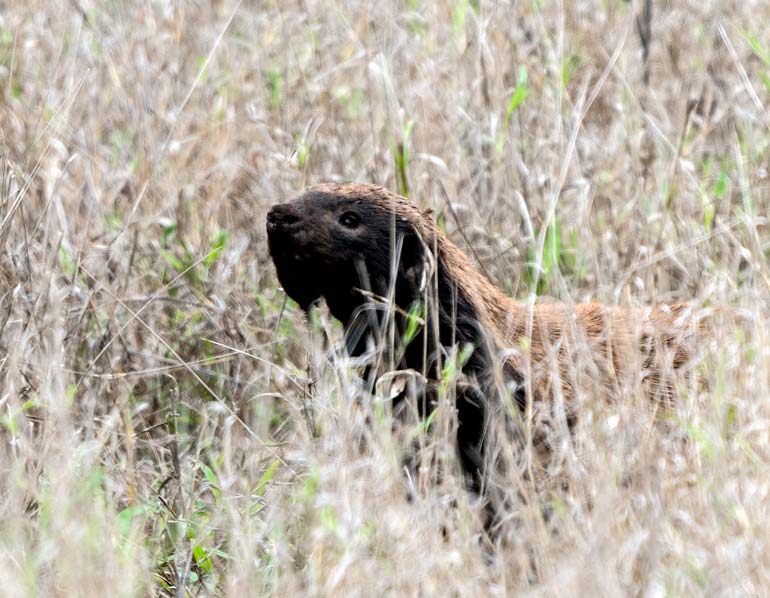
Good Places to Spot Animals in Central Kruger
- The S100: This route has a mixture of riverine landscape and open savannah and is known for great sightings. However we saw plenty of grazers here, but even though we drove it about 5 times, we never saw any predators. As always – it’s your luck on the day.
- The Sweni Bird and Game Hide: A lovely dam with hippos, crocs and plenty of waterbirds.
- H1 -3 Tshokwane Picnic site to Satara: This route has lots of open savannahs, so it’s relatively easier to spot animals. The picnic area at Tshokwane overlooks the river. And it was here that we watched elephants digging holes in the sand in search of water underneath.
- Satara Rest Camp Area: Located in Kruger’s central region, it’s a hotspot for large herds of grazers, including zebras and wildebeests.
- Timbavati River Road: Excellent for birdwatching along the park’s western border.
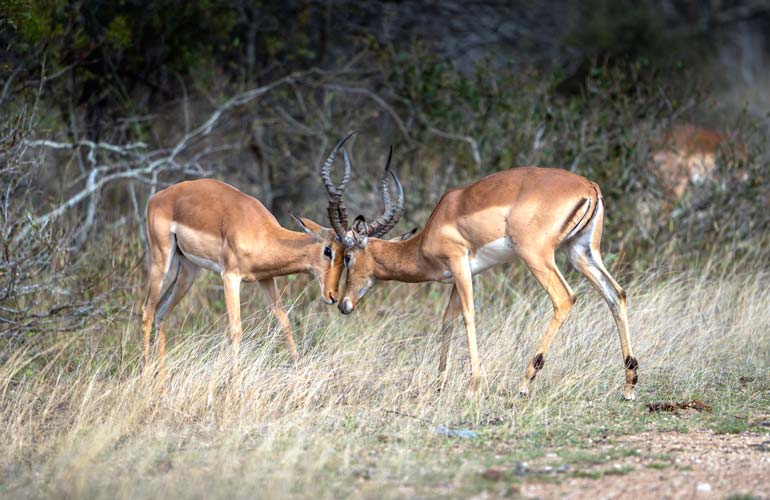
Wildlife Viewing in Northern Kruger
The game viewing in the north of Kruger is not as prolific as in the south; therefore, this area has fewer visitors. This means that any viewings you have are likely to be far less crowded. It is known for its big tuskers and its birdlife.
The northern part of Kruger attracts a wide variety of birds and is known as one of the premier birding areas in the world.
What we saw
Elephants, leopards, baboons, vervet monkeys, impala, waterbuck, kudu, hippos, grysbok, nyala, zebra and giraffe.
Good Places to Spot Animals in Northern Kruger
- The whole area: Bird watcher’s paradise
- Crooks Corner
- Mphongolo Loop (our favourite route of all)
- Shingwedzi Loop (S52)
- Red Rocks Lookout
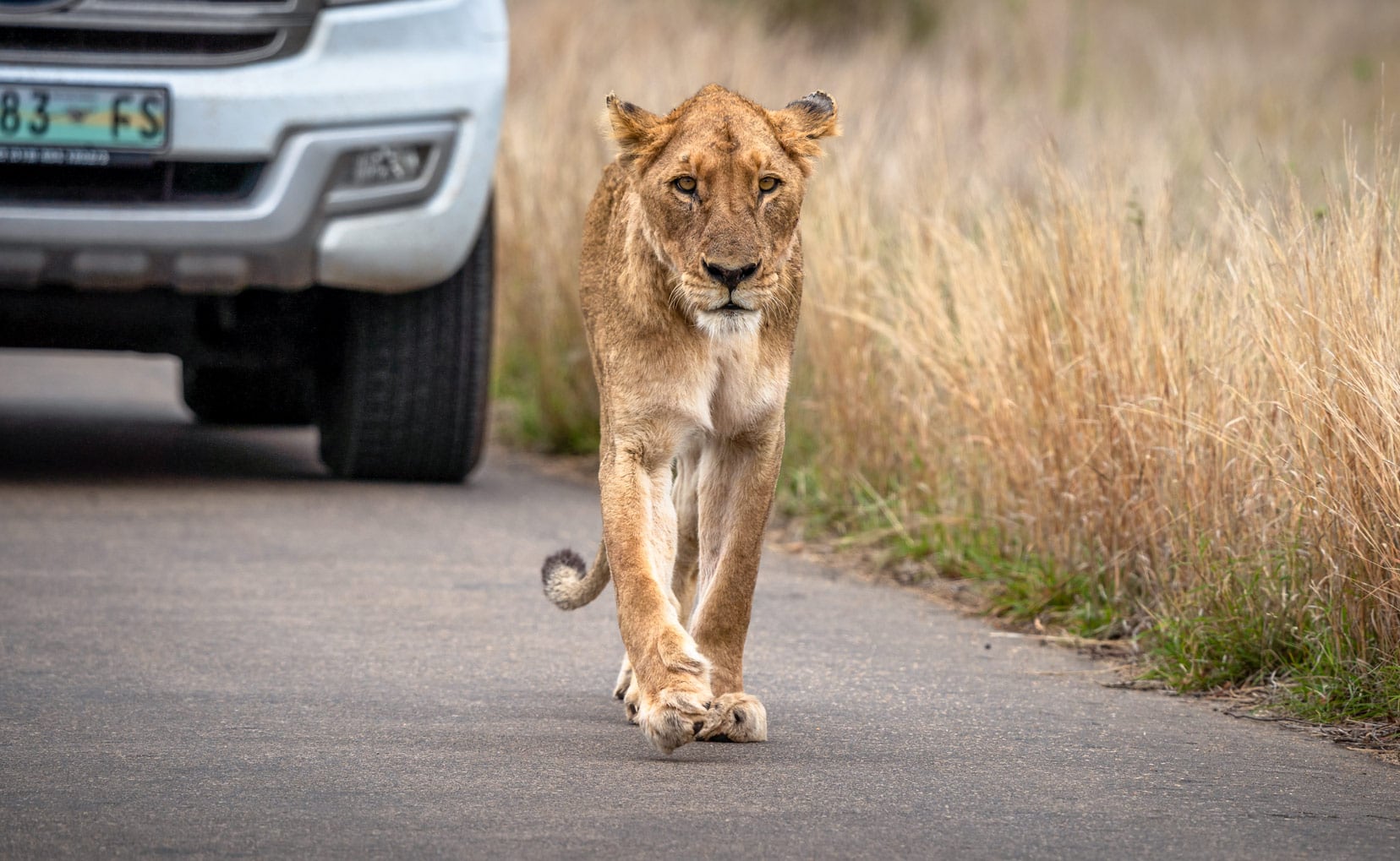
Why Kruger is a Great Safari Destination in South Africa
Kruger National Park is widely praised as one of the best safari destinations in South Africa and for good reason.
With the park stretching over such a vast swathe of northeast South Africa, Kruger offers an incredible diversity of wildlife and vegetation.
Visitors have the opportunity to spot the famous Big Five: elephants, lions, leopards, rhinos, and buffalo in their natural habitats.
Because the animals in the Kruger are habituated to cars, it is easier to watch many animals go about their daily business seemingly unperturbed by the visitors around them.
We found that it was easier to find and photograph the animals in Kruger National Park because the wildlife didn’t bolt away compared to those not habituated to vehicles. Such as when we were camping and driving on safari in the more remote and less busy Botswana National Parks.
Kruger caters to every type of traveller as it has a wide range of accommodation options, from luxury lodges to camping sites.
Many of the campsites have shops and restaurants and offer game drives, including guided walks, bird watching, and night drives.
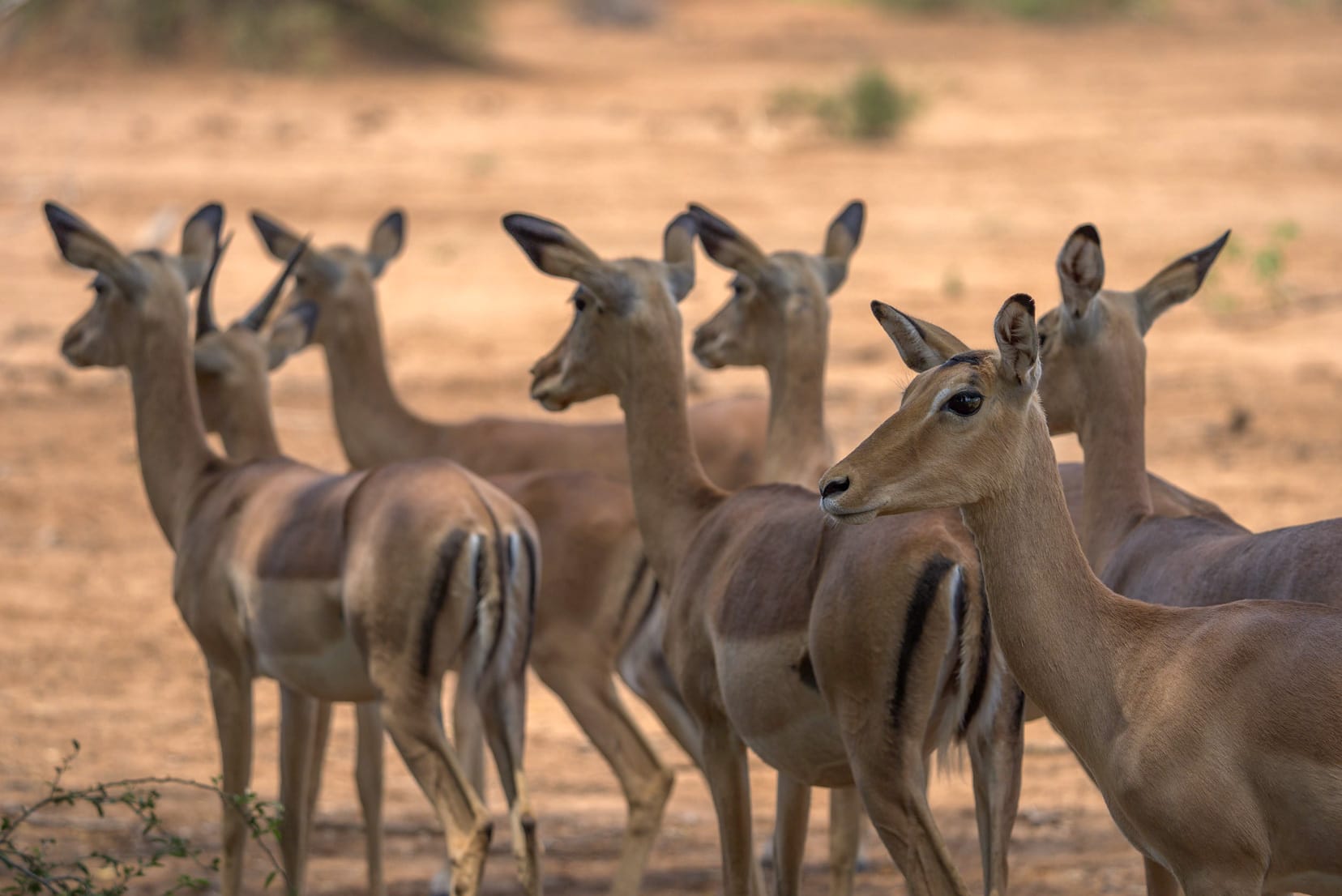
Best Time to Visit Kruger National Park
The best time to visit Kruger depends on what you want to see and experience.
The park is open year-round, but the dry winter months from May to September are considered the best time for game viewing.
During this time, the vegetation is less dense, making it easier to spot wildlife, and the animals gather around water sources, making them easier to find. The weather is also more pleasant, with warm days and cool nights.
If you’re interested in birdwatching, however, the best time to visit Kruger is during the wet summer months from October to March. Many migratory bird species visit the park during this time, and the landscape is lush and green.
The summer months also bring baby animals, as many species give birth during this time.
Ultimately, the best time to visit Kruger National Park depends on what you prioritize – whether it’s game viewing, birdwatching, or seeing newborn animals.
Nightfall in Kruger
As dusk descends over Kruger National Park …
Hyenas whoop their ghostly calls.
Baboons and vervet monkeys take to the trees to roost.
Hippos grunt in a chorus before hoisting their bulbous bodies onto land, grazing 40 kilograms of grass before daybreak.
Tiny bats swoop and flit as darkness sweeps across the savannah.
A lion roars, signalling the start of the Hunger Games – where no one is safe and only the strongest and smartest survive.
A shriek of a bird or bark of a baboon in the darkness — a reminder that the night is full of surprises as predators prowl.

FAQs on Animals in Kruger National Park
All of the most iconic African animals live in Kruger National Park, including the Big Five, elephants, rhinos, buffalos, lions and leopards, as well as many antelope species, zebras, giraffes, hippos, African wild dogs, warthogs, spotted hyenas, honey badgers, cheetahs and more.
Kruger National Park is home to 148 mammal species.
The most common animal seen in Kruger is the impala. You can’t drive far without coming across these pretty little antelopes. Other common sightings are elephants, zebras, and giraffes.
The rarest sighting in Kruger is a pangolin — though we were extremely lucky to see one in Kruger National Park. The next rarest sighting in Kruger would be the black rhino and a few of the antelope species, such as roan and sable.
Yes, there are cheetahs in Kruger National Park, but you would have to be extremely lucky to see one.
There are two main types of monkeys in Kruger, Vervet Monkeys, and Chacma Baboons.
There are no tigers in Kruger National Park as they are not native to Africa.
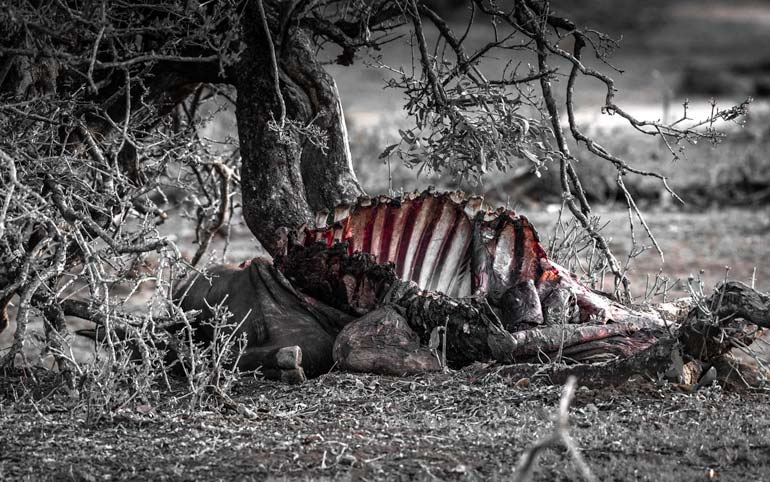
Animals in Kruger National Park … That’s a Wrap
We hope this article has given you enough information on the animals of the Kruger National Park so you will know what to expect when you embark on a safari there.
As you can see, the park is home to many animals and birds and is one of the best places to spot Africa’s iconic wildlife.
Immersion in nature does wonders for the soul, and reminds us of the connectedness of all who share this planet.
Kruger is a feeling – it captures your heart.
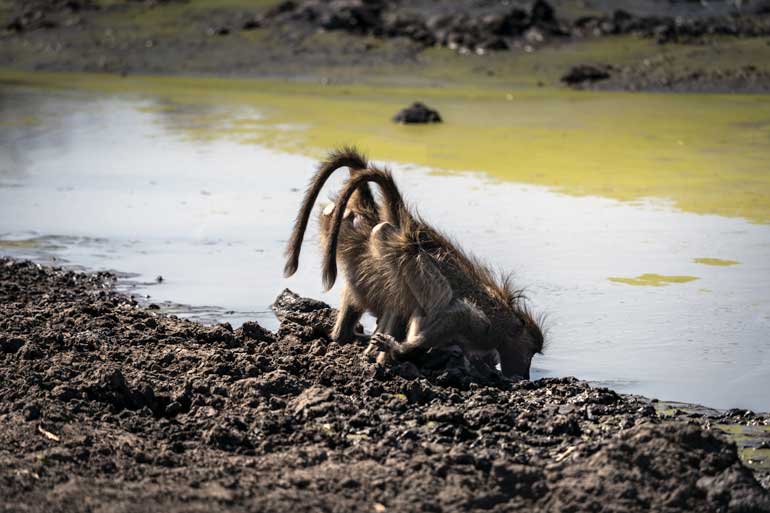
We are looking forward to continuing our Overlanding Africa trip and sharing many more memorable moments with Africa’s wildlife.
Are you following us on Social Media? join us on Instagram and Facebook.
If you enjoyed this post Share it on Social or pin it and save it for later.
PLANNING YOUR TRAVELS?
These are the travel resources we recommend and use when planning our trips.
- 🚘 Car Hire: We use DiscoverCars.com
- Motorhome/Campervan Rental: We highly recommend the Motorhome Republic
- 🛏 Book Accommodation: We use Booking.com to find accommodation that suits our budget
- 🐶 Pet Sitting/Pet Sitters: Check Out TrustedHousesitters here (Use our Discount code: LIFEJOURNEY25 for 25% off. )
- Activities and Experiences: Get Your Guide and Viator
- Travel Insurance: Safetywing or World Nomads
- 🥾 Travel Gear and Accessories: Check out our top picks here — Lifejourney4two page on Amazon
For a more thorough list visit our Travel Resources page here.

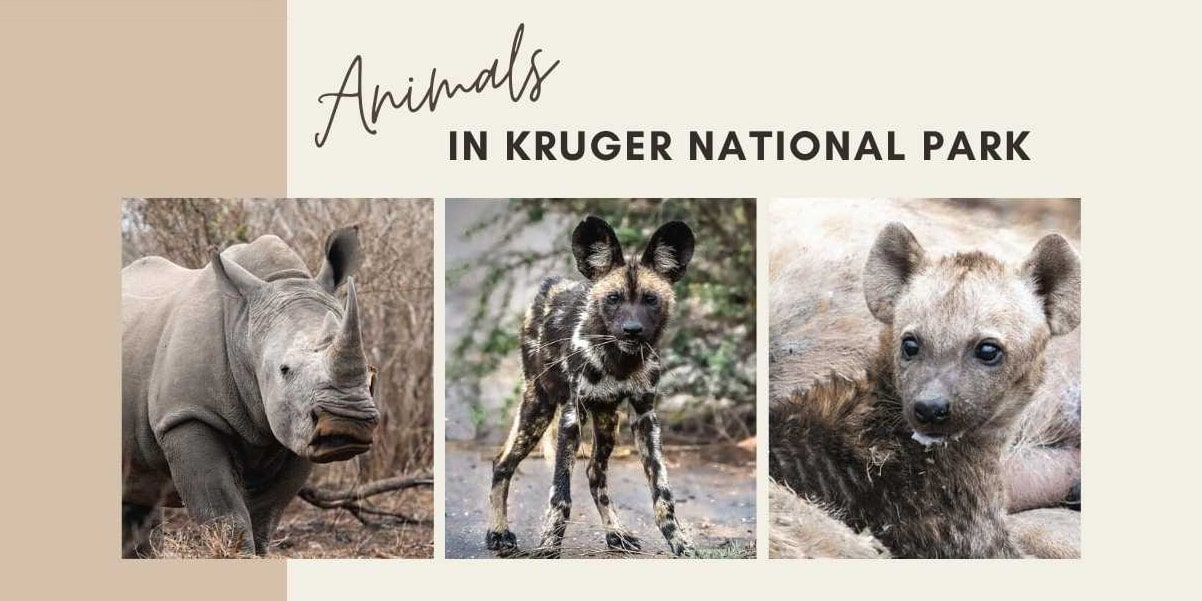
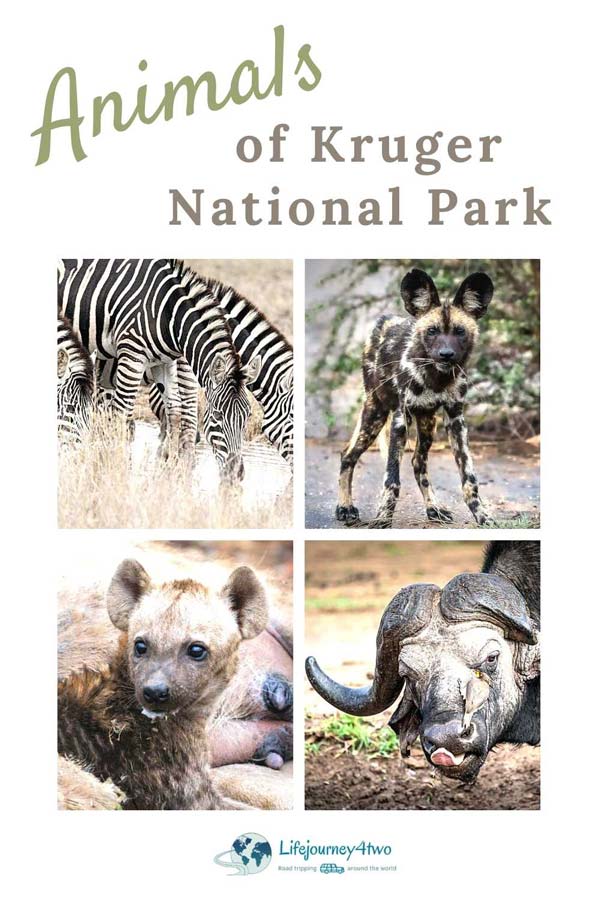
What a wonderful blog post! We loved seeing the pics of all the animals. This post reminded us of our own trip to Masai Mara. We missed the leopard in the Big 5 but saw all of the Ugly 5. 😀
Thank you for taking the time to leave a message — we’re so glad you enjoyed the post. Kruger has to be one of our favourite places in the world and can’t wait to get back to Africa to continue our overlanding trip 🙂 The Masai Mara is on our list and we still have to see a cheetah.